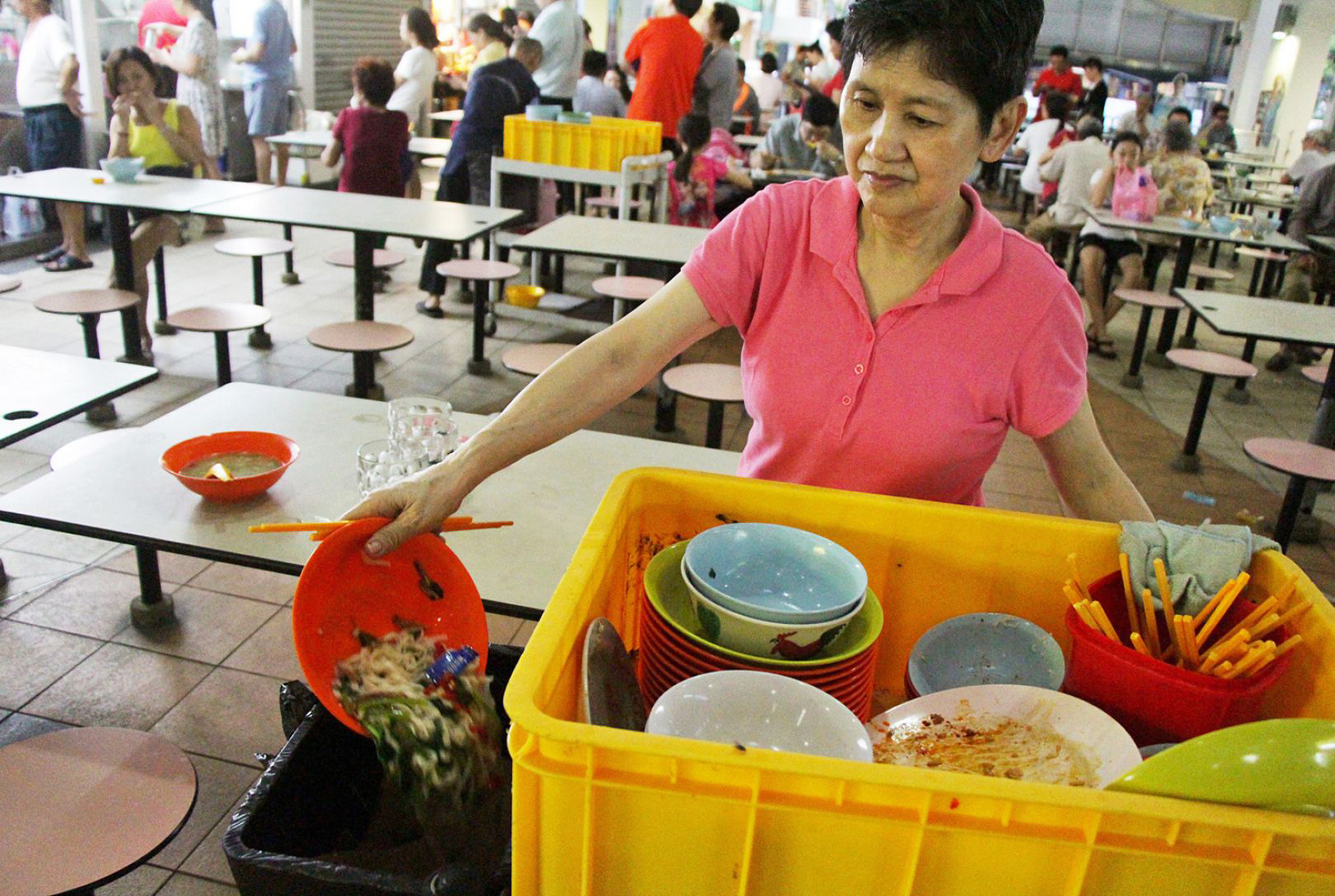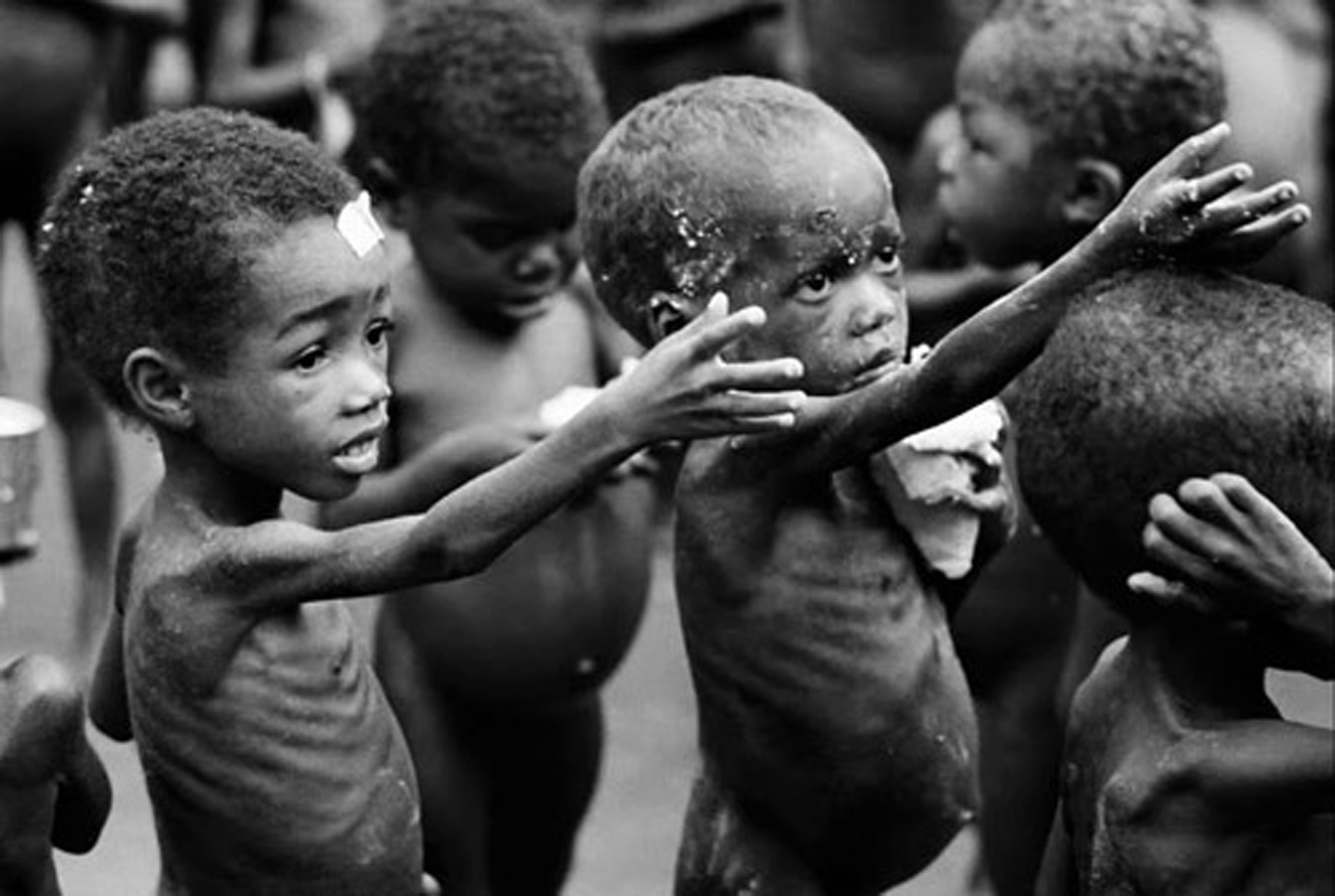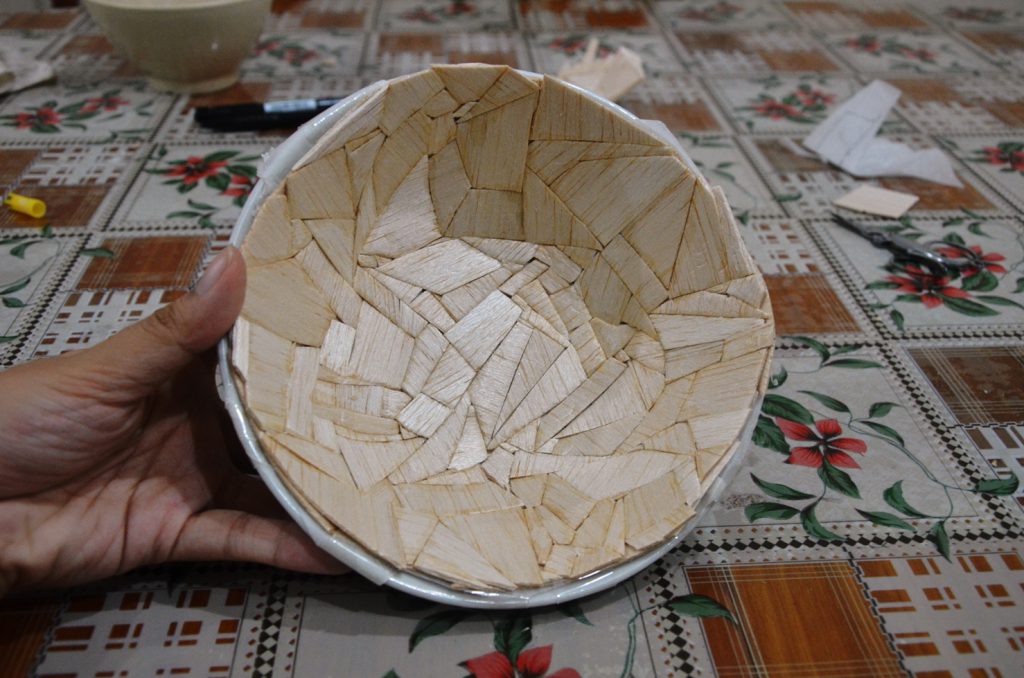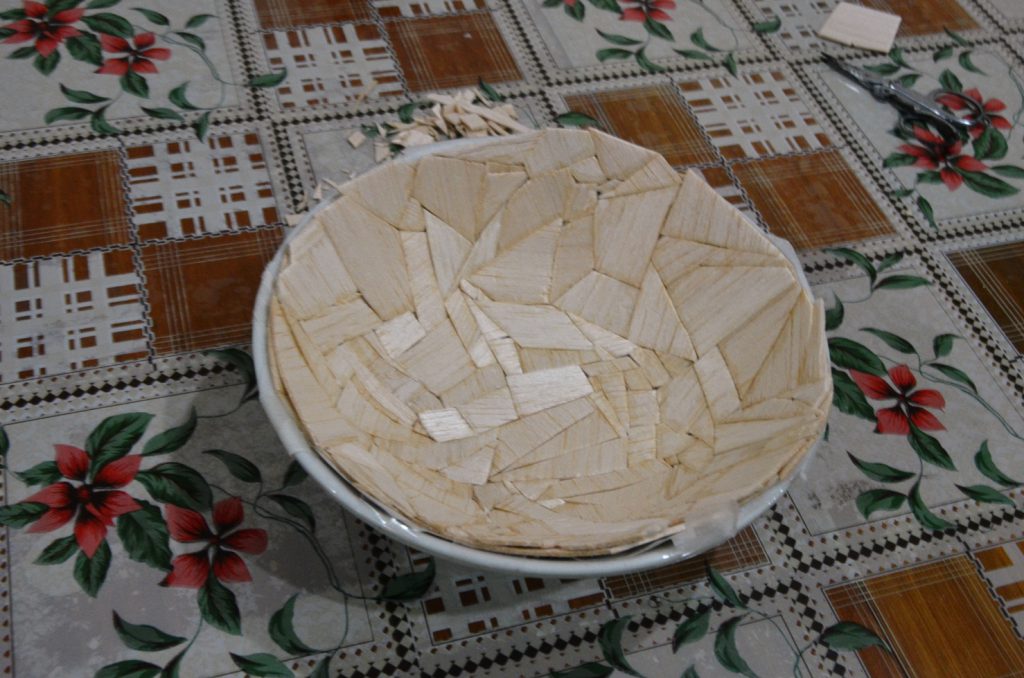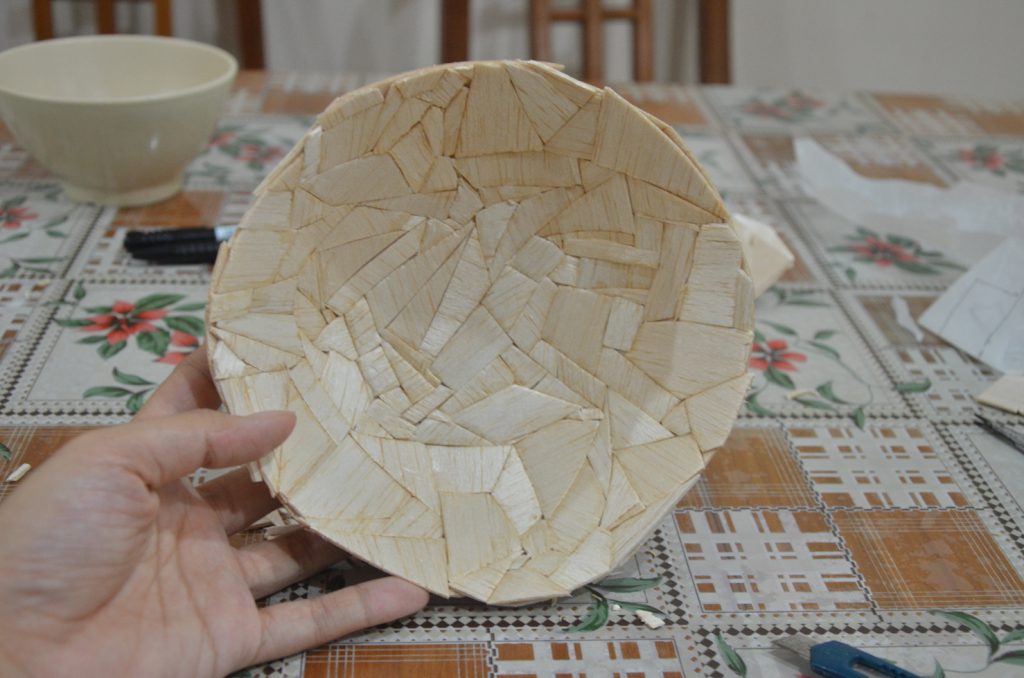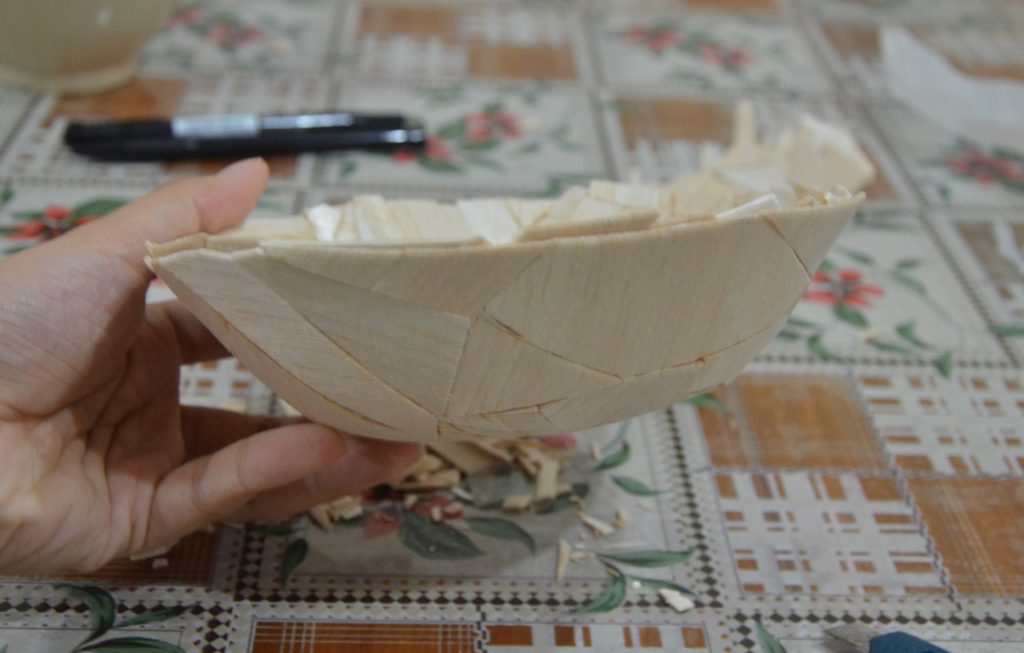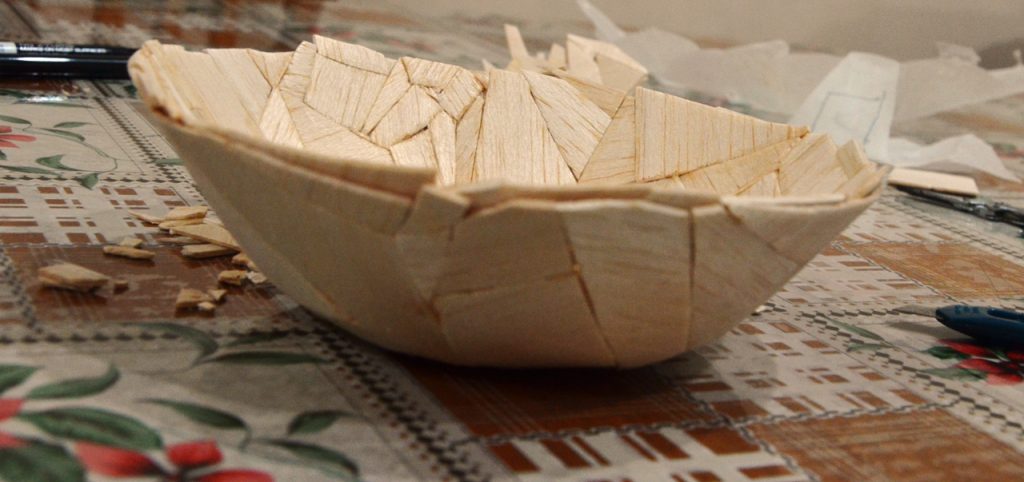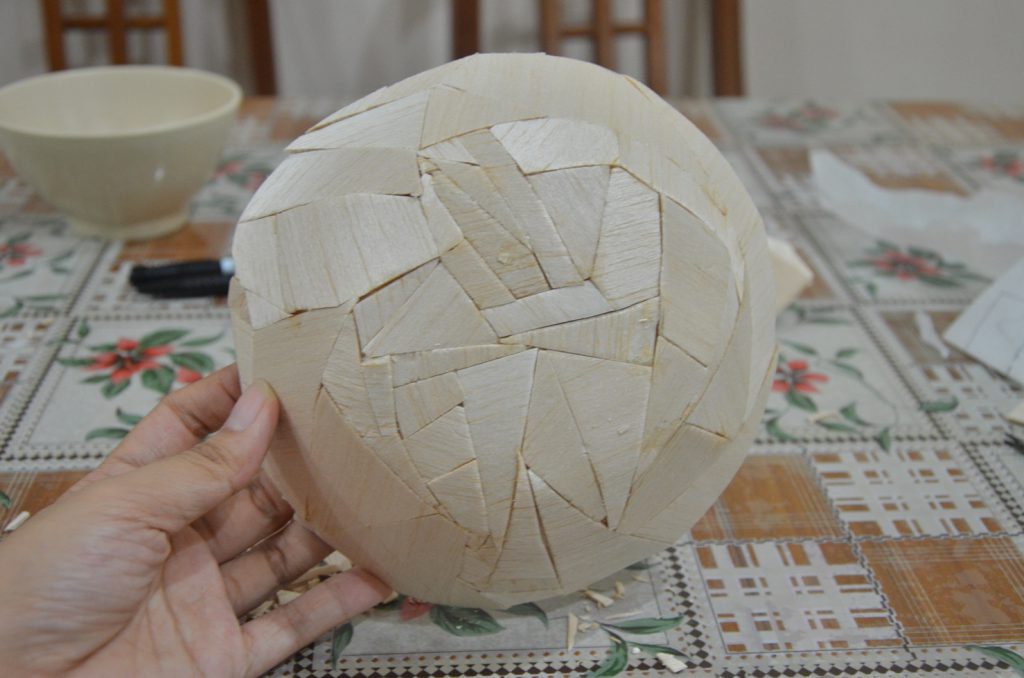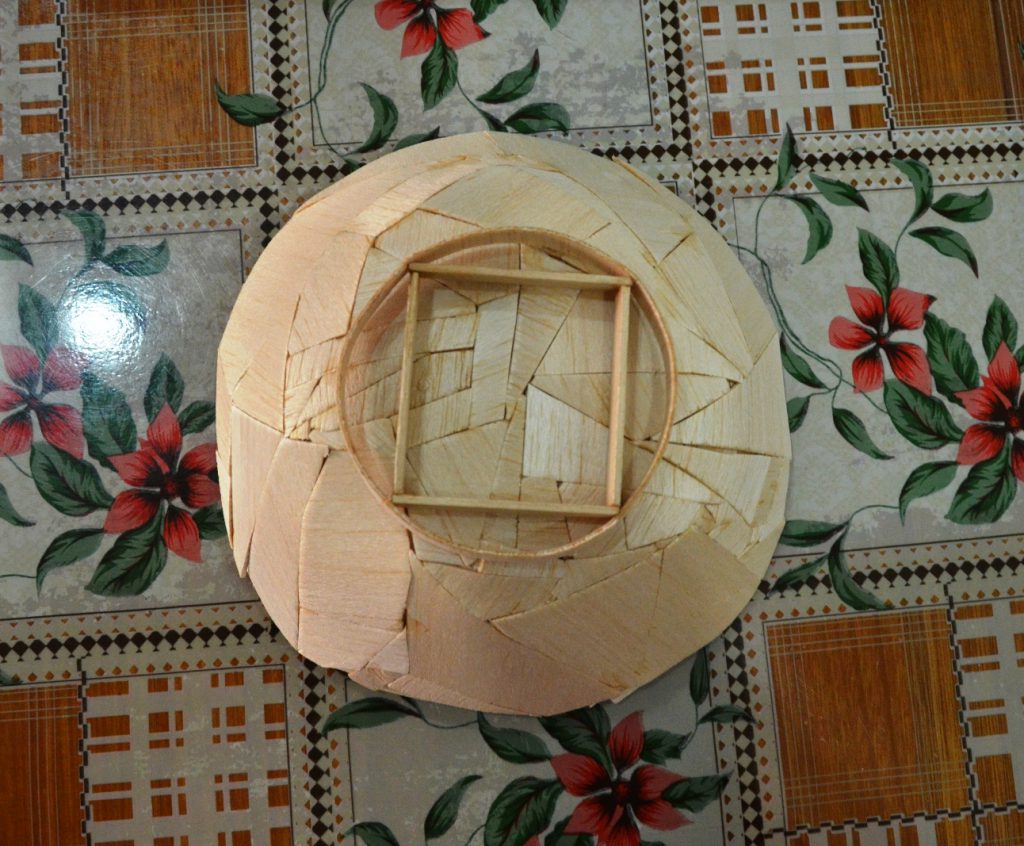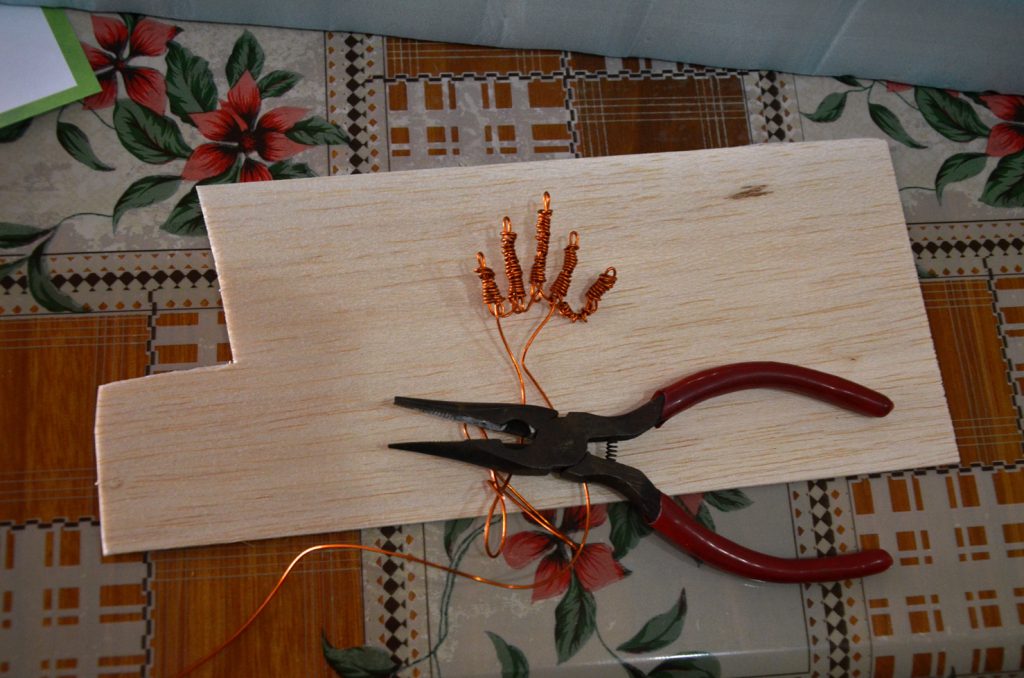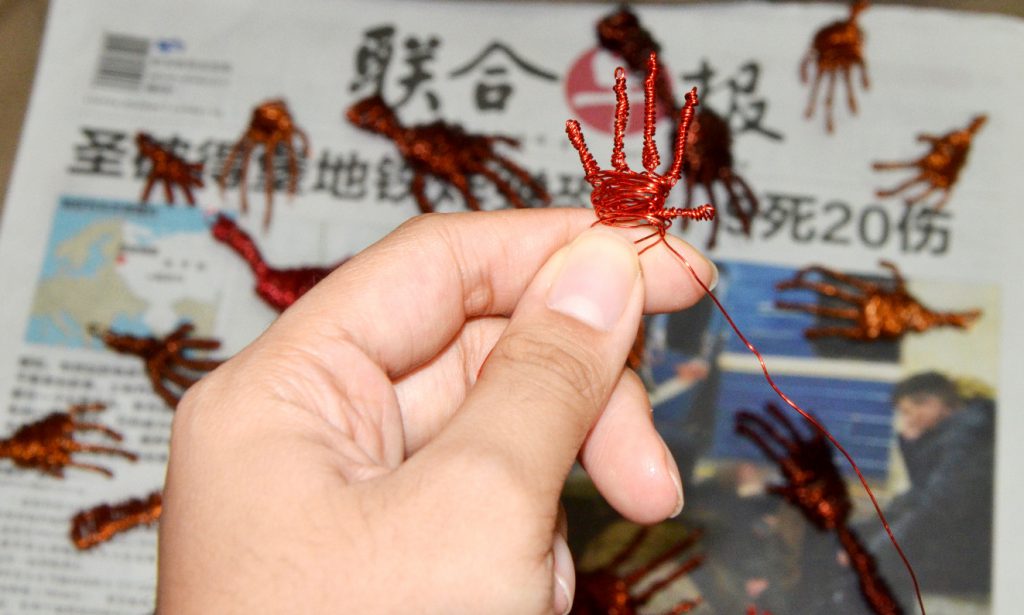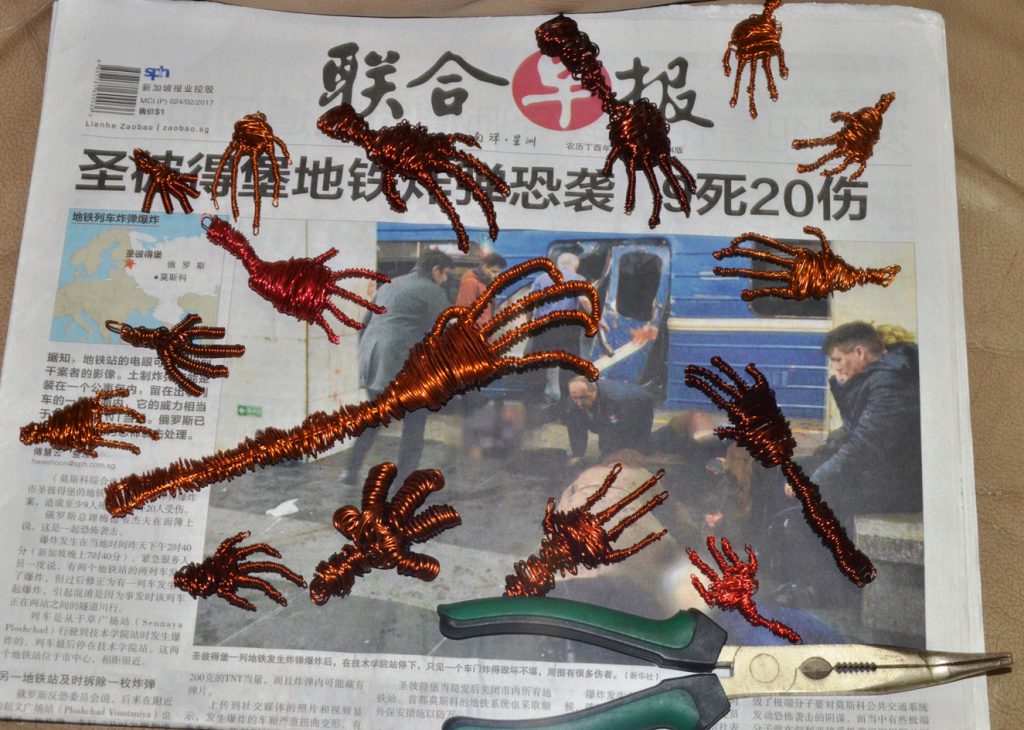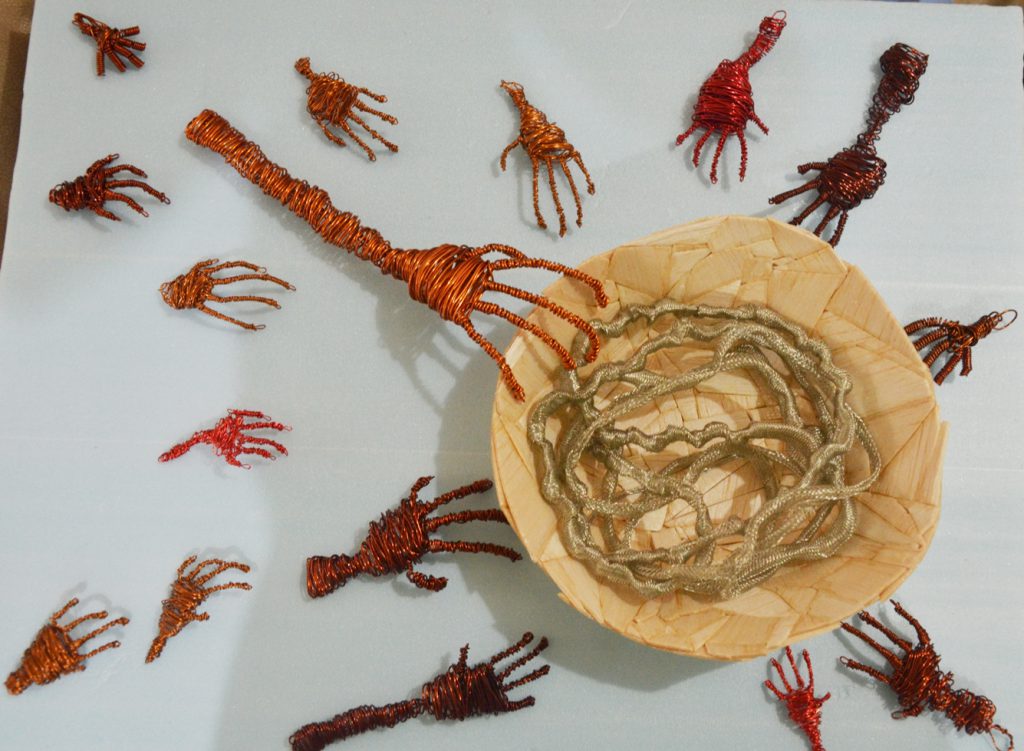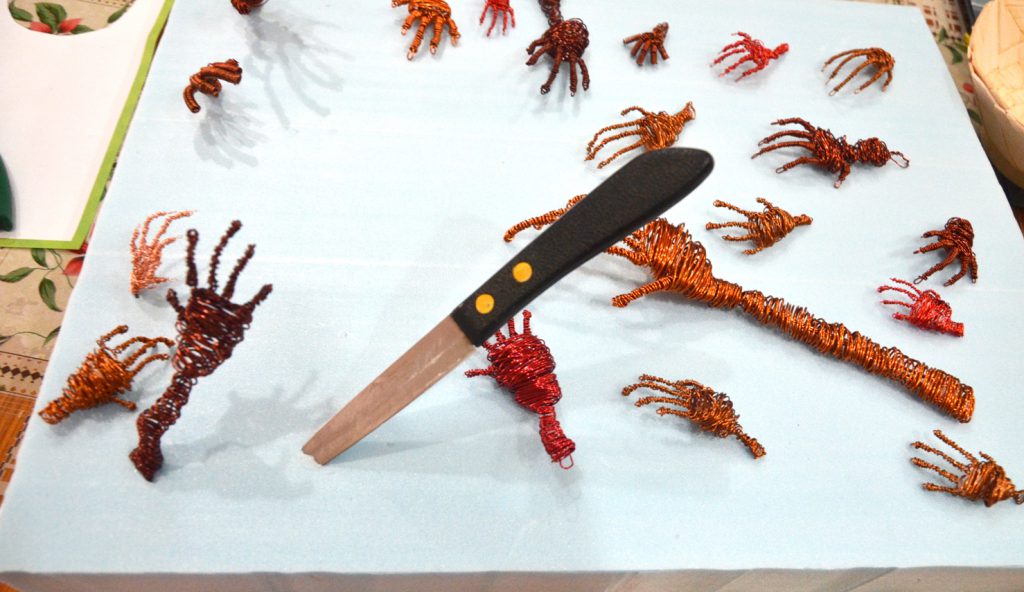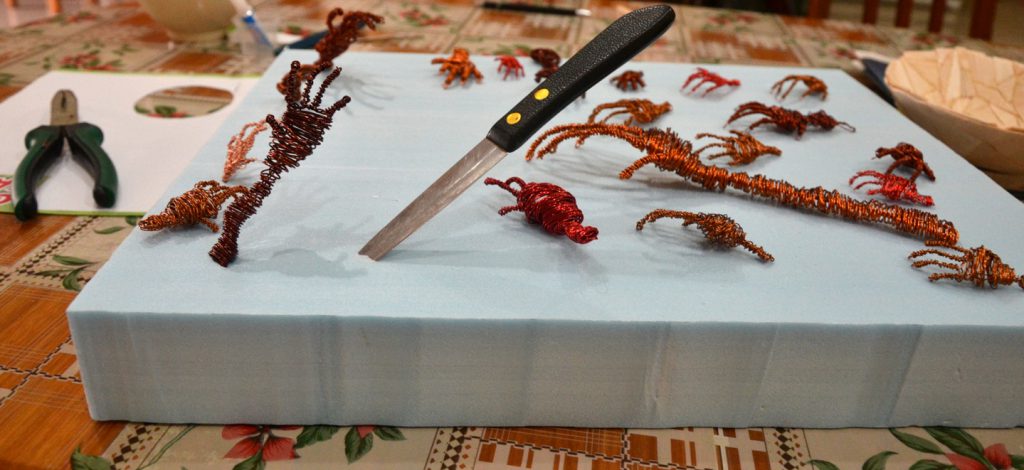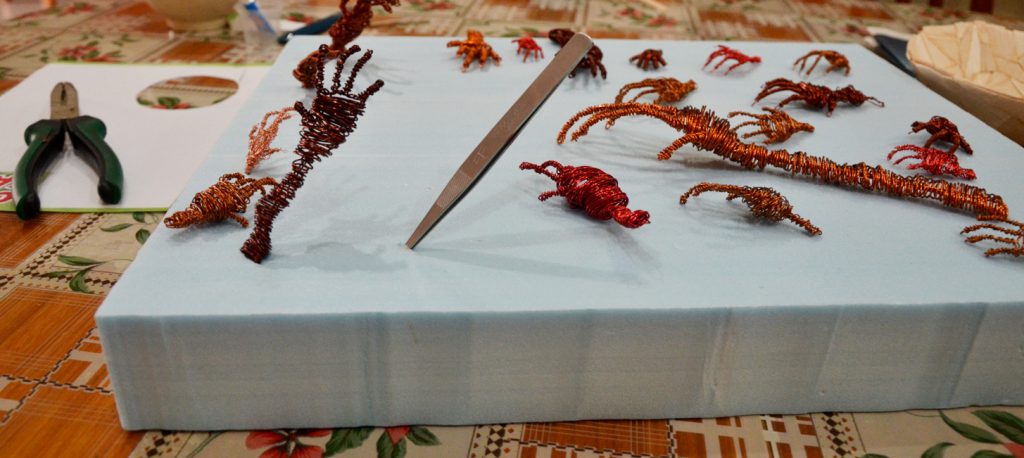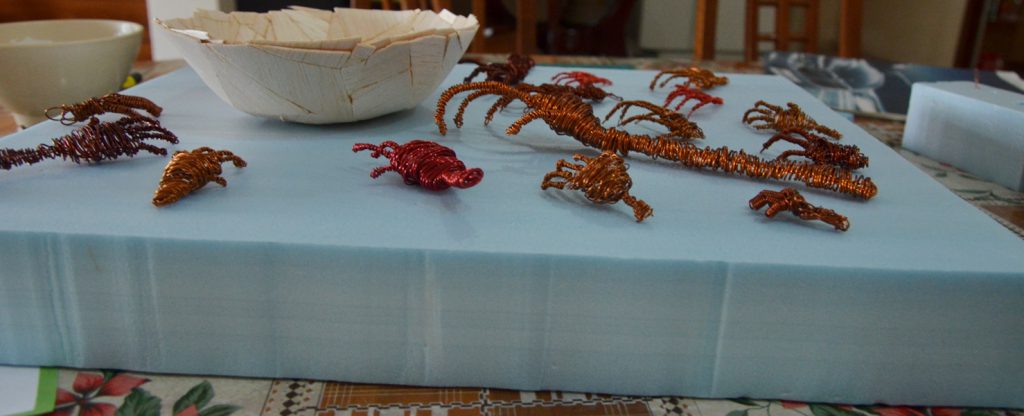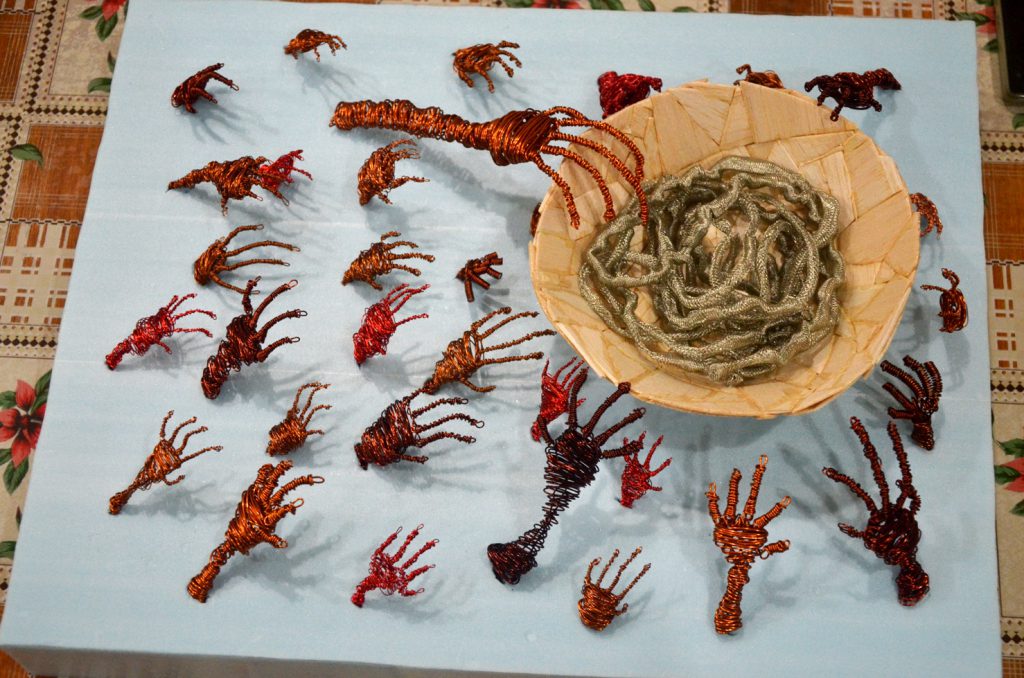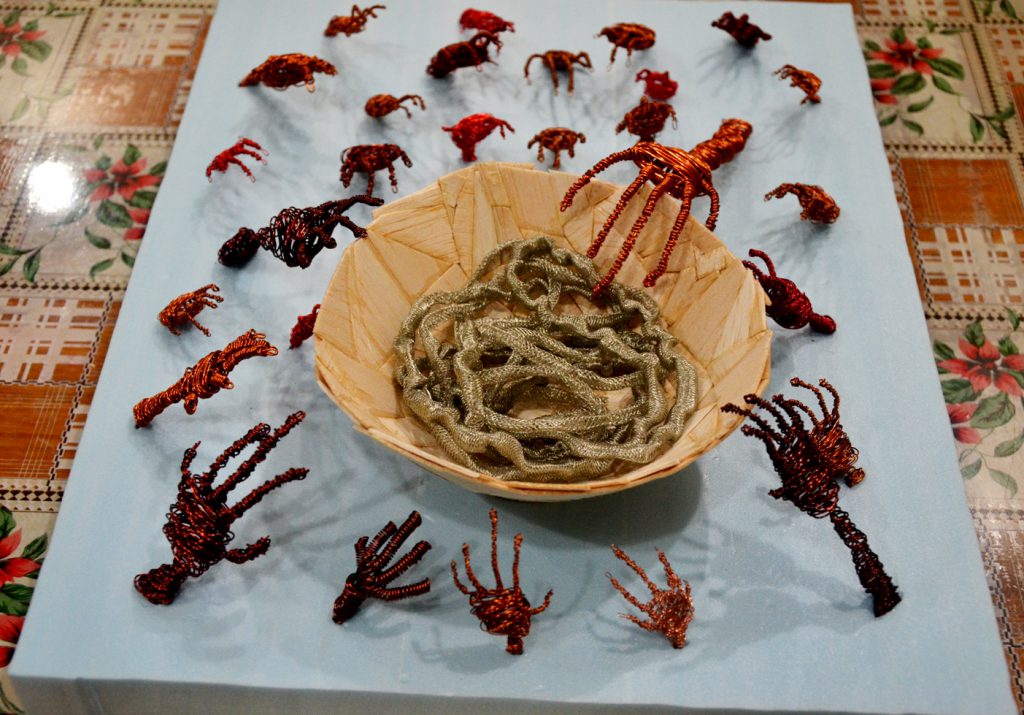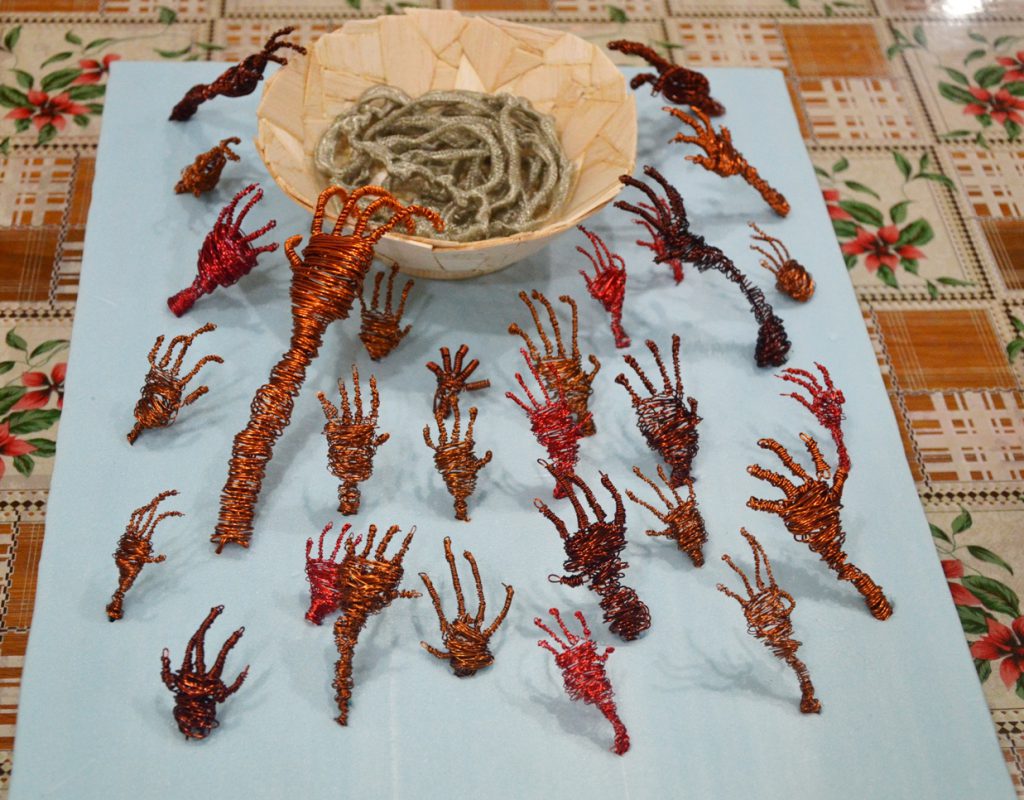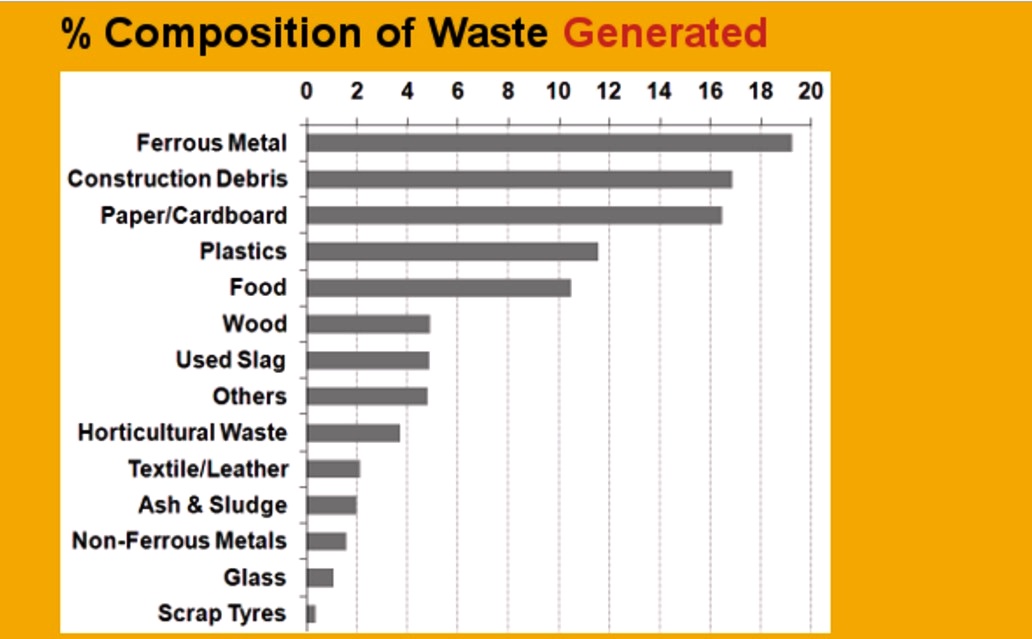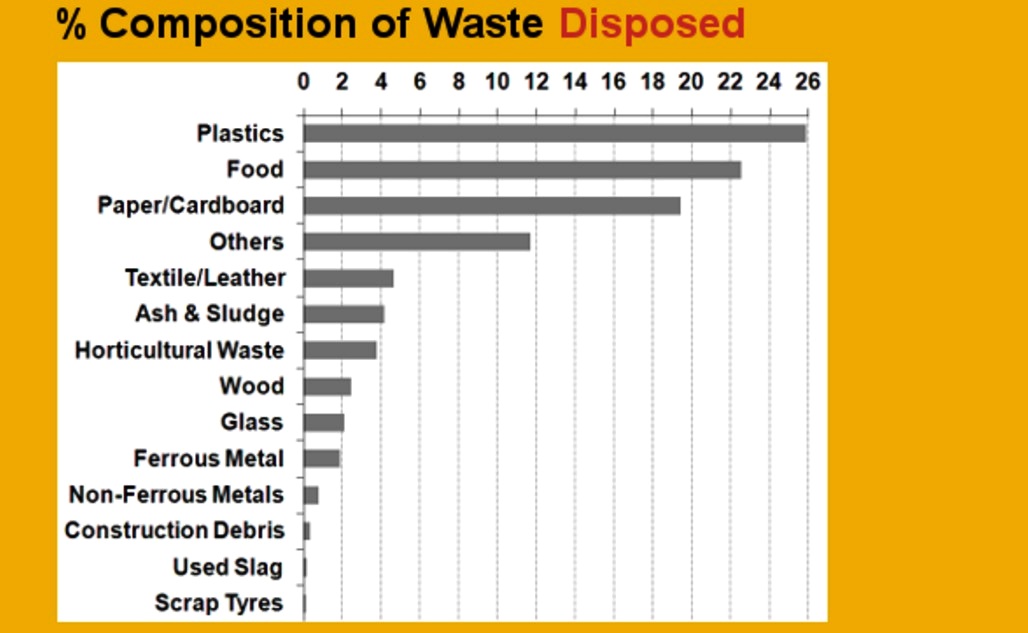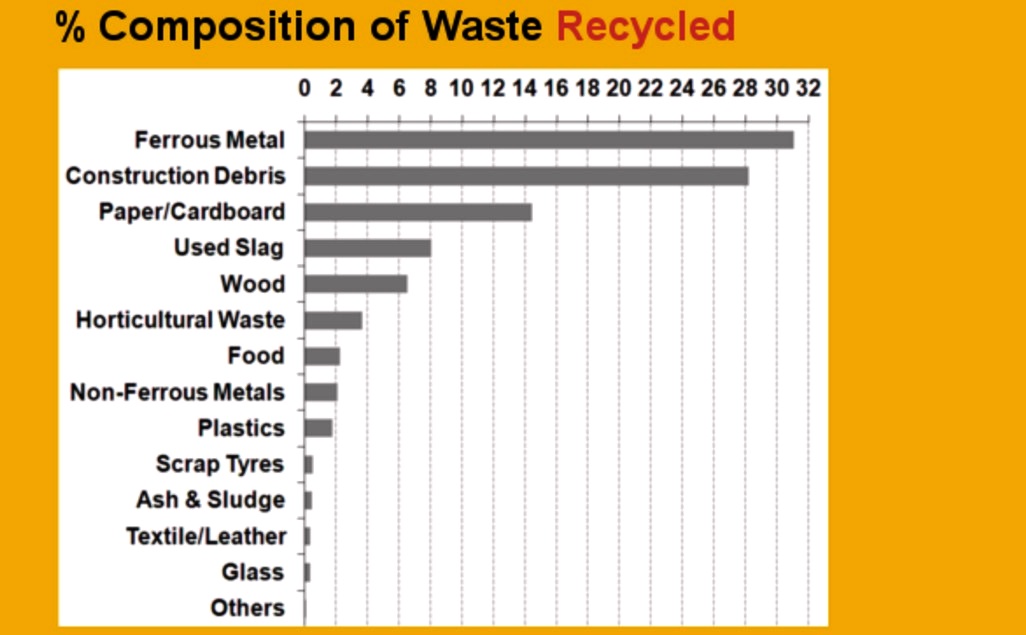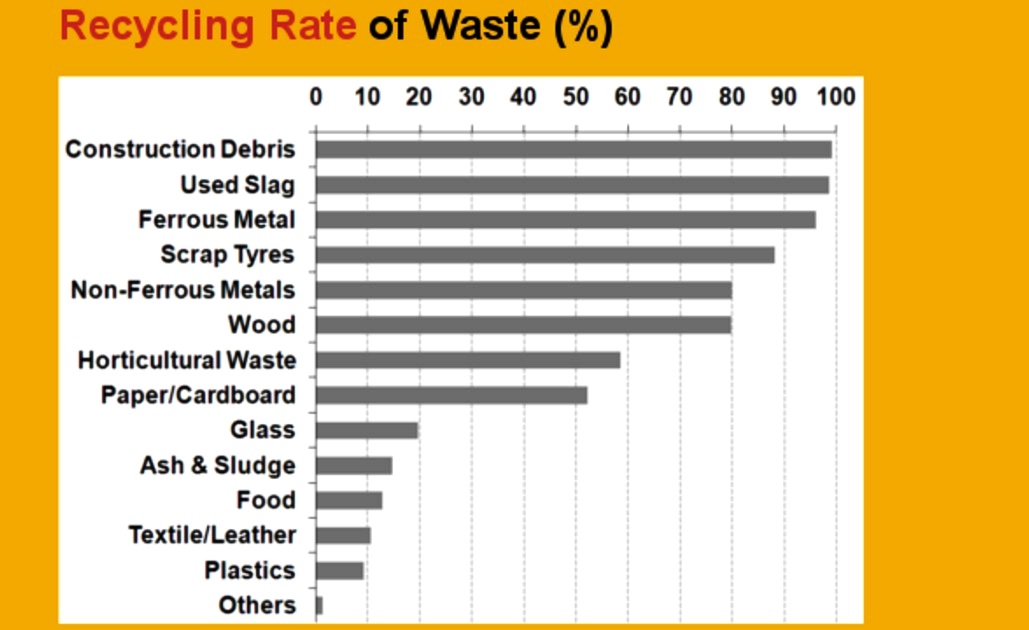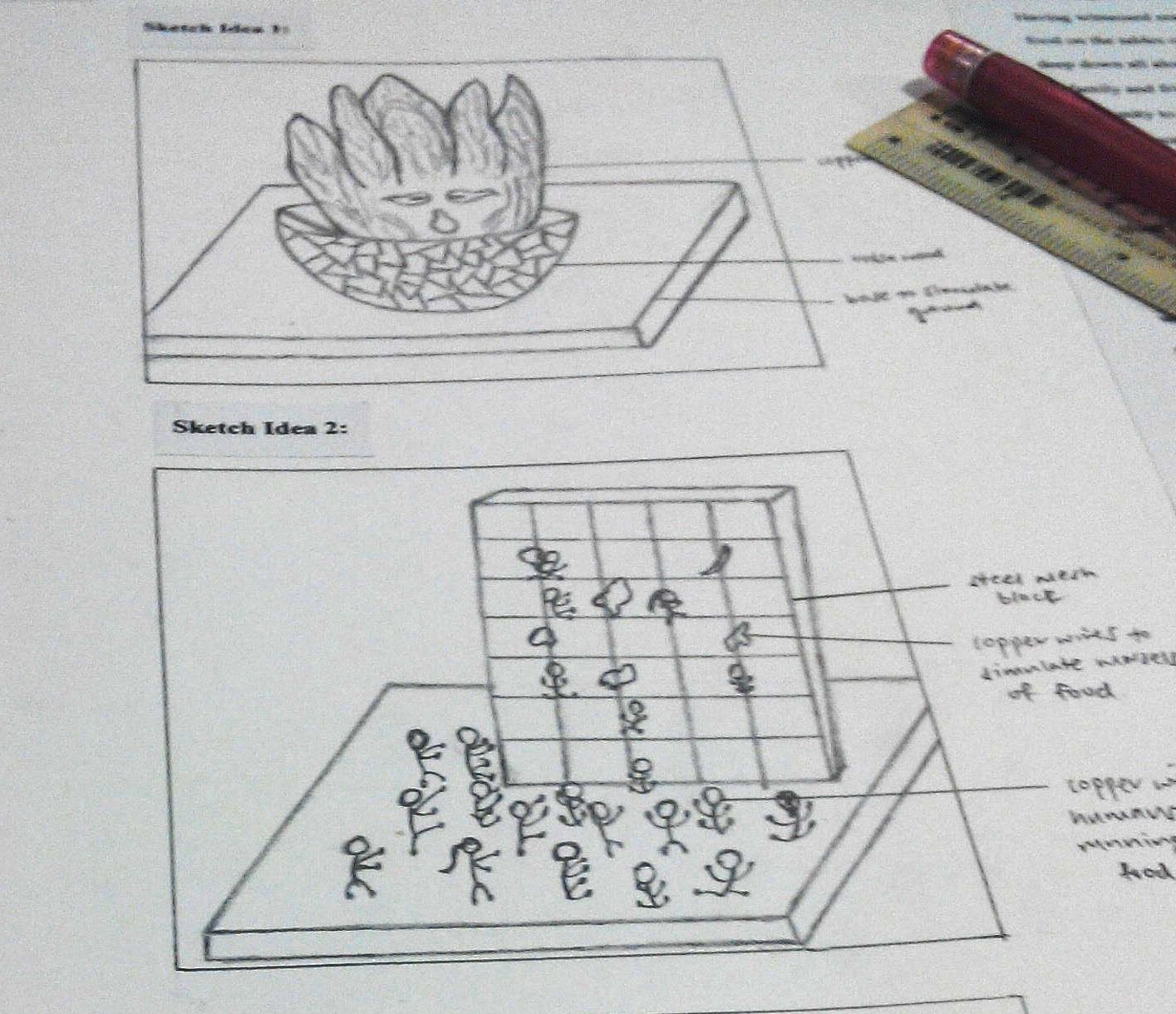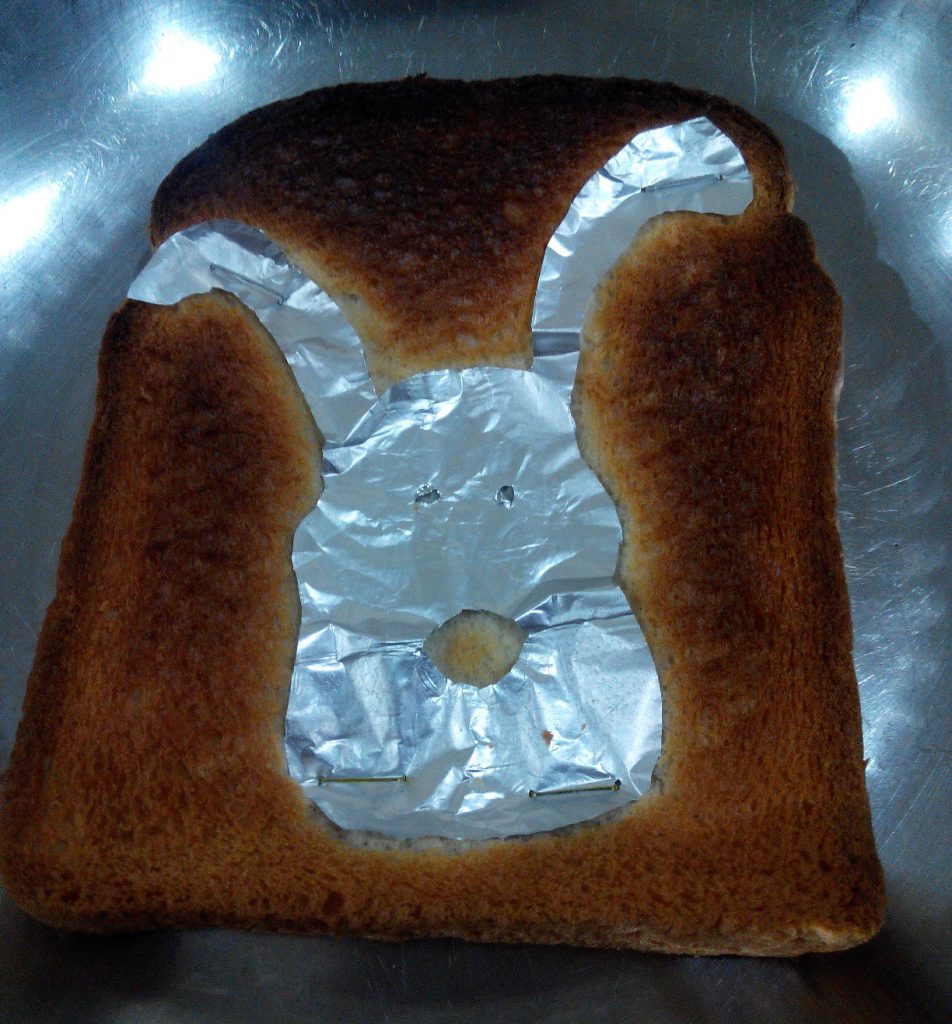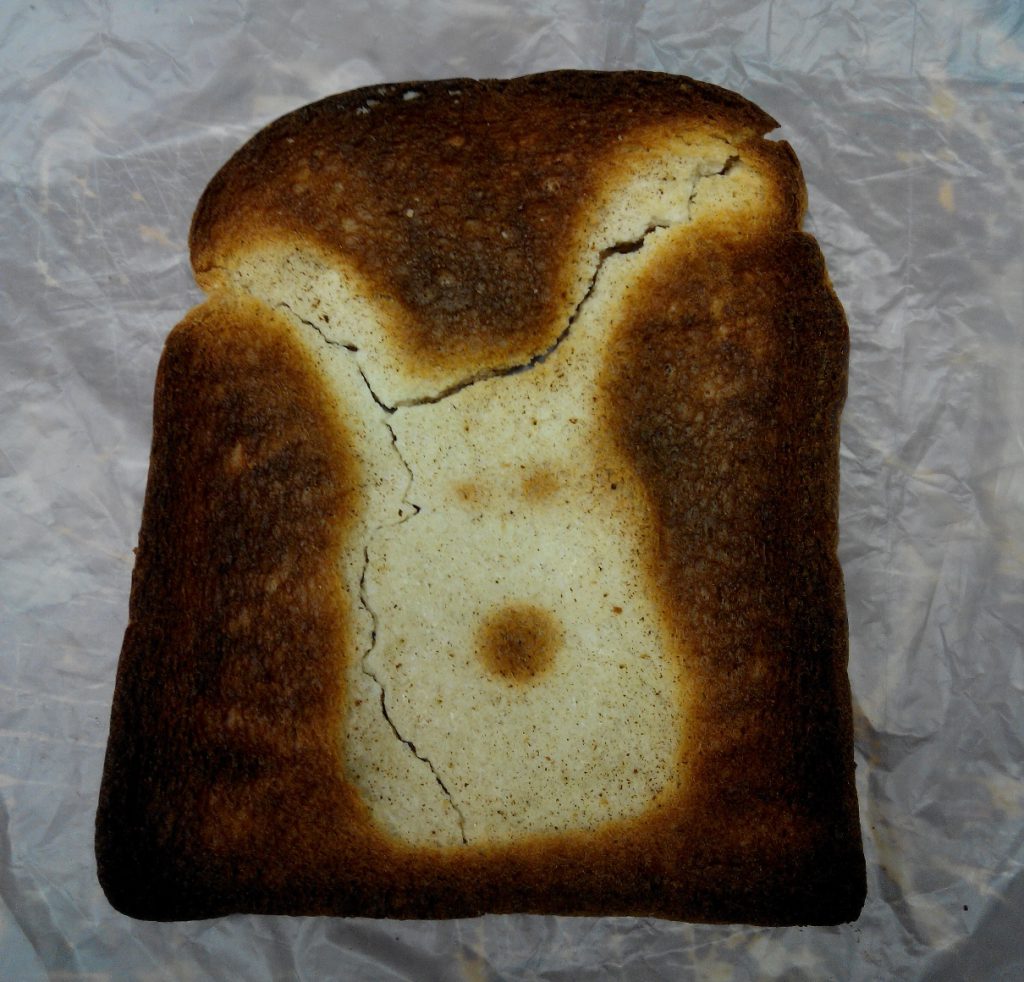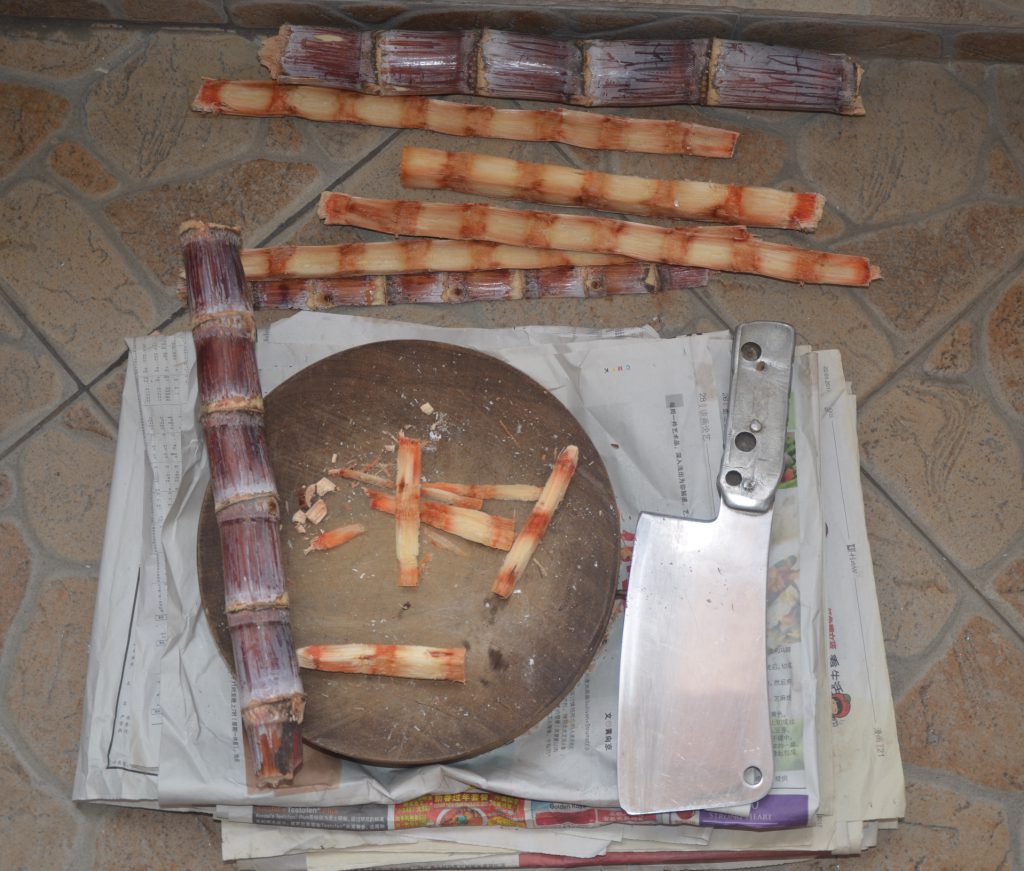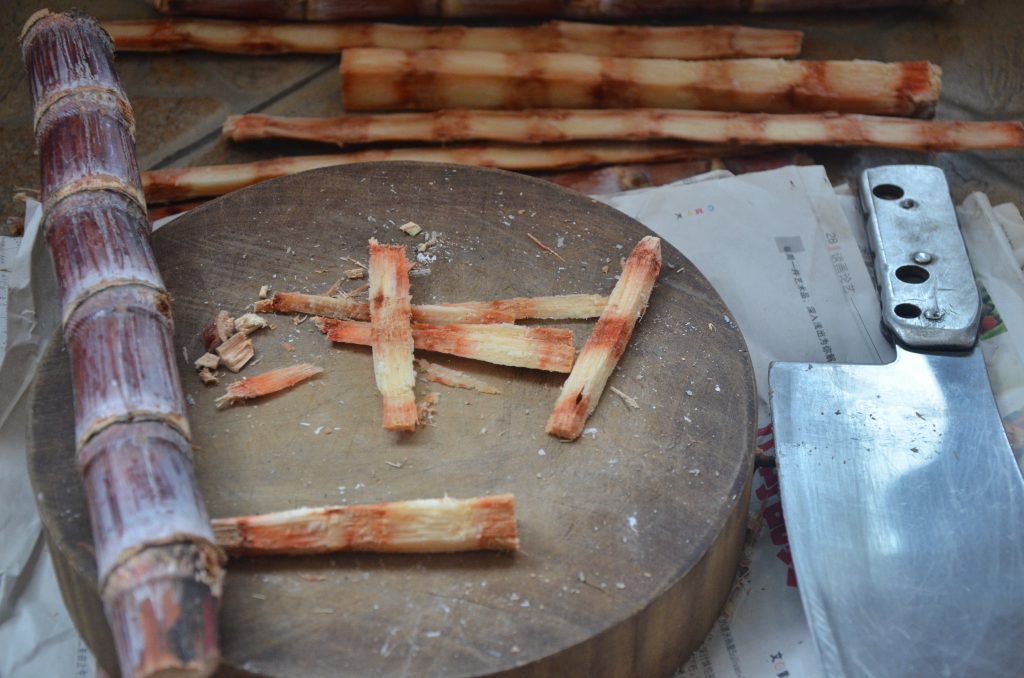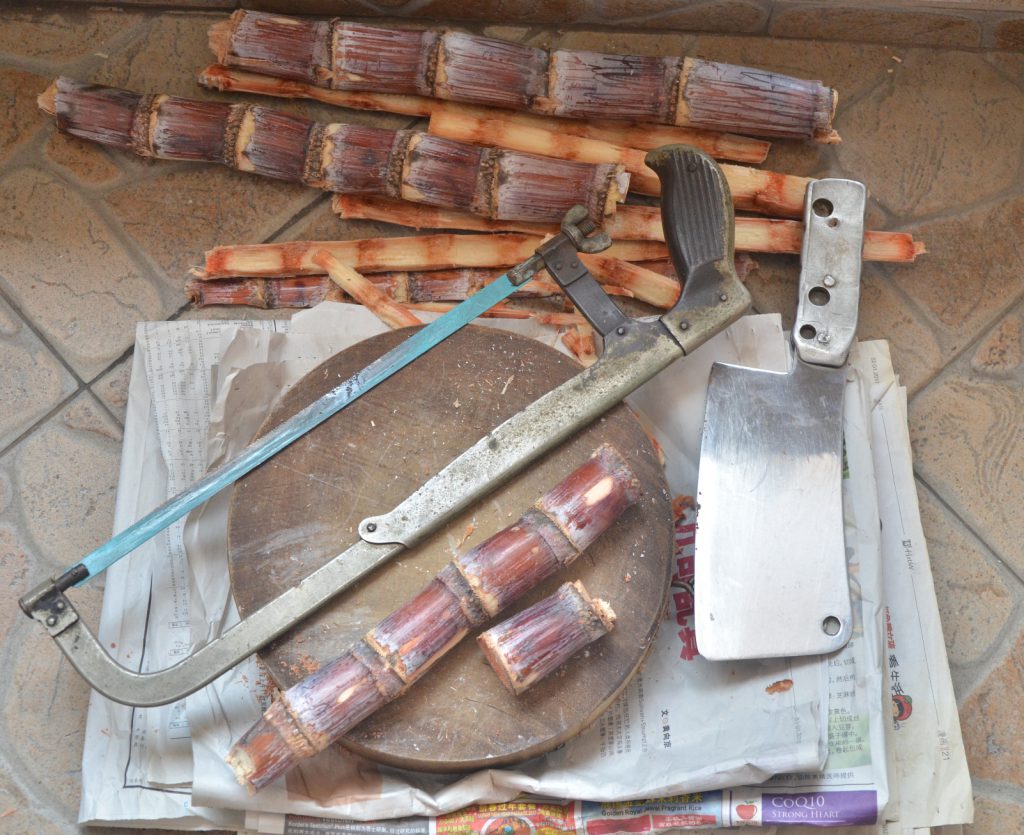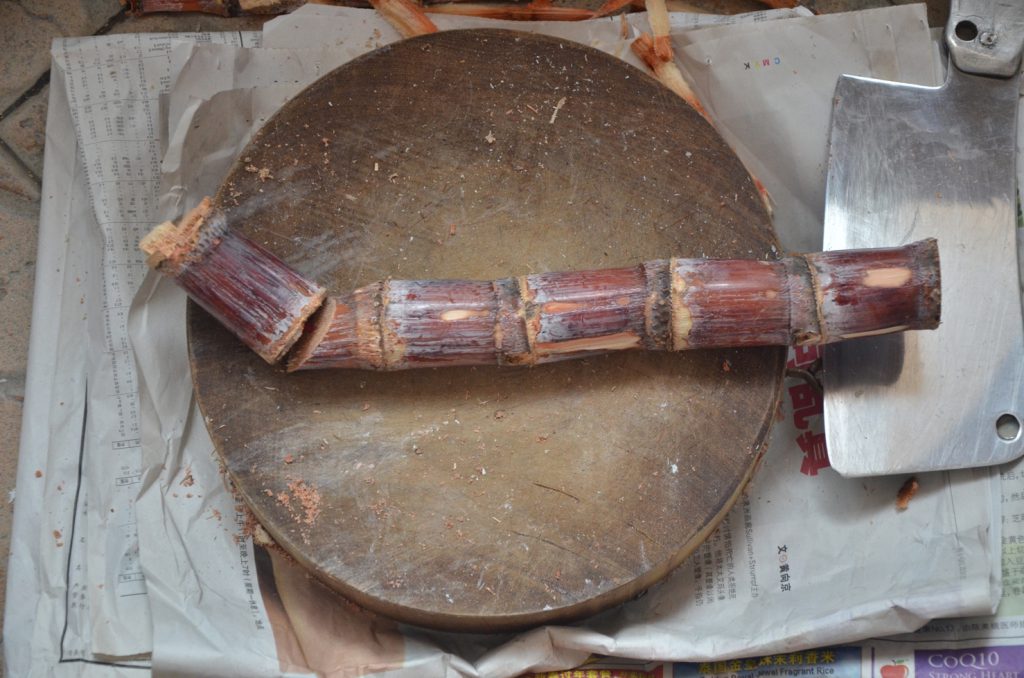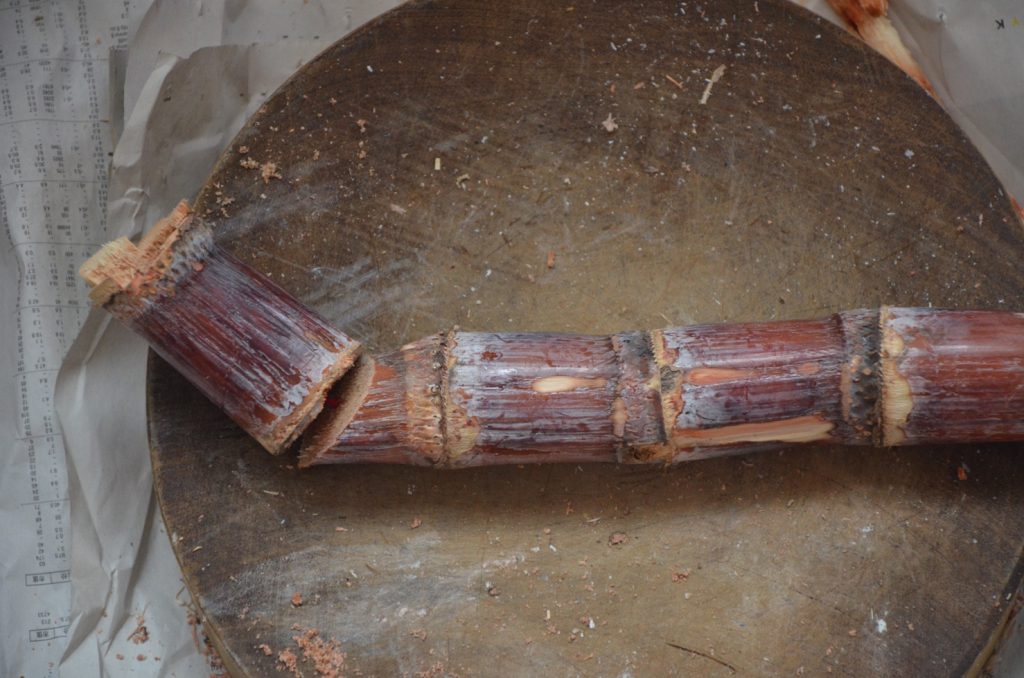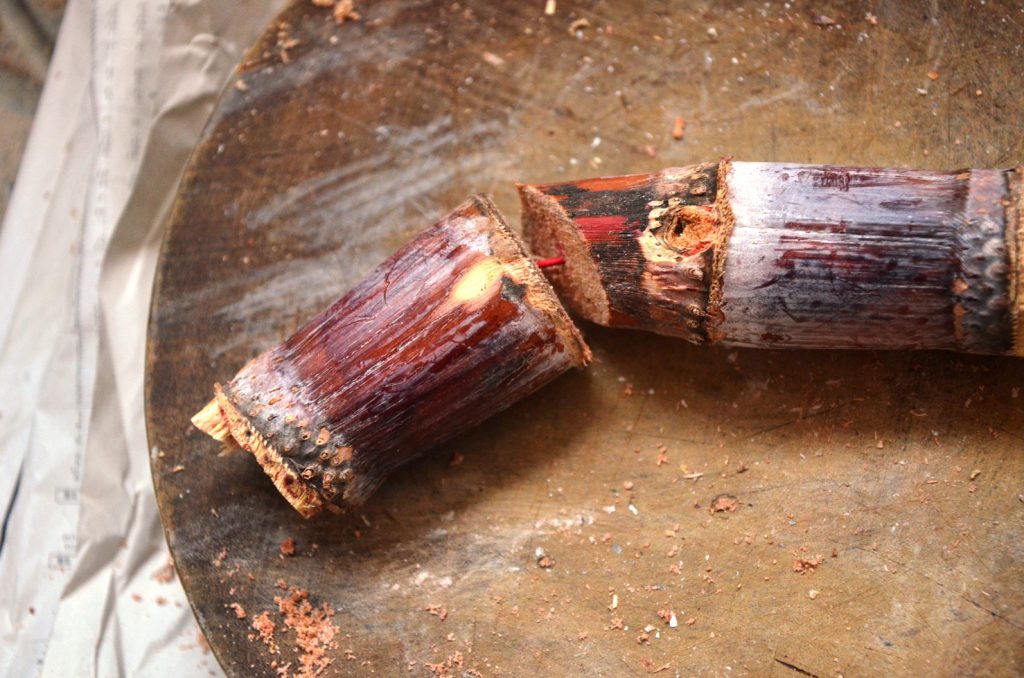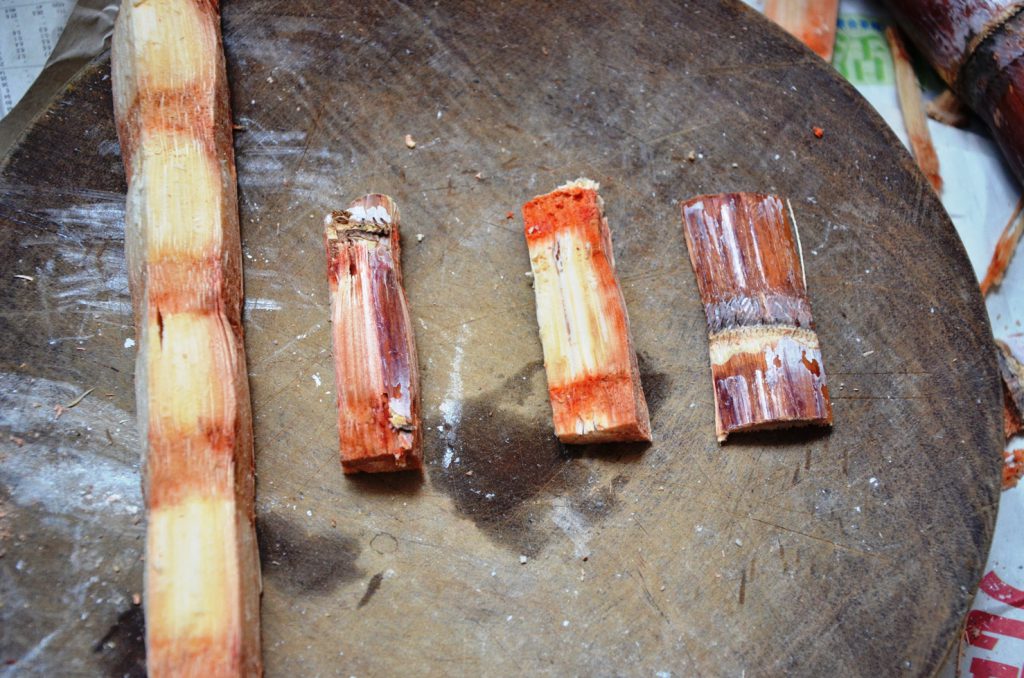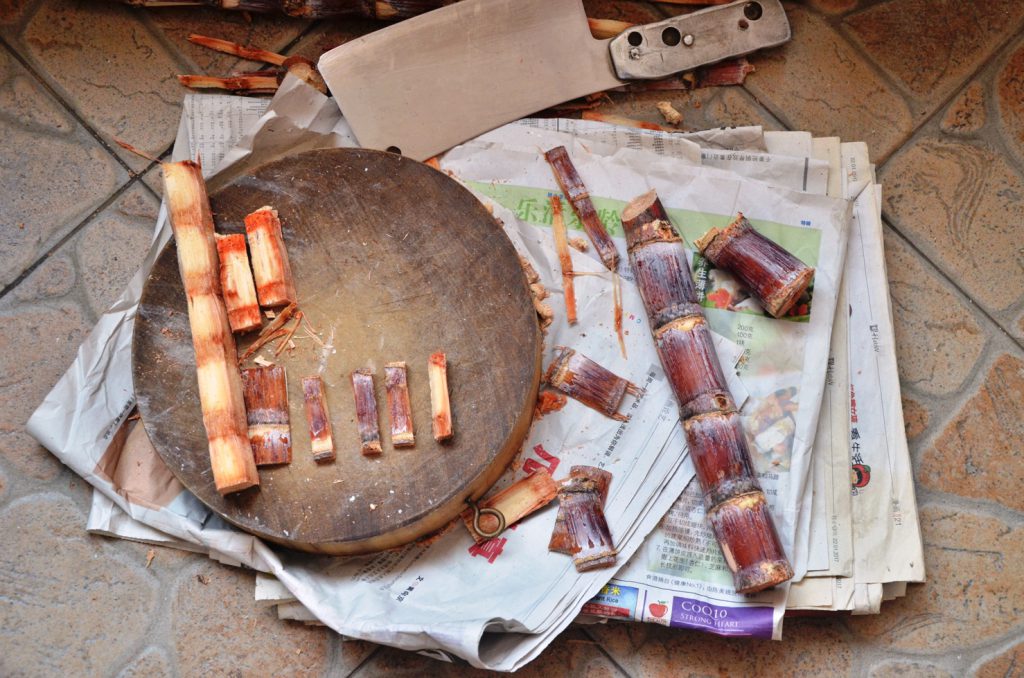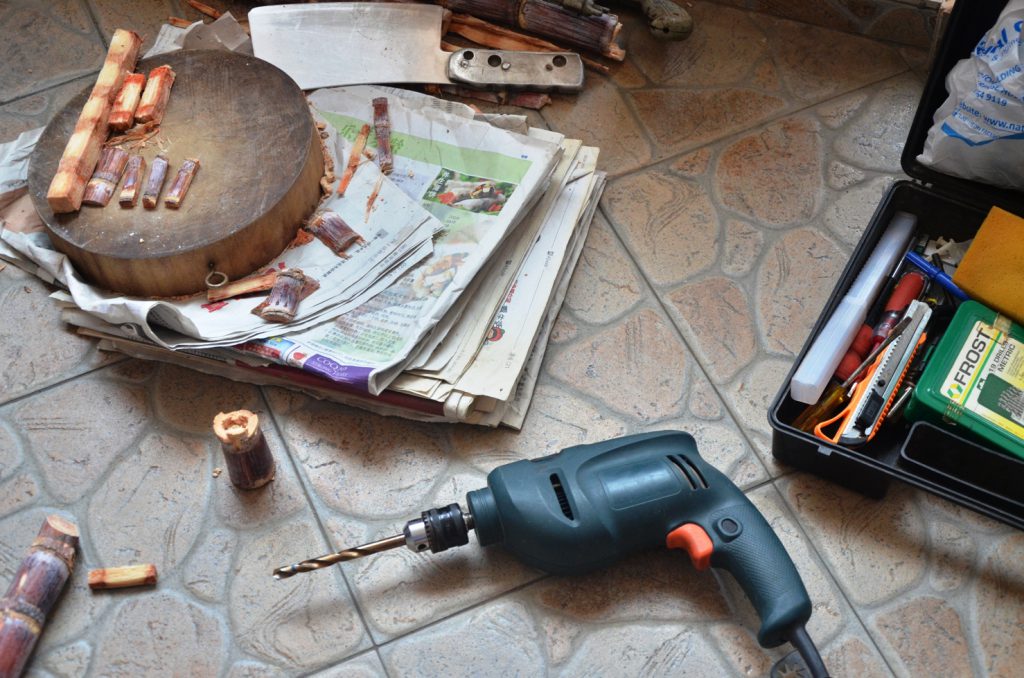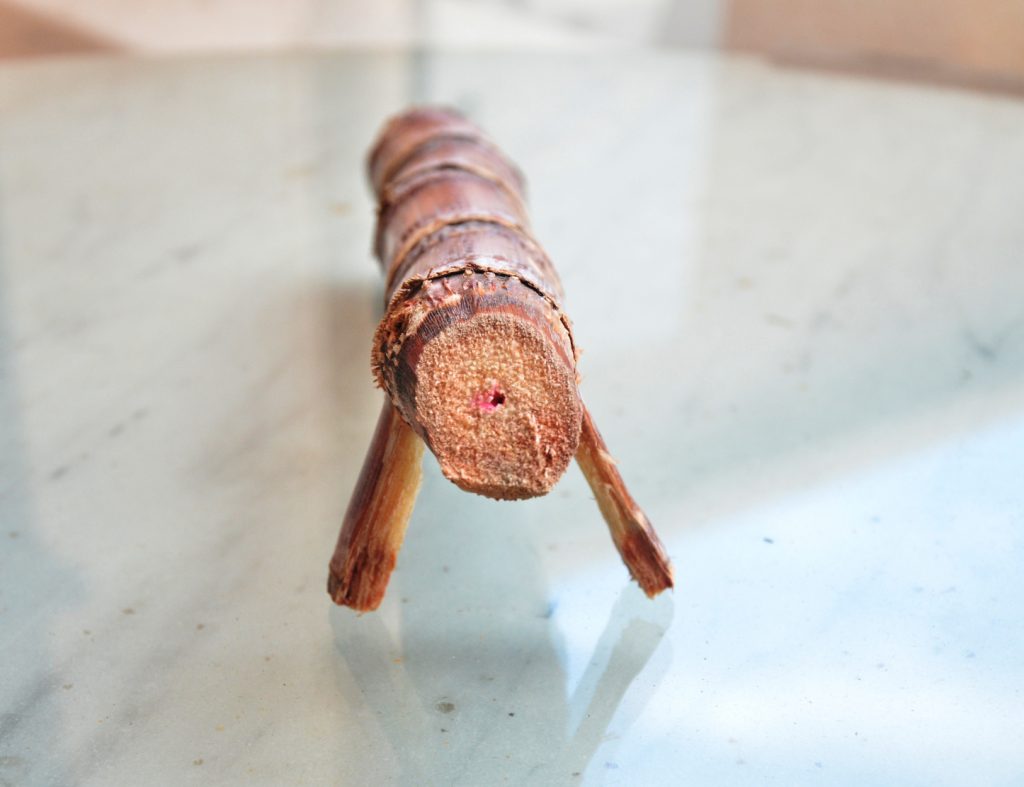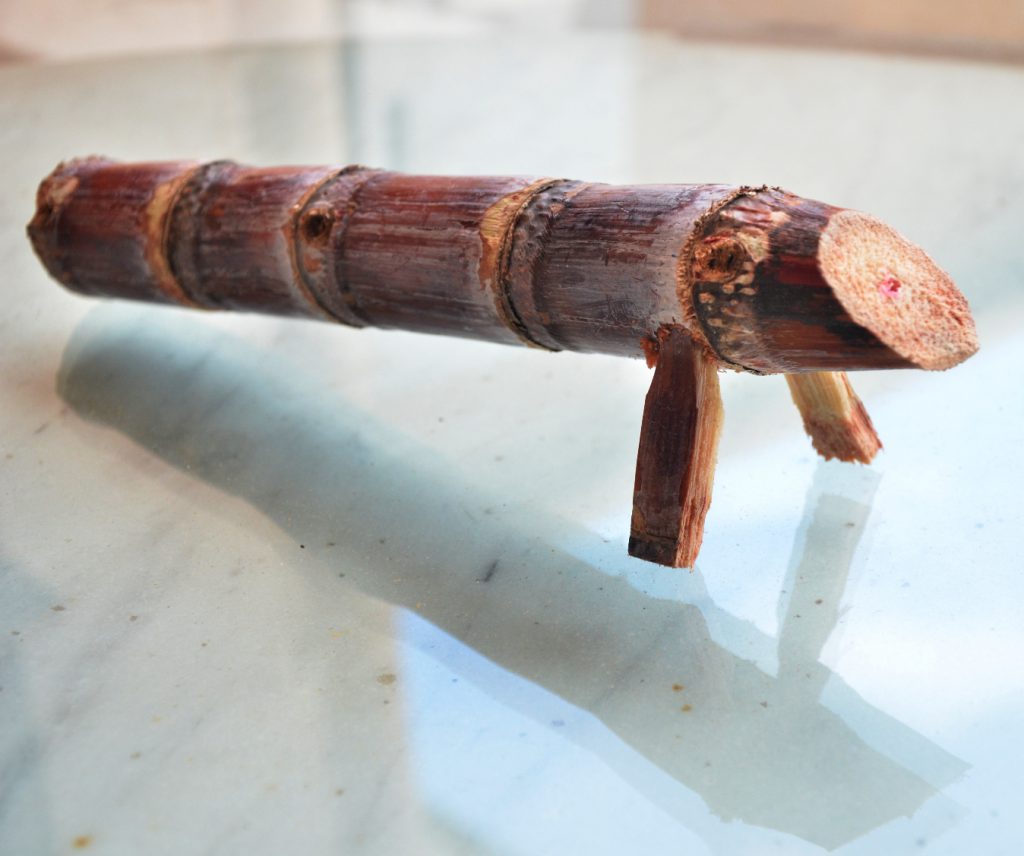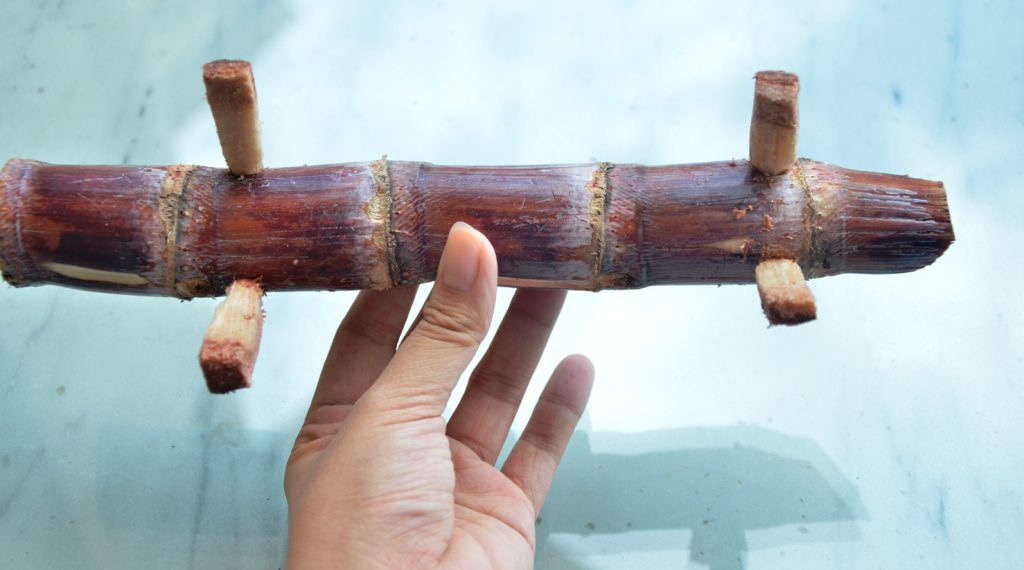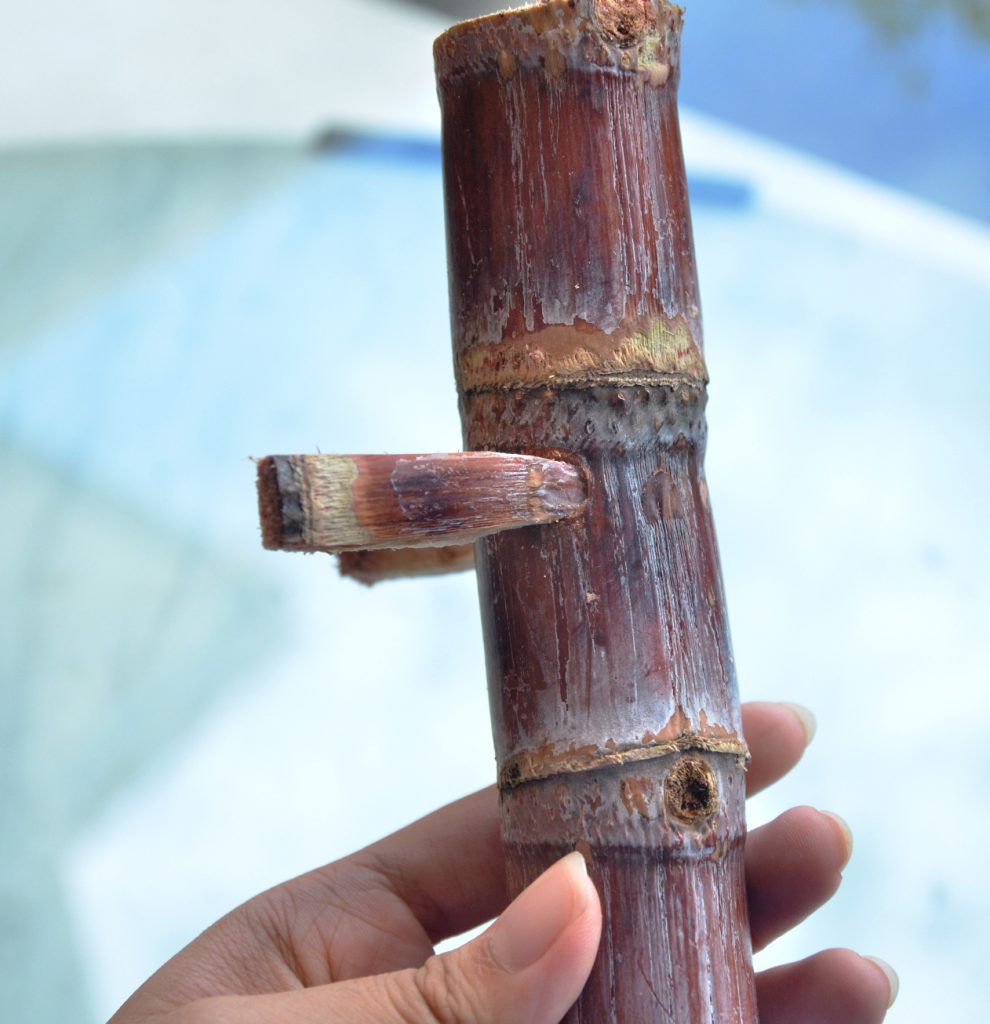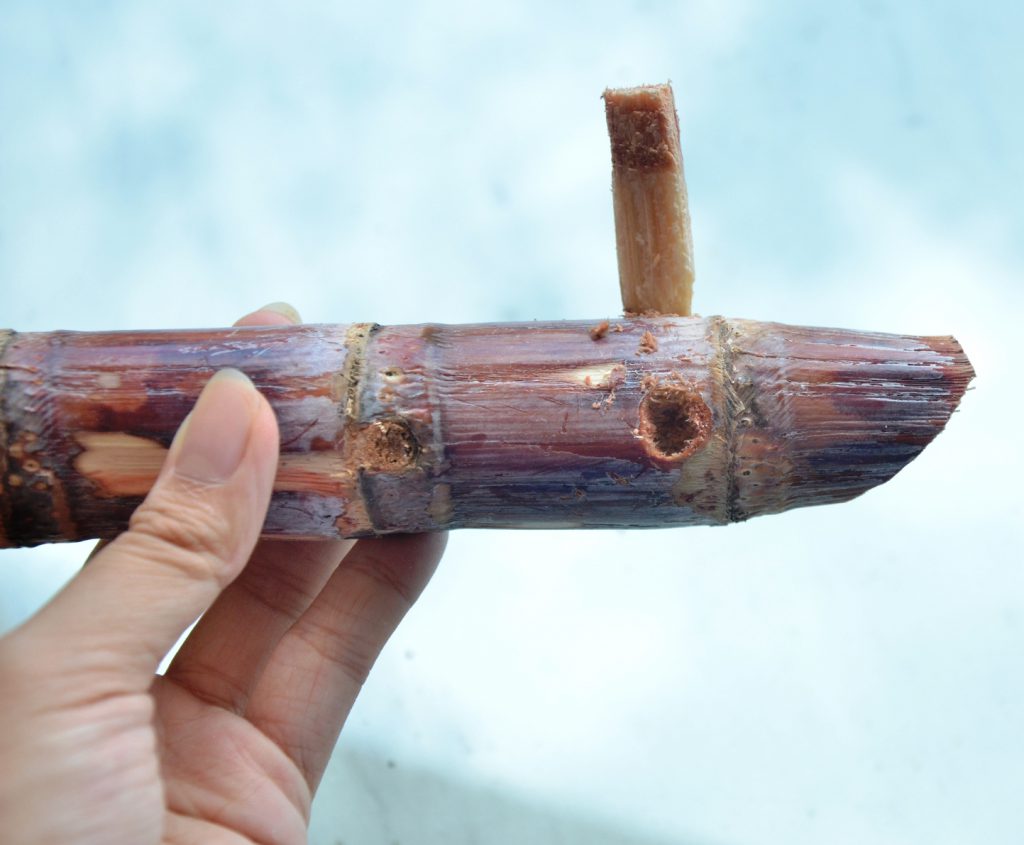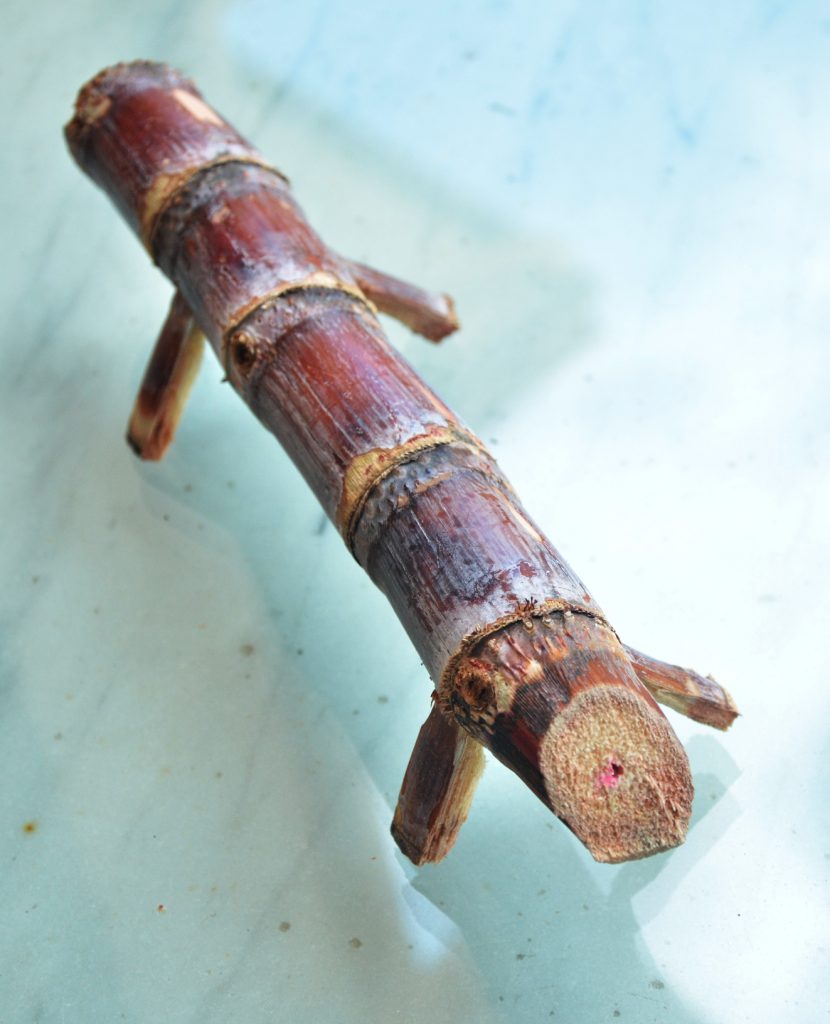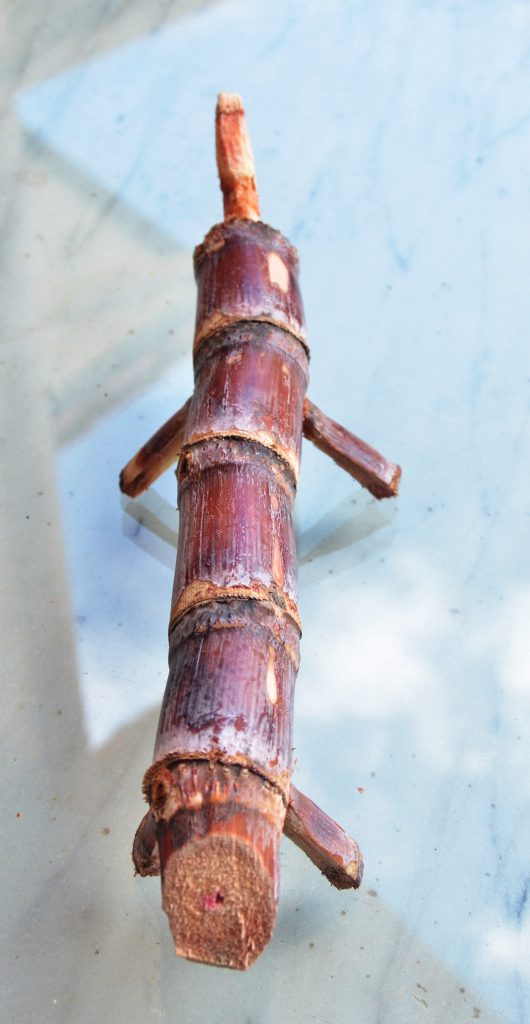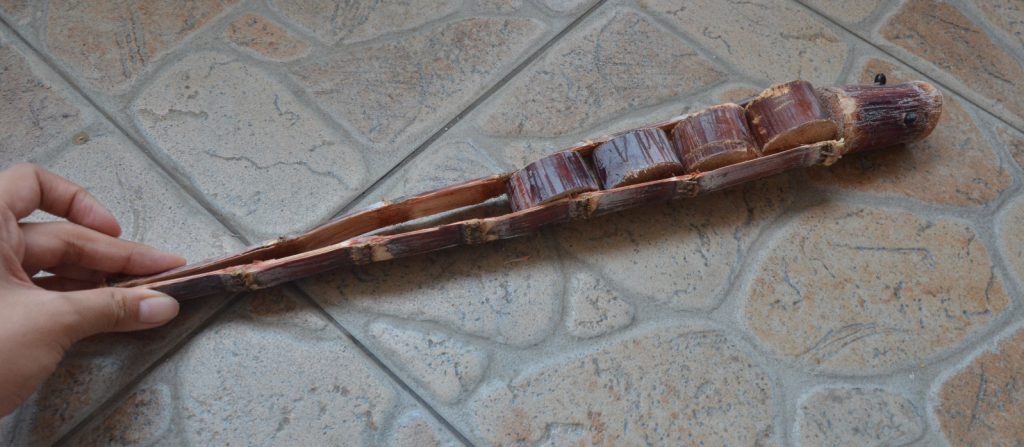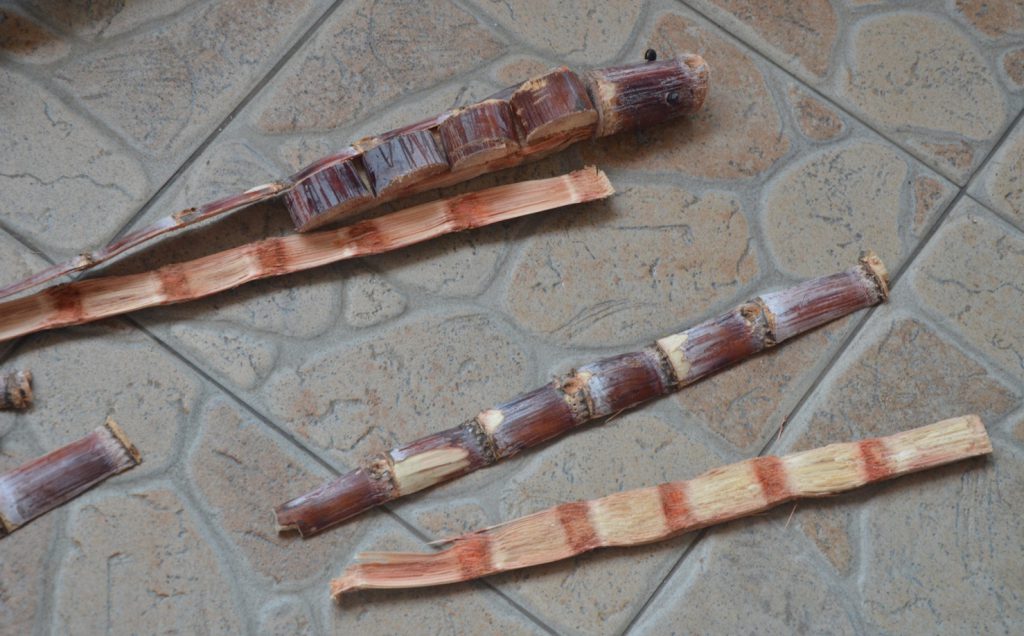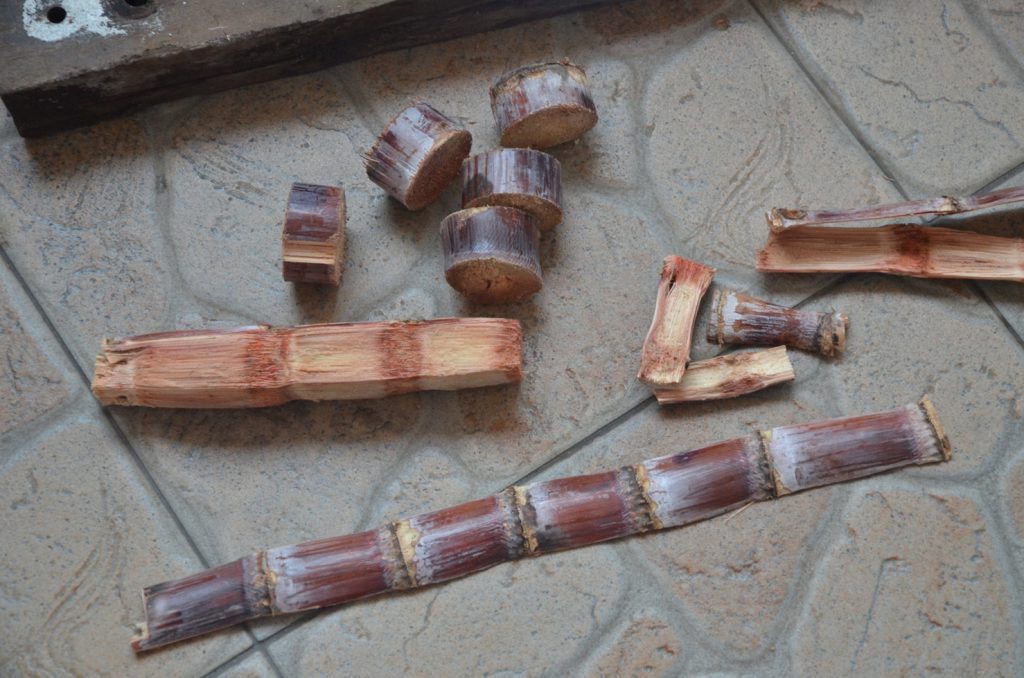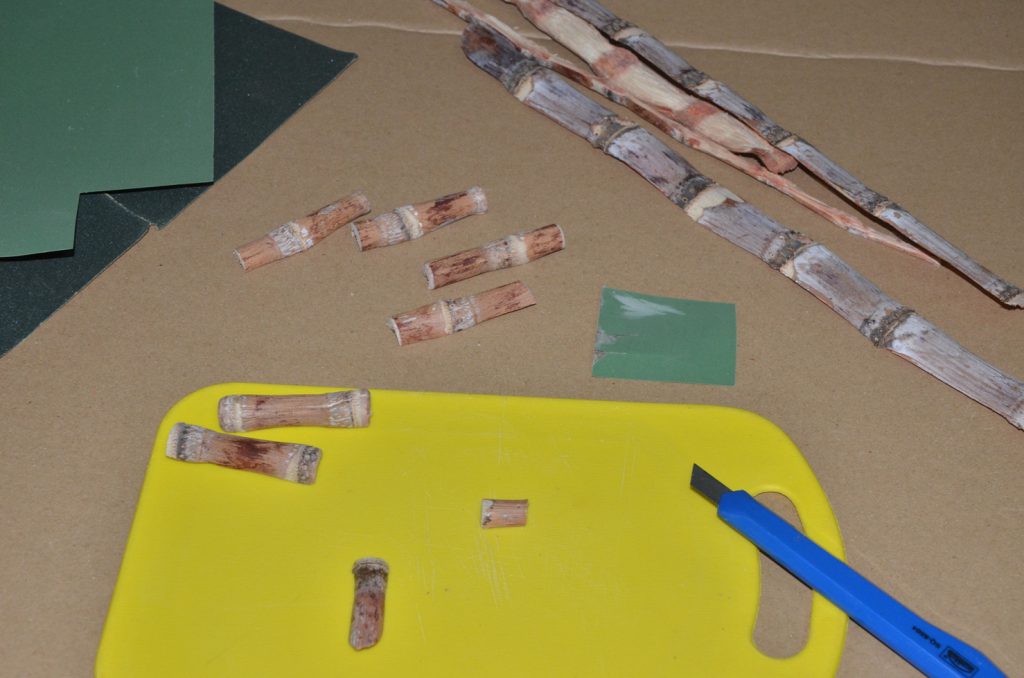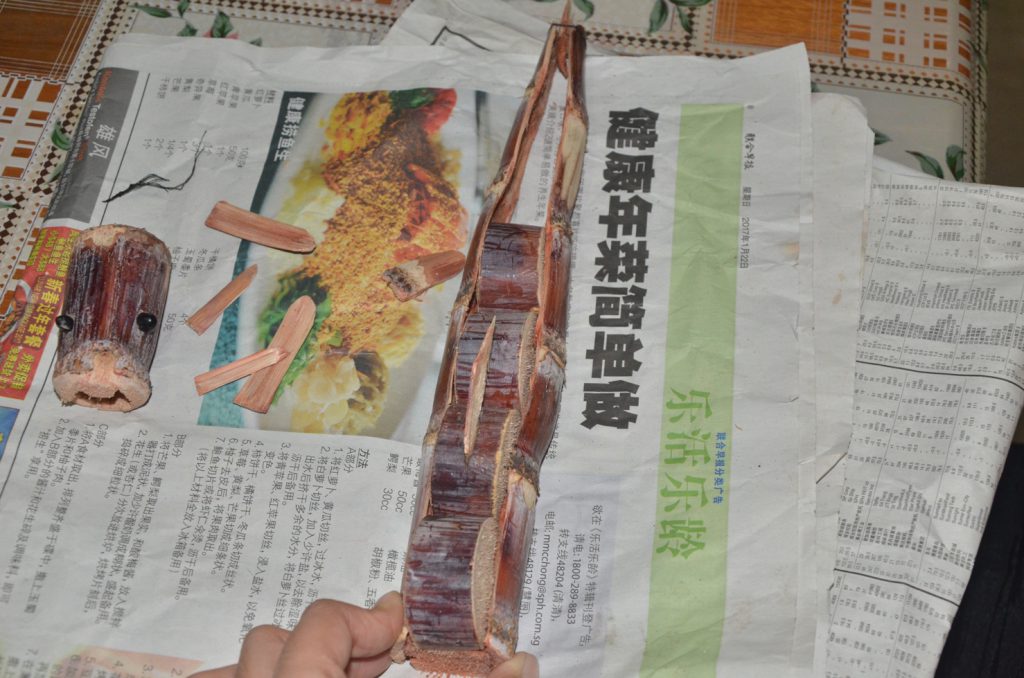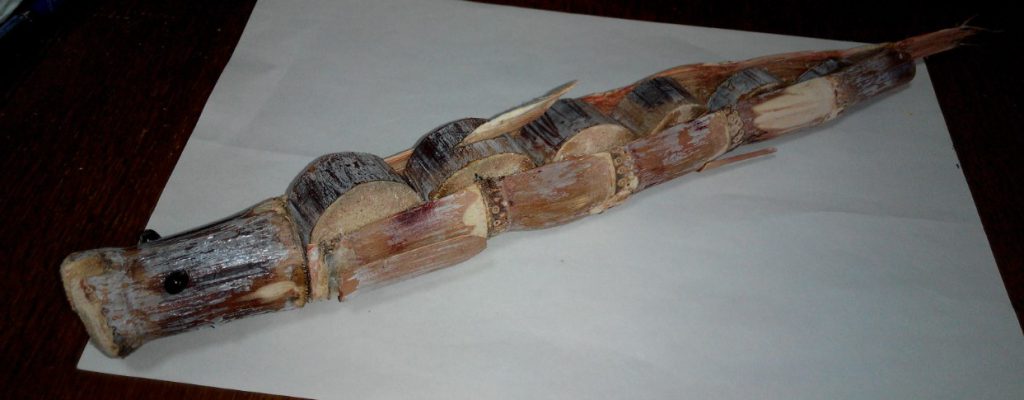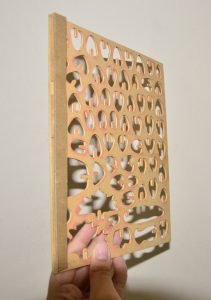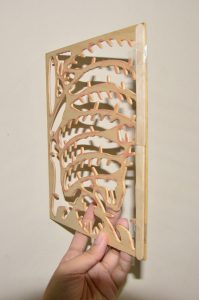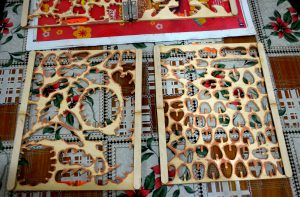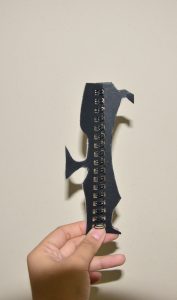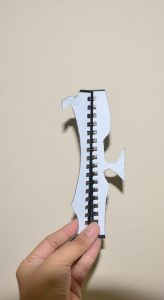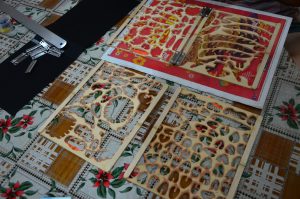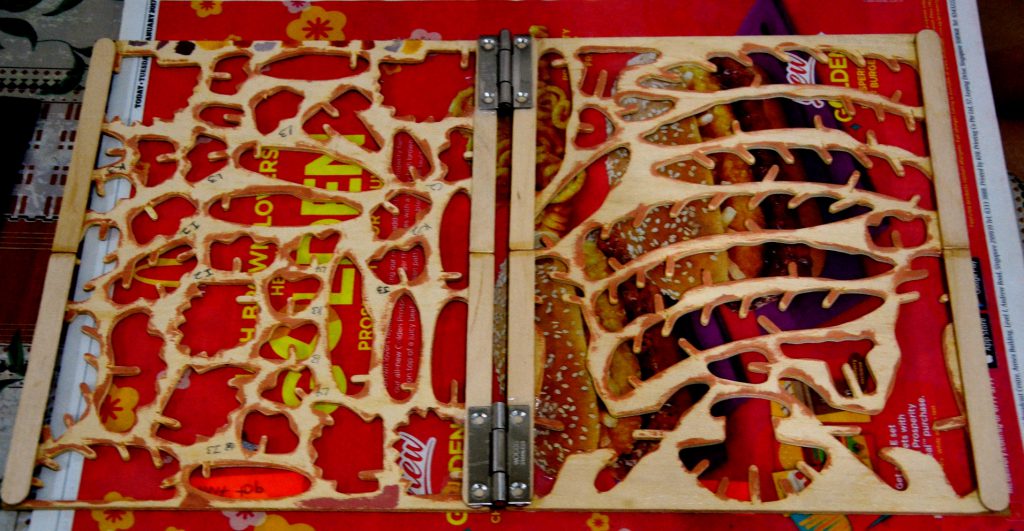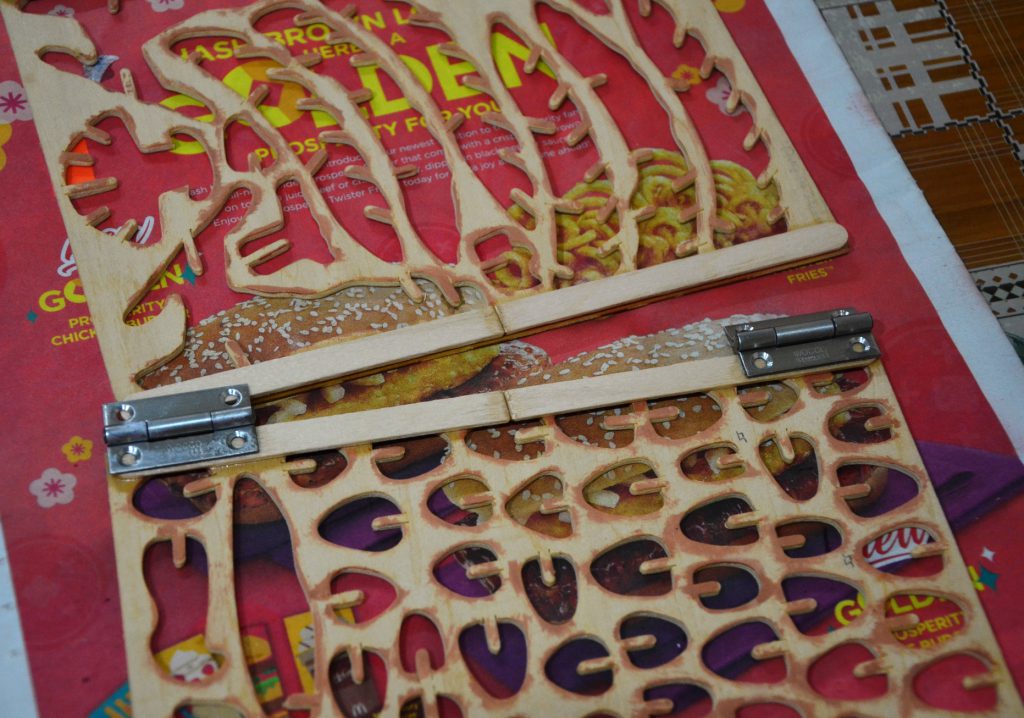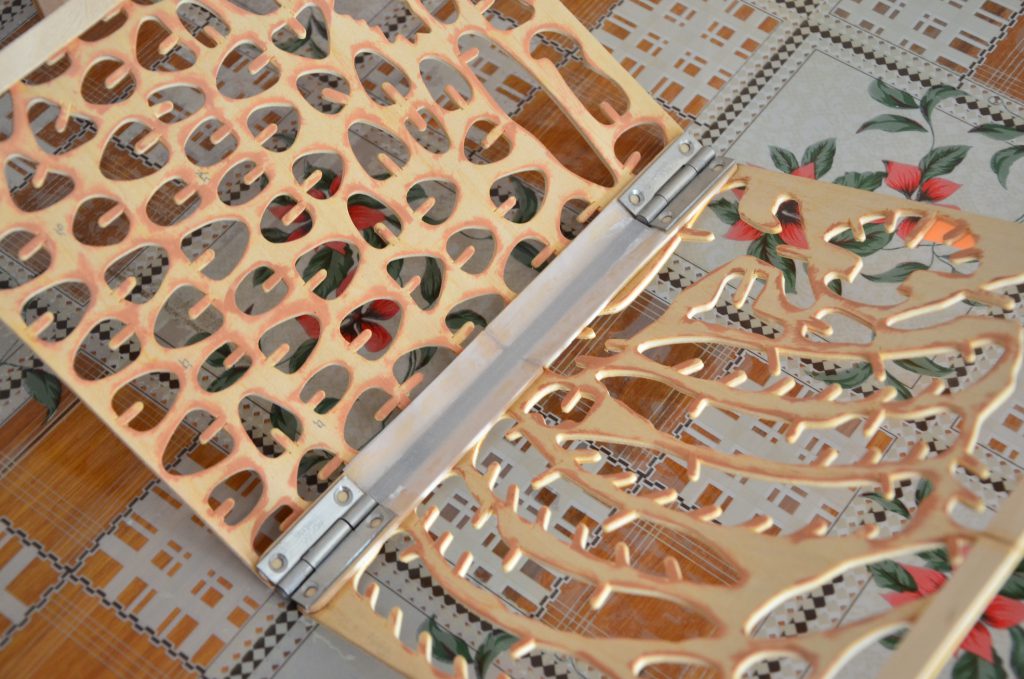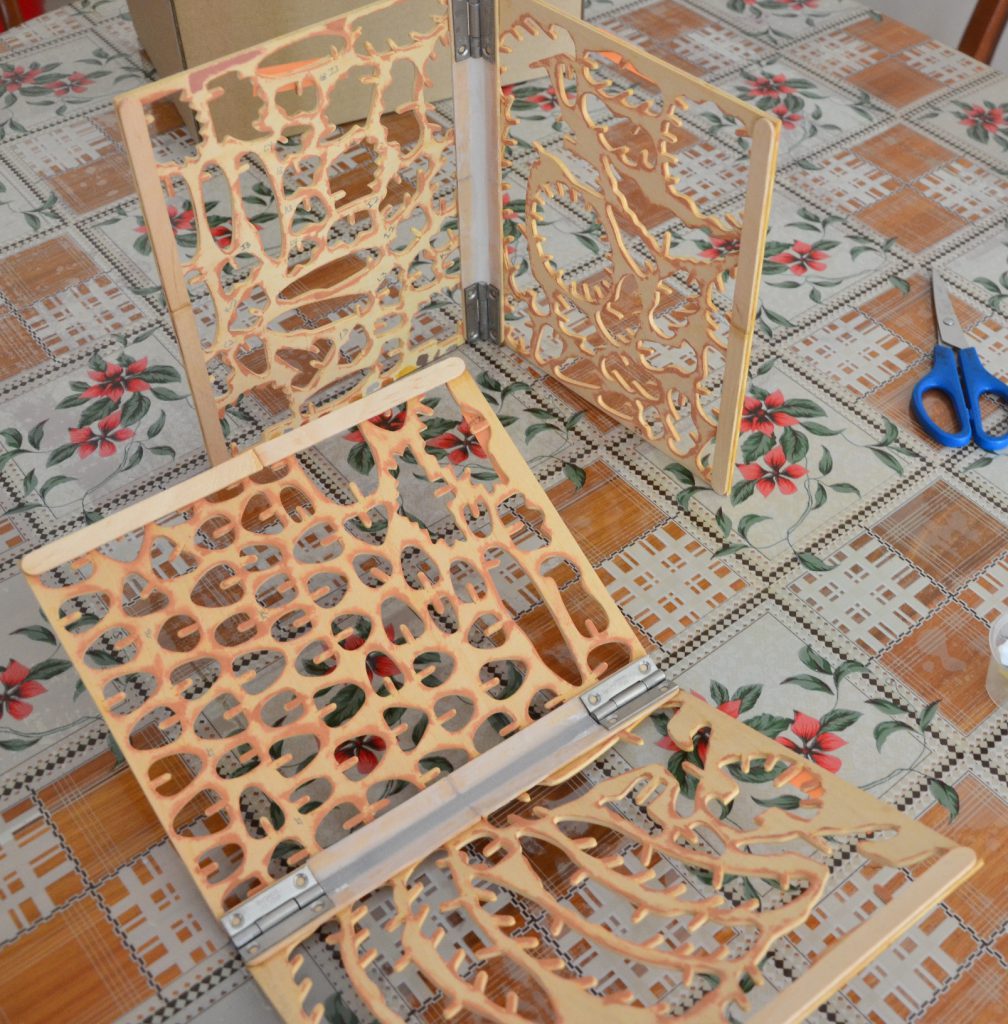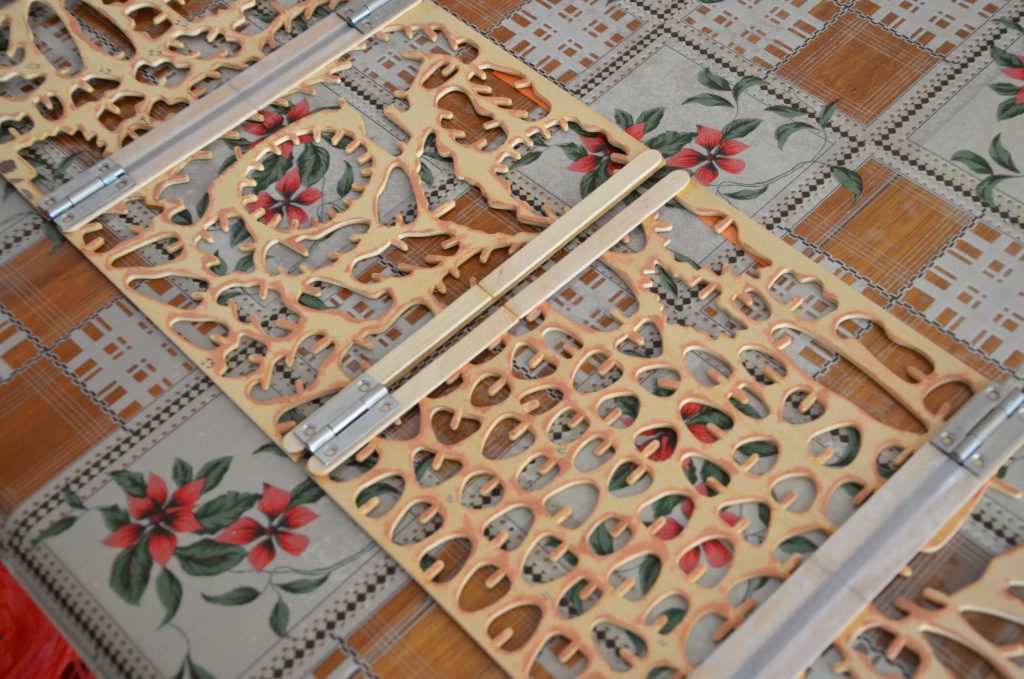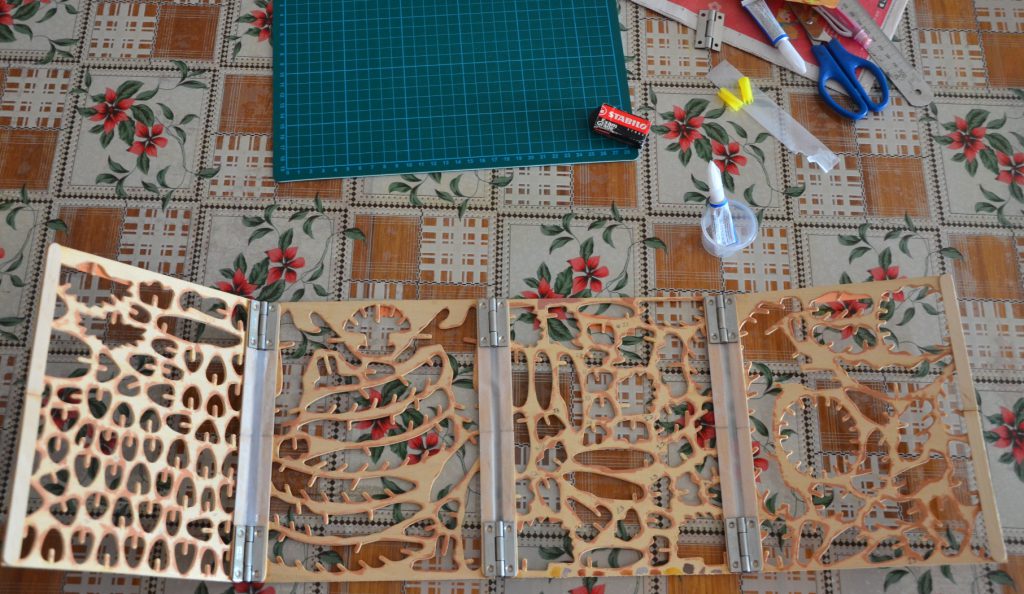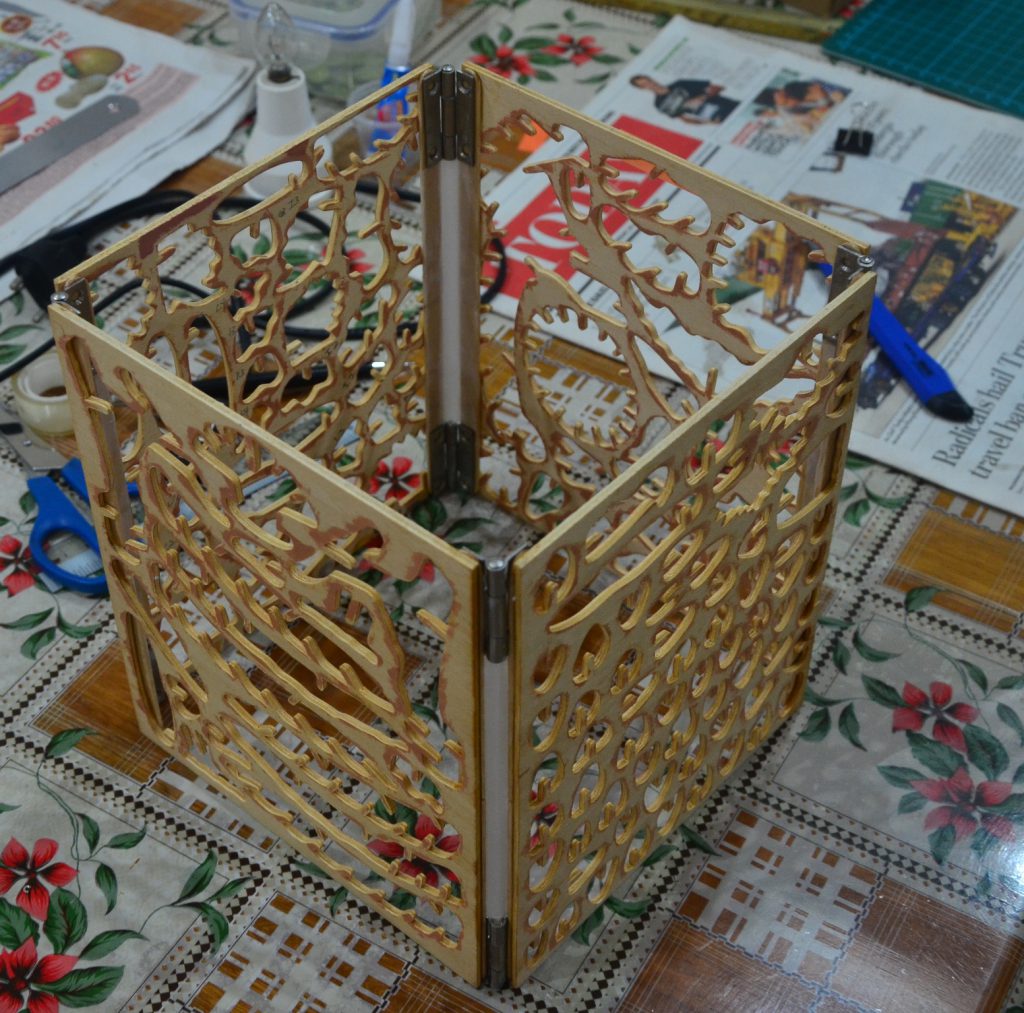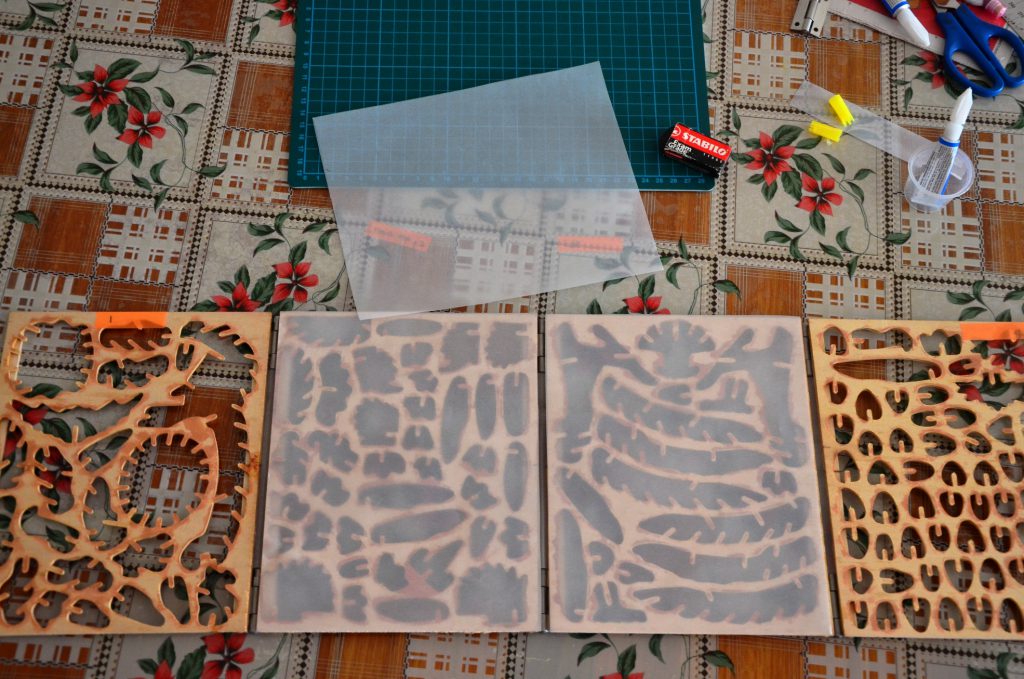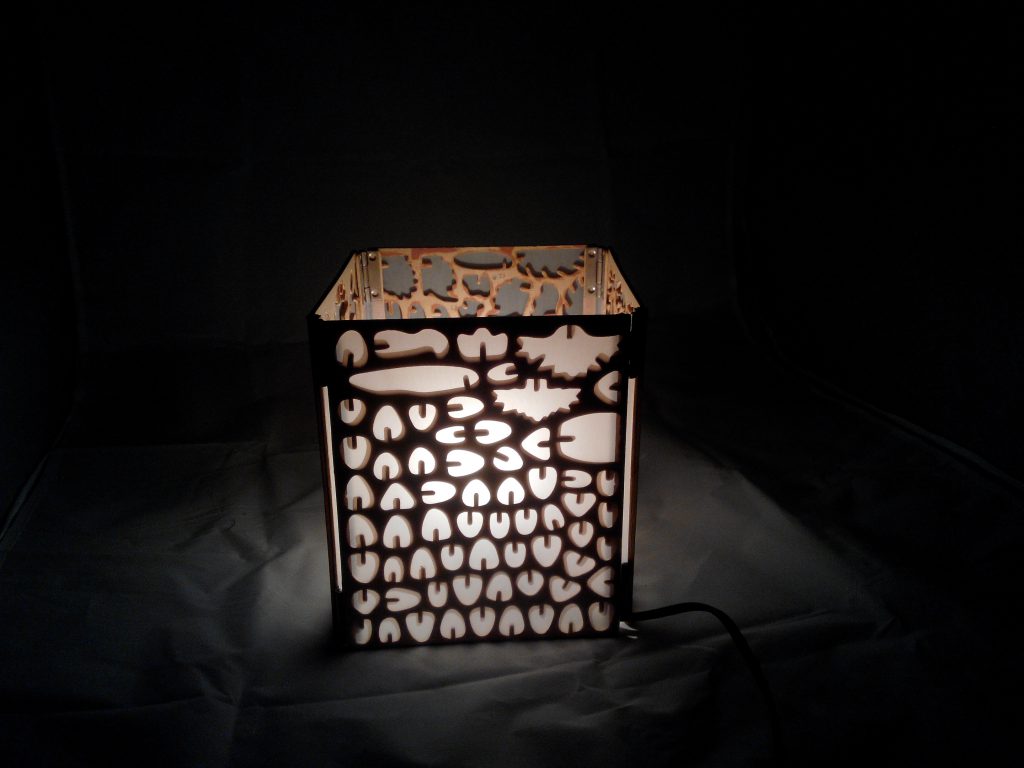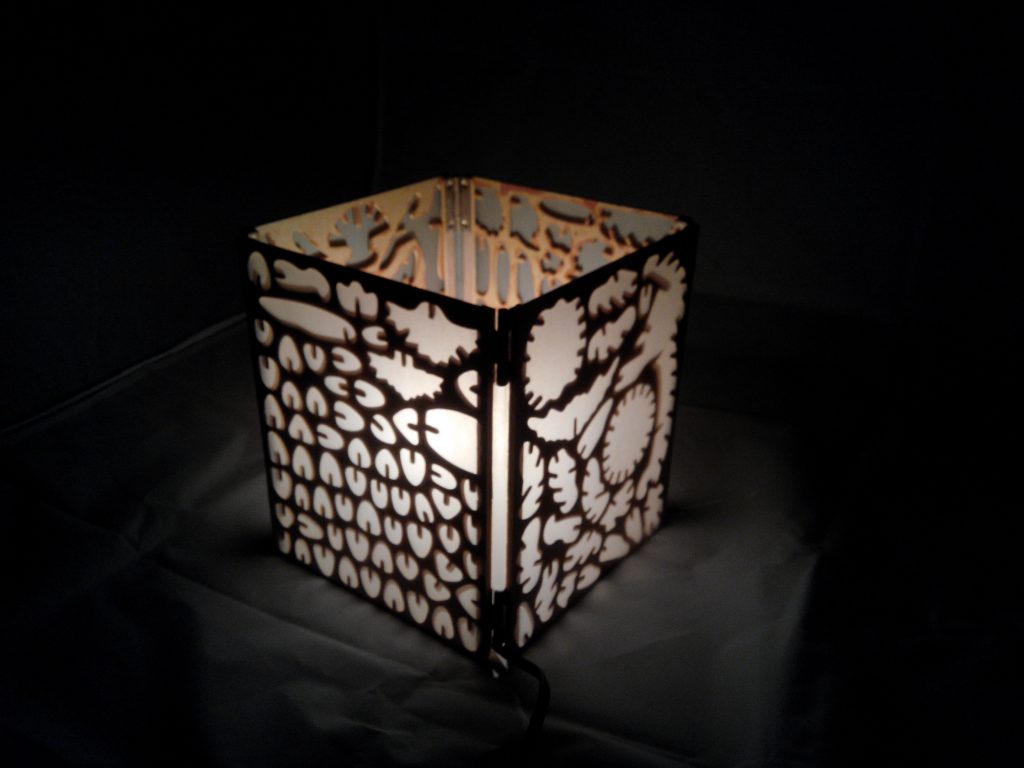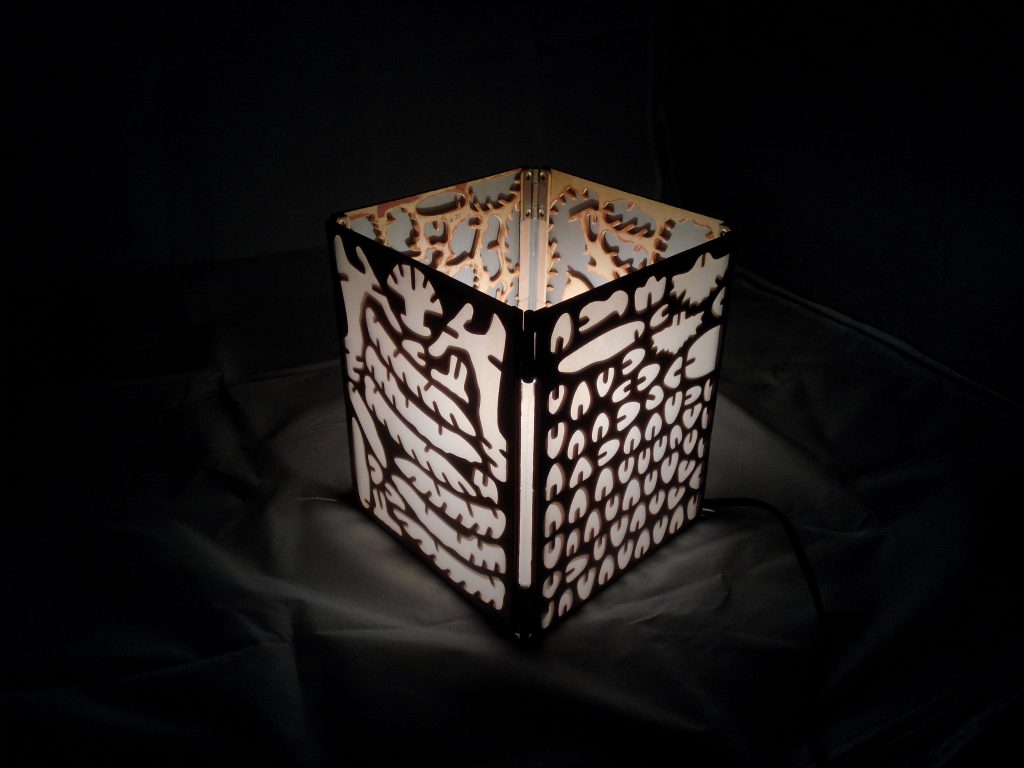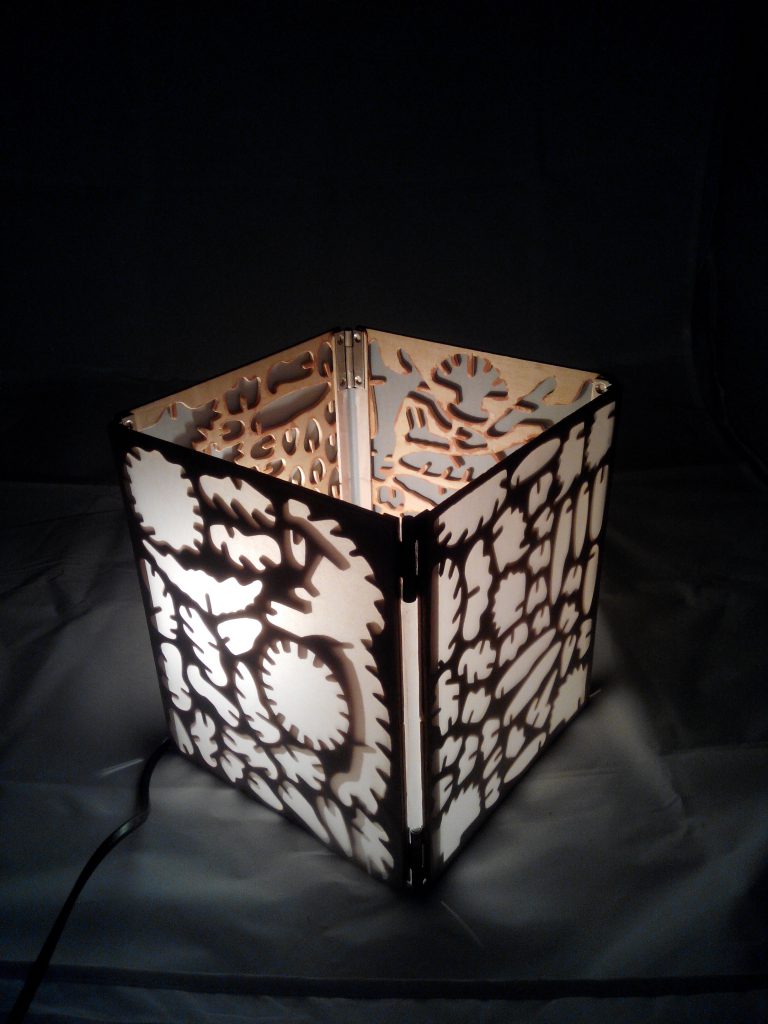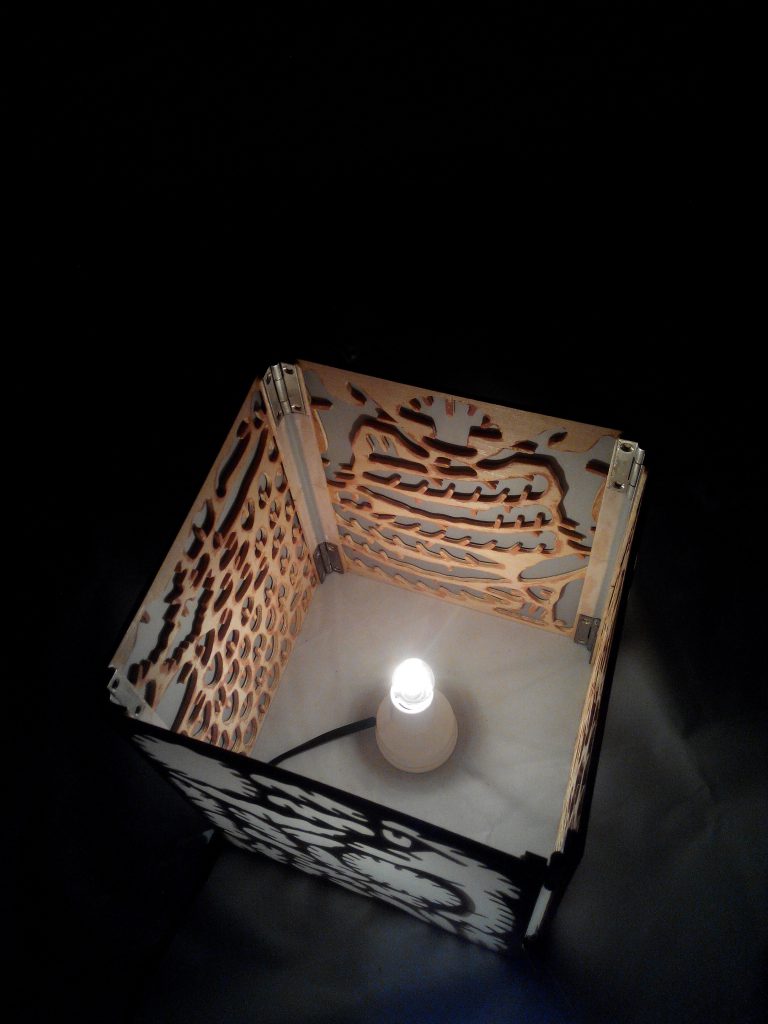EXPERIMENT 3:
Number 7: Jewellery set made from food
HOW DID I GO ABOUT DOING IT?
Originally, i thought of using varnish/ shellac to coat the materials to have a shiny furnish. However, the smell was so bad that it did not go away even after a few days of sun drying. Hence I decided to change my approach and tried to use resin instead. However, the resin sold outside was quite expensive (about 150ml for $30) and I could not obtain transparent resin from the school. So, I went to research and found a plausible solution instead. BIOPLASTIC. I then proceeded to make my own bioplastic using these materials below.
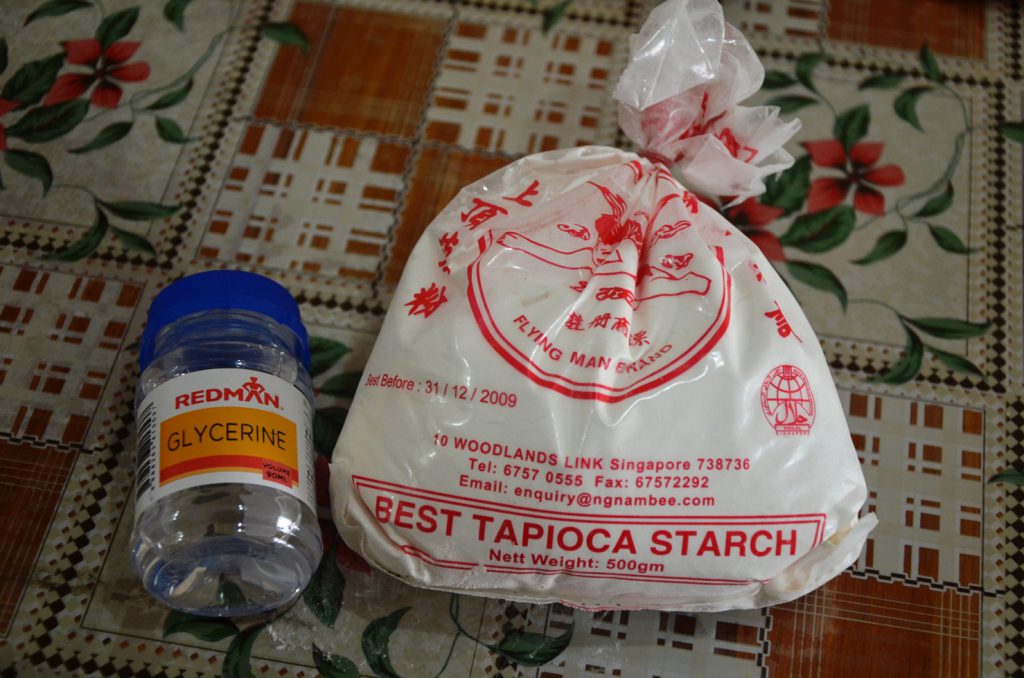
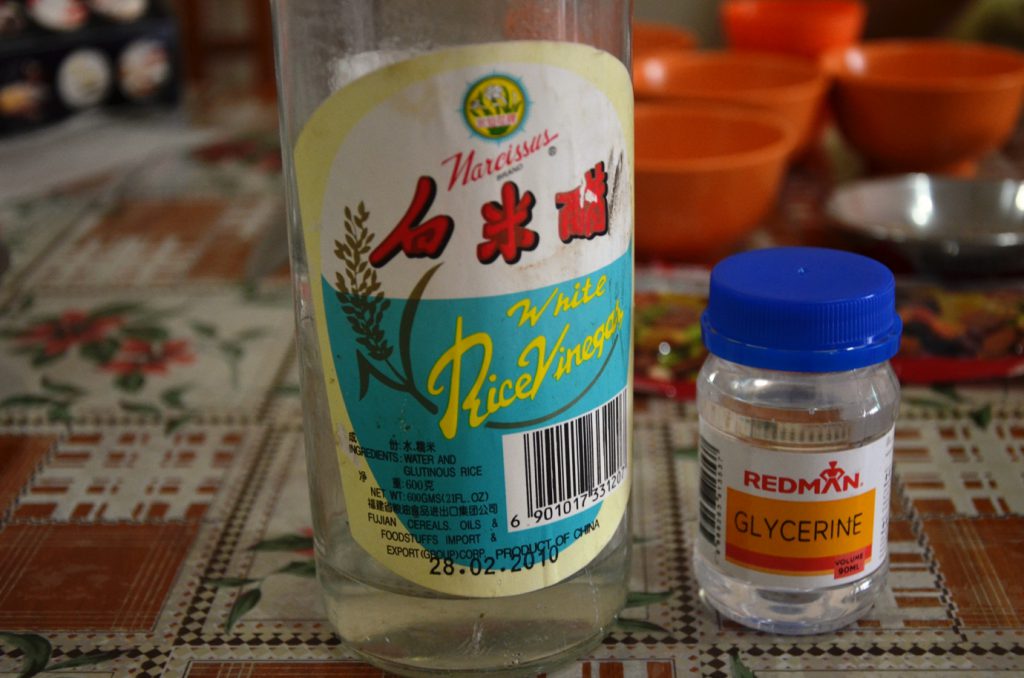
Basically, mix 1 tablespoon of tapioca starch with 4 tablespoons of water and add in 1 teaspoon of glycerine as well as 1 teaspoon of white vinegar. Mix well. According to the portion you need, increase the dosage x2 , x3, x4 etc. After trying out a few types of starch, I realised that tapioca starch works the best. Corn starch and potato starch produced lumpy and gooey mixture.
The following were the stages of the mixture produced with photos taken per few seconds interval since they were cooked quite fast:
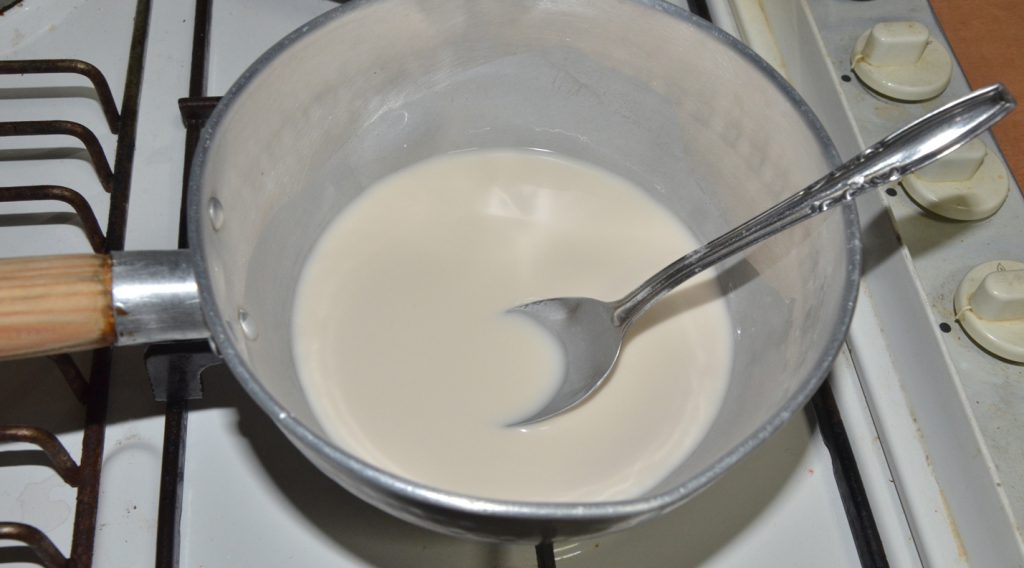
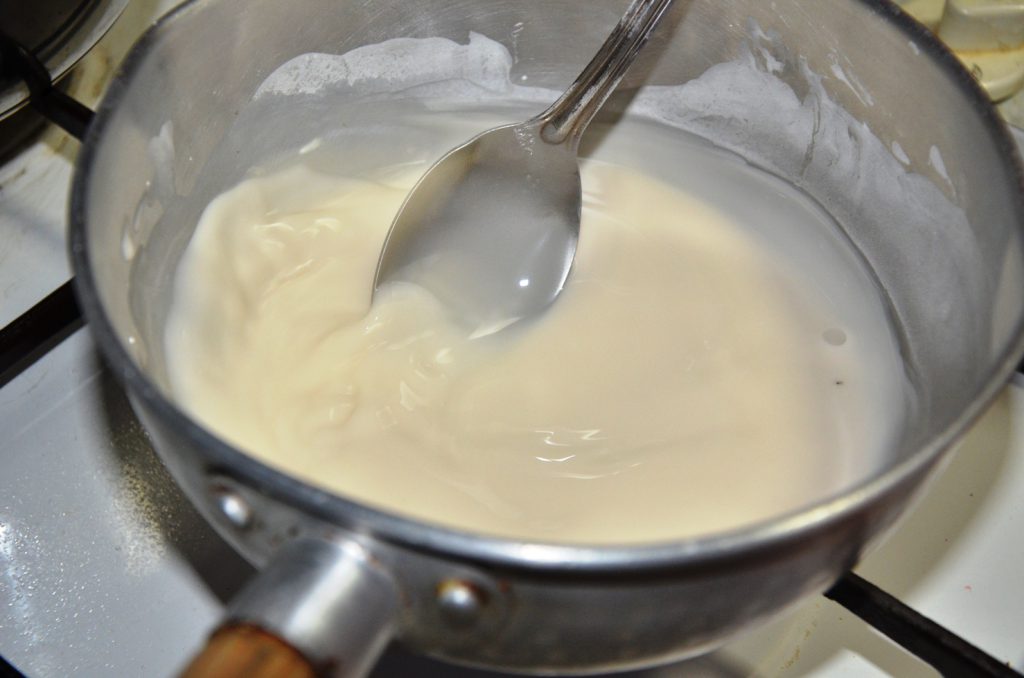
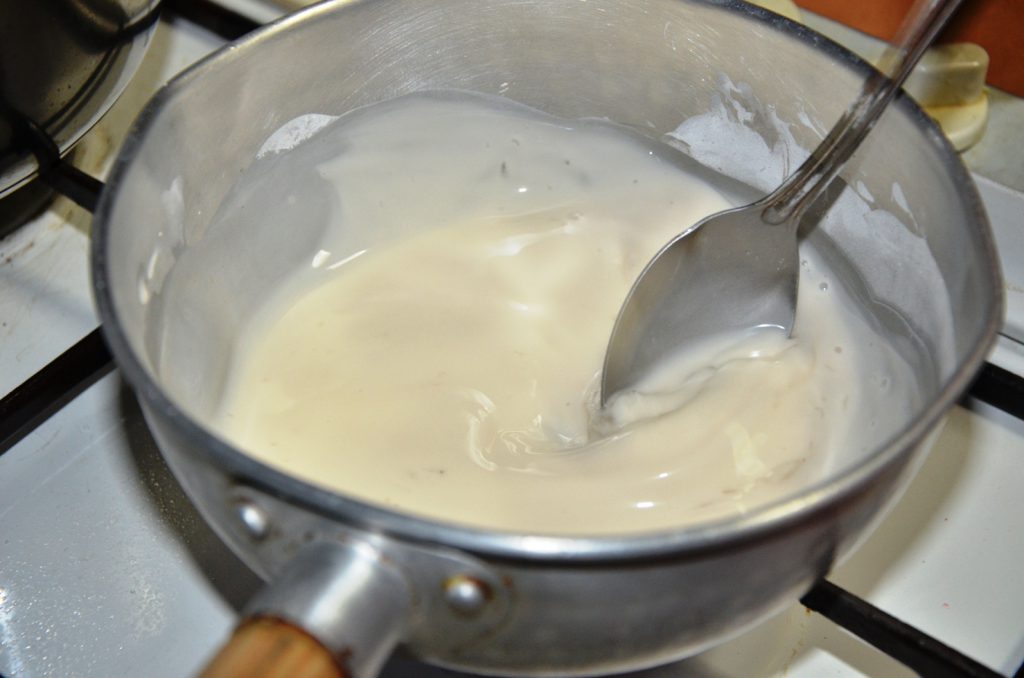

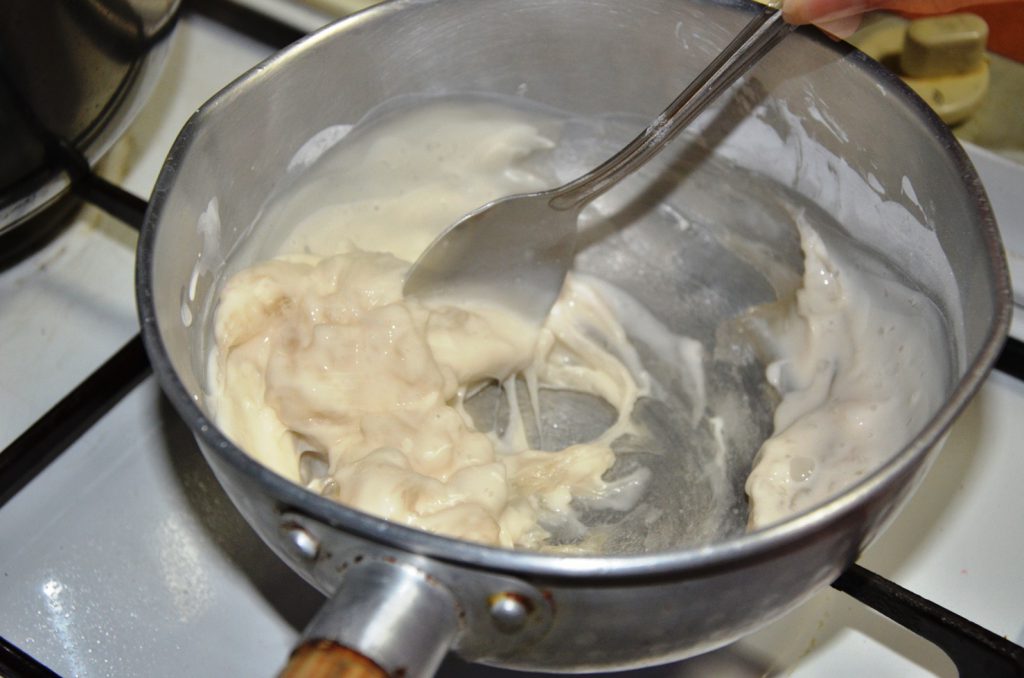
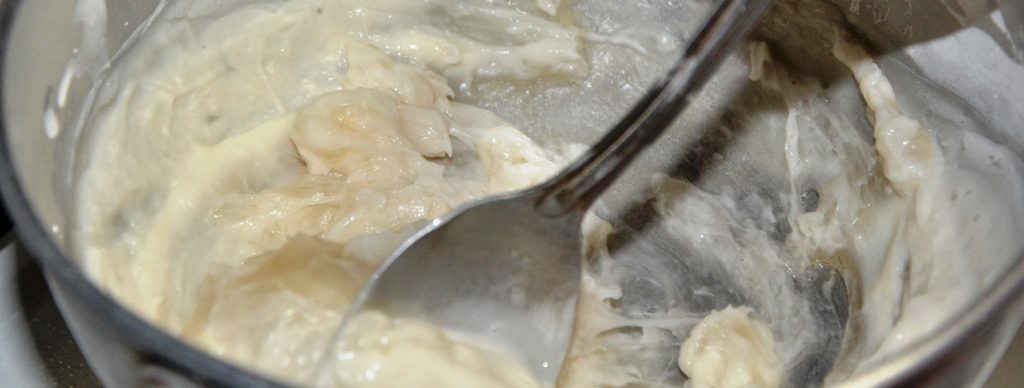
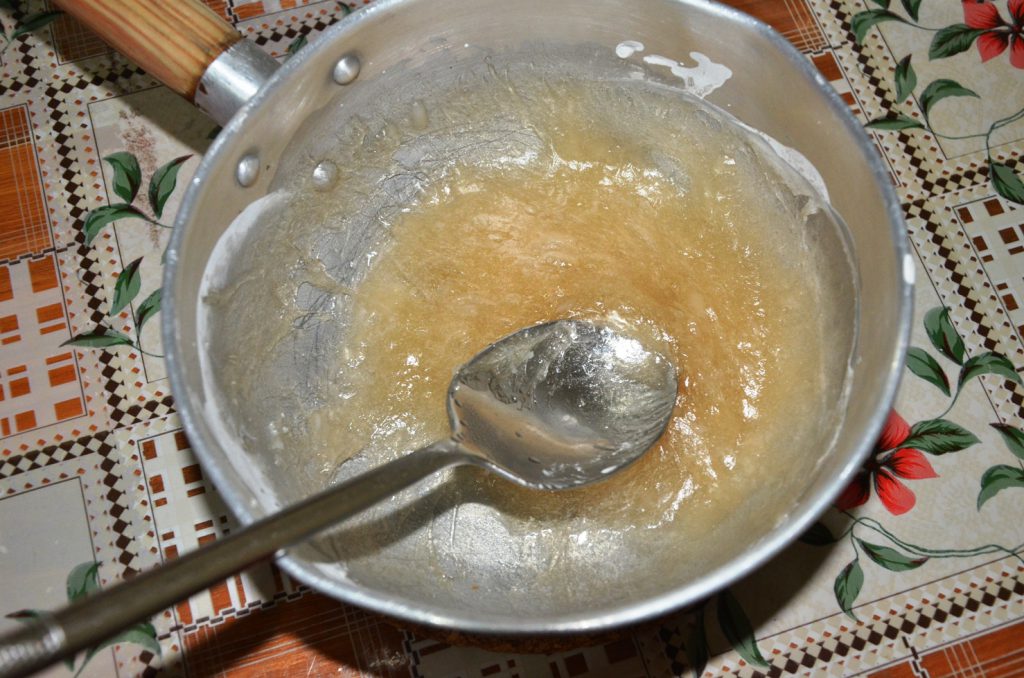
Eventually, they will form this sticky, translucent and rubbery paste. I let it cool for a while before letting trying on something small. I placed a small amount on parchment cooking paper and stick a dried piece of fir tree leave inside.
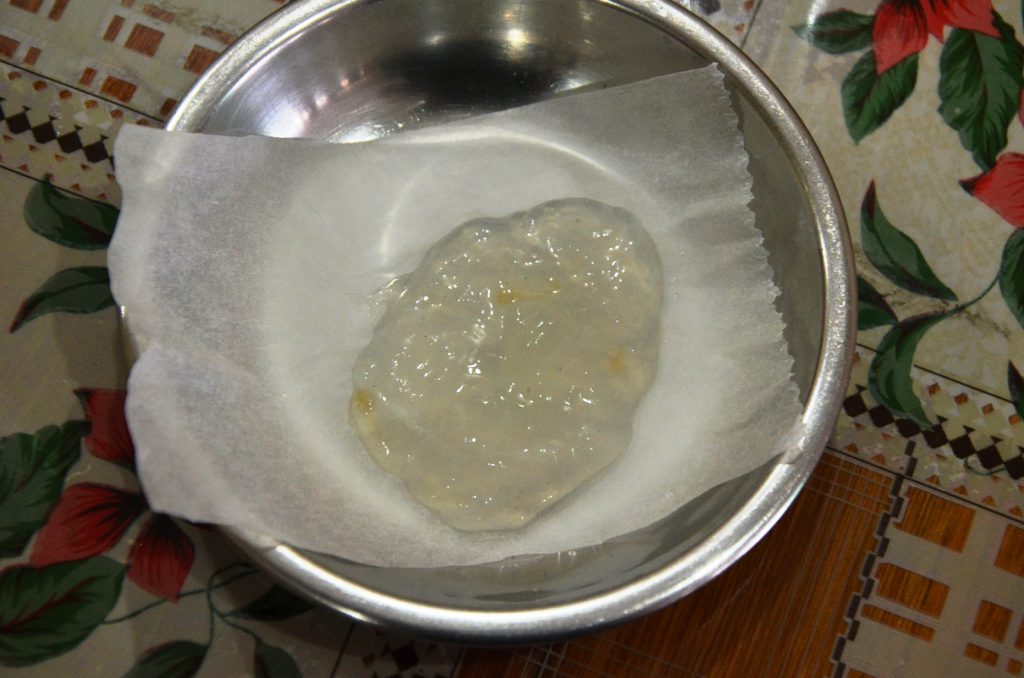
After realising that it was not going to dry quickly, I put it into the oven to toast a few times. Eventually it produced this effect.
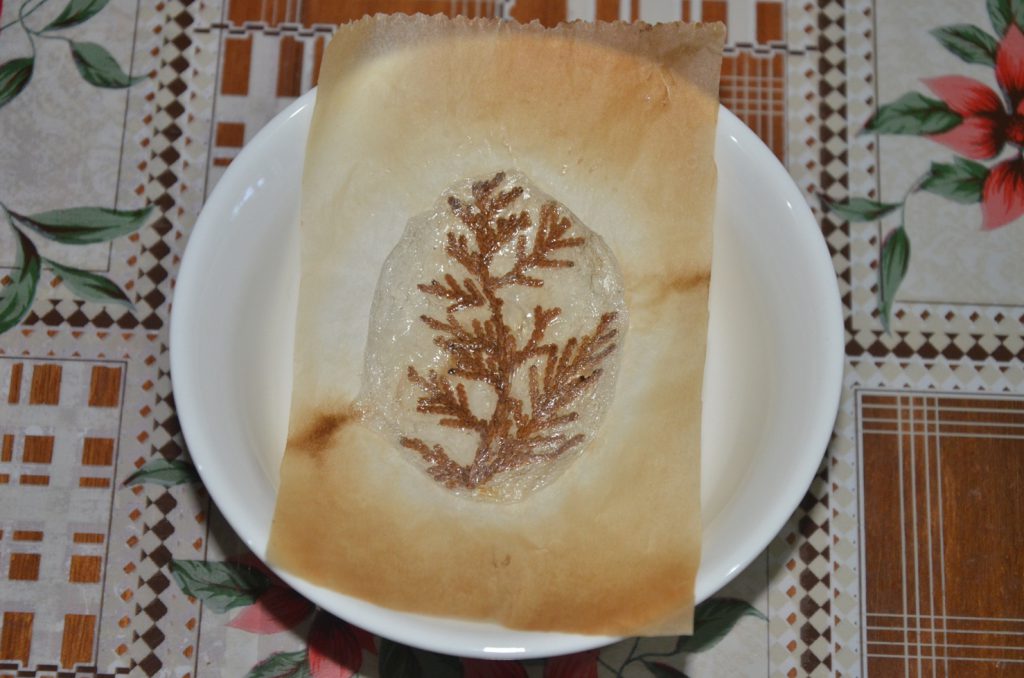
Even after doing so for a few times, although the surface was dry, the moisture of the material was trapped within, making it very difficult to dry. I then tried to heat it over a pan. It bubbled profusely and created many bubble like cavities within the small piece. Hence, I decided that perhaps sun drying will be the best option, albeit being a slow process.
I carried on and used the material made for another experiment. Since my topic was about kitsch and with the intention of making a small bowl for trial, I intentionally used dried seafood such as ikan bilis. dried calms and dried shrimps to line up around the circumference of the bowl.
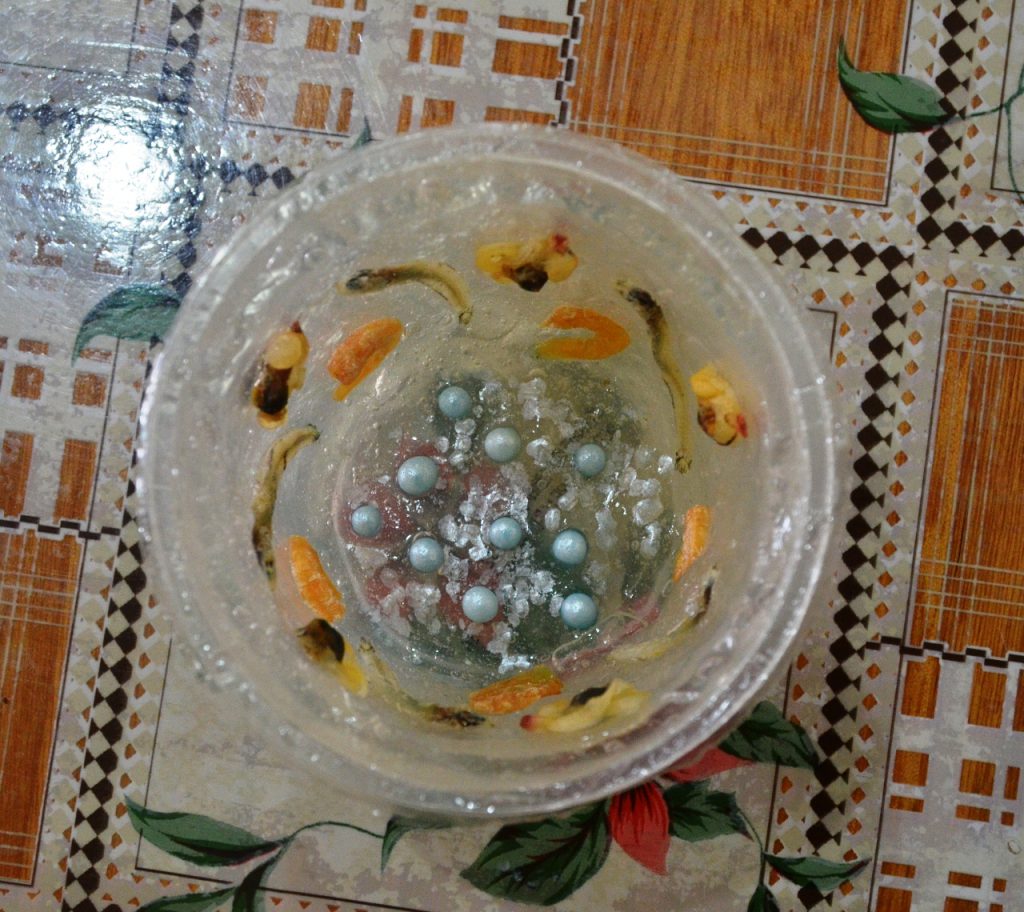

After quite a few days of sun drying, I managed to pull the layer off as shown below and the shape of a bowl was formed.
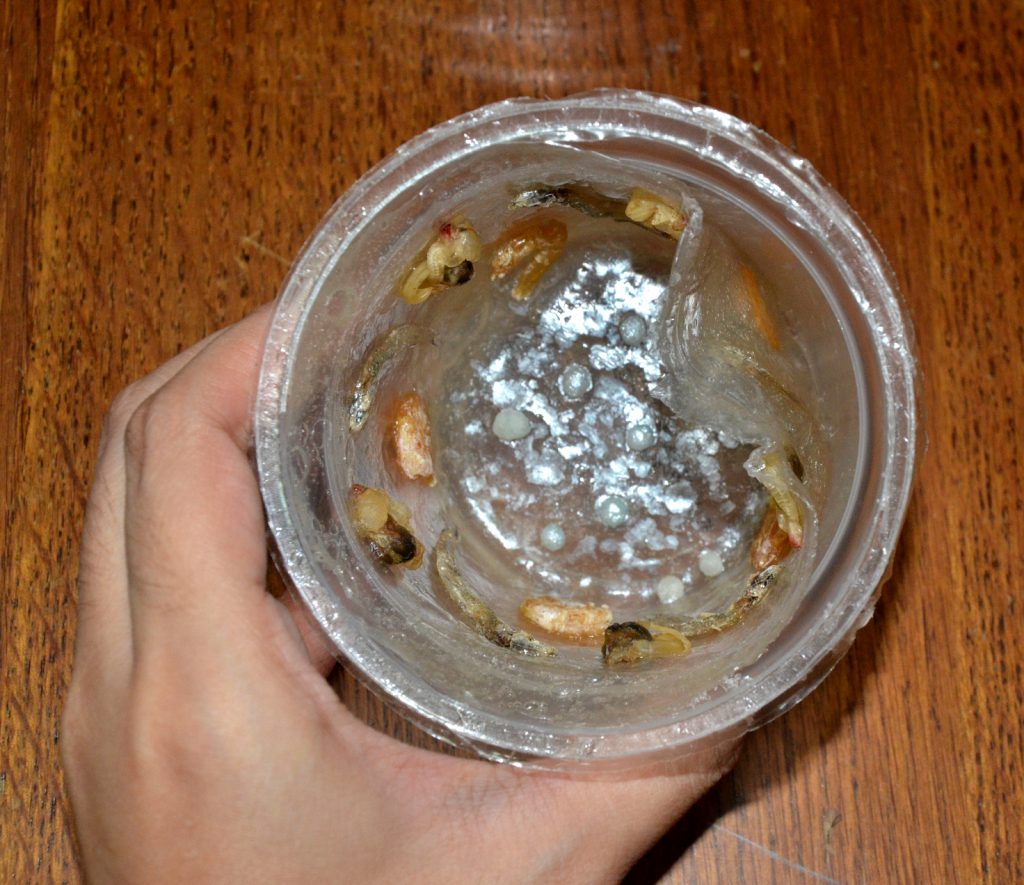
However, after doing this at home, my family members began to complain how stinky it was and so I decided to cook another pot of paste to do another experiment that was “less stinky” – BEANS. The trial bean bowl is as shown below.

After that I started looking for possible materials for my food jewellery other than seafood. I tried to use oranges and lime after either sun drying them or baking them.
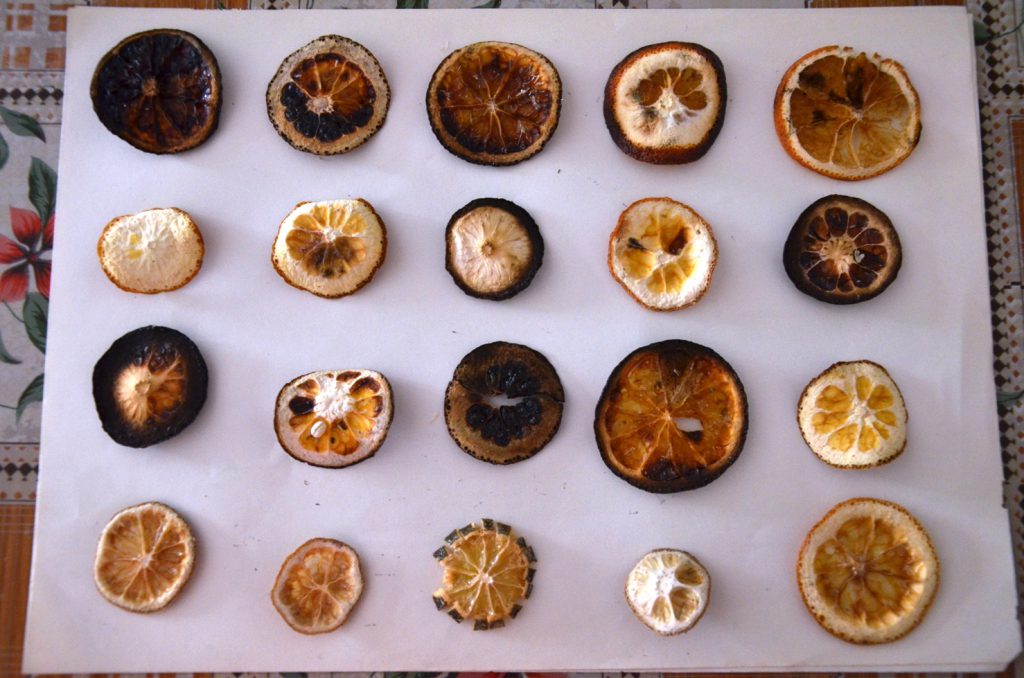
I really like the uniform effect of the charred ring around the circumference. E.g. the 2nd one at the 3rd row.
I also attempted to create patterns around the lime slice. E.g. the 3rd one at the last row.
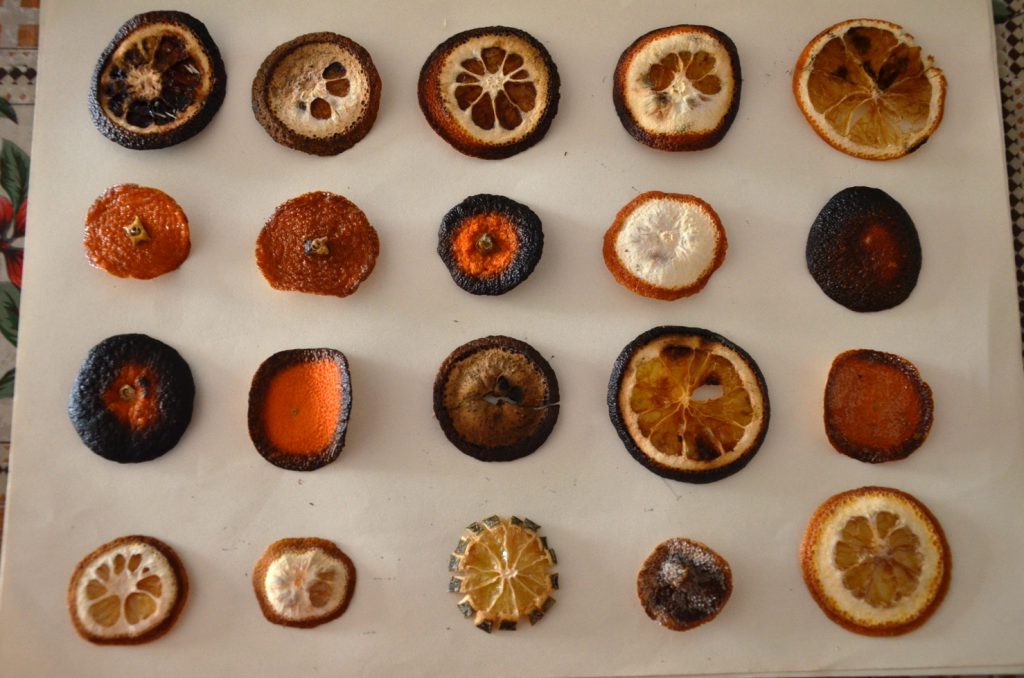
I also experimented with fresh chilli. I did not want to use the already dried ones as the colour was not nice and they were too dried. I kept some whole while I cut some into almost symmetrical halves.
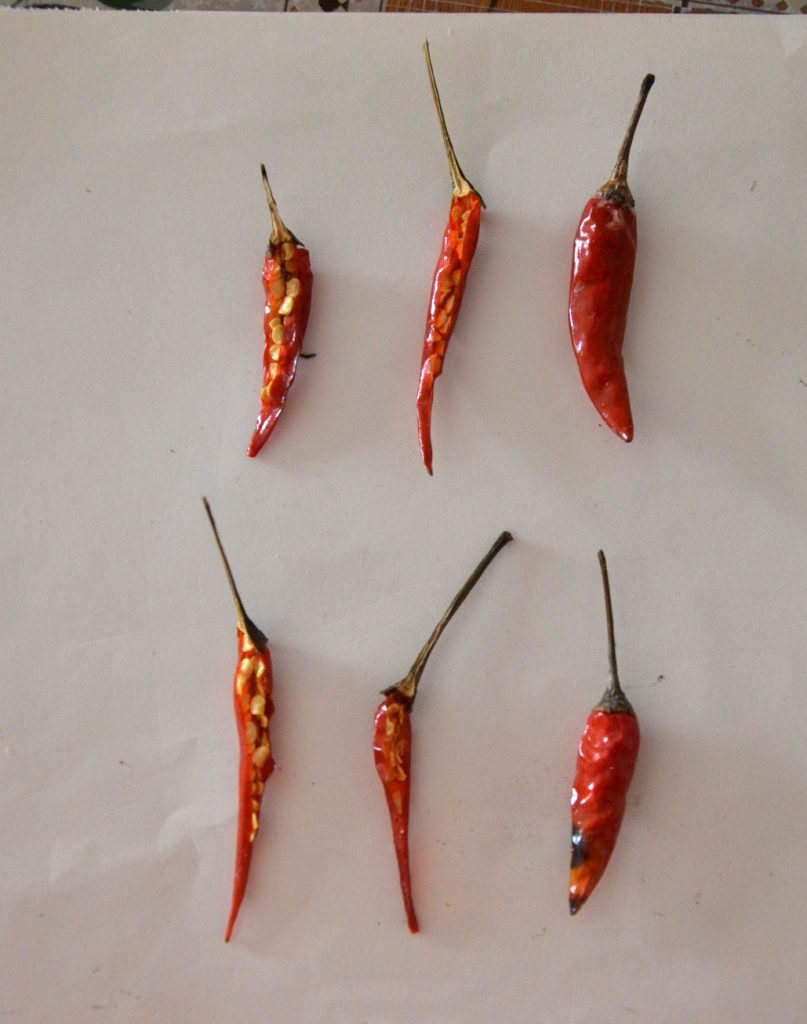
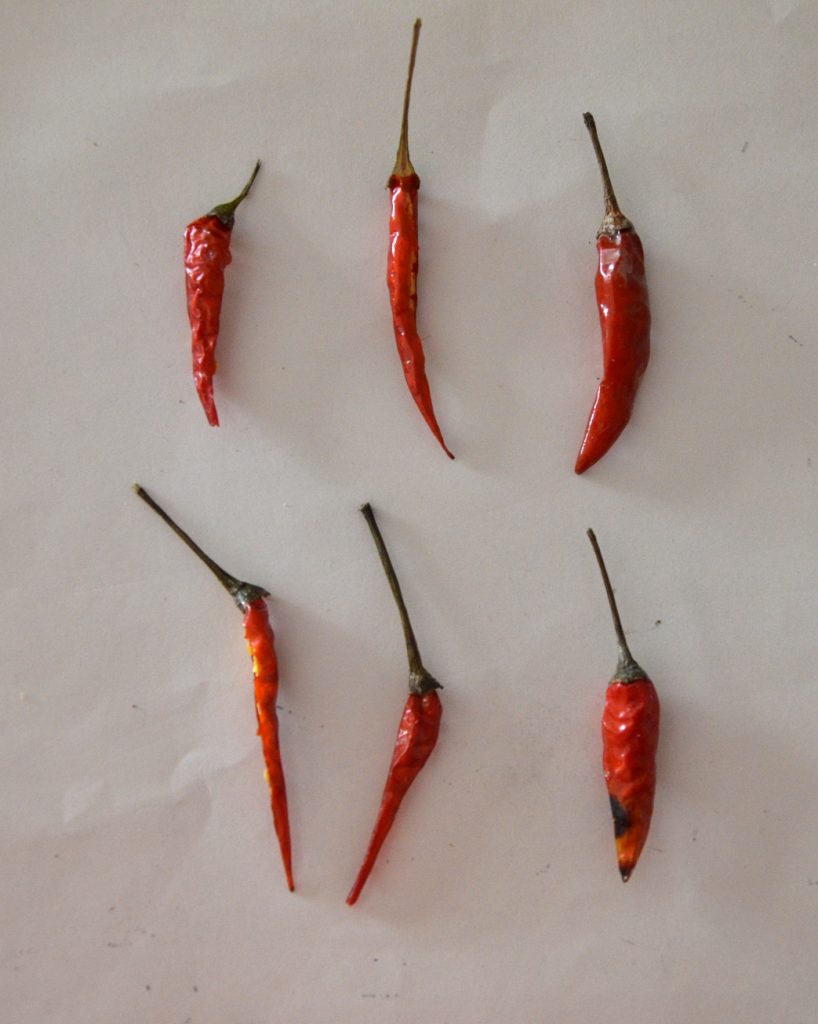
Some of the other food options included orange peel, sun dried starfruit, sun dried strawberry sections as well as avocado seed.
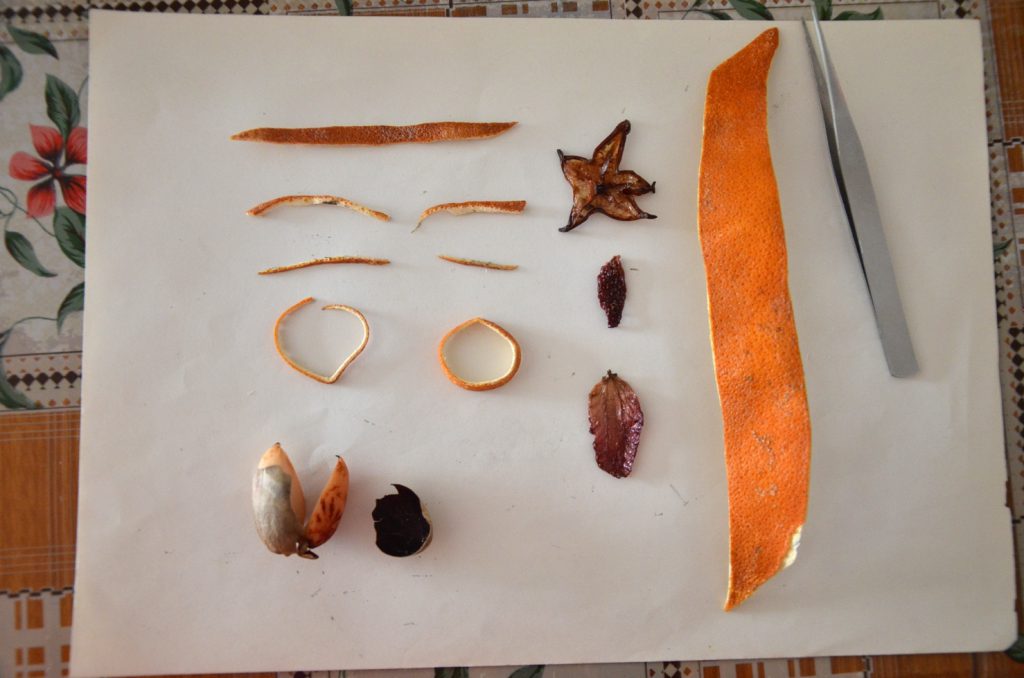
Dried lady finger cross sections, shrimps, clams, cucumber, carrot, persimmon seed, popcorn and purple carrot (3rd and 4th in the last column.
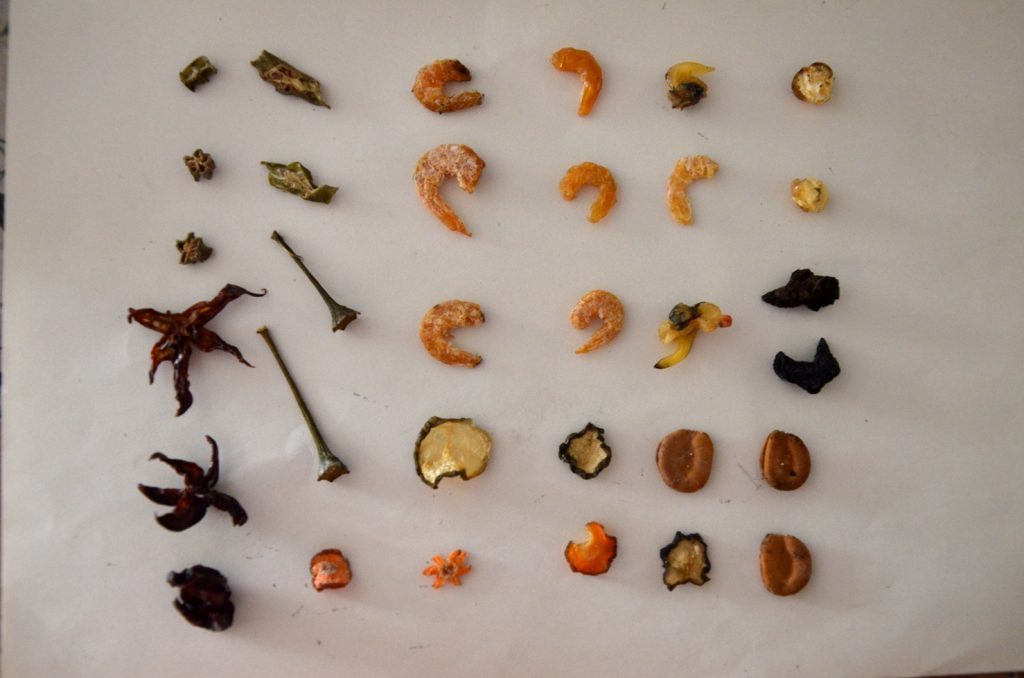
Different types of beans used.
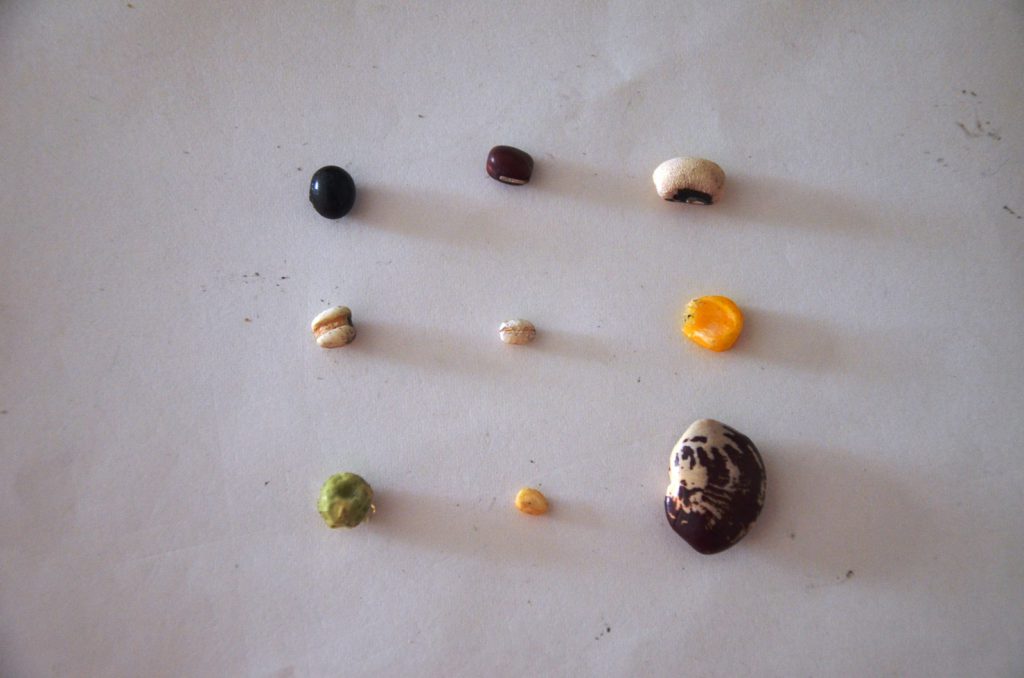
Dried avocado skin, starfruit and star anise.
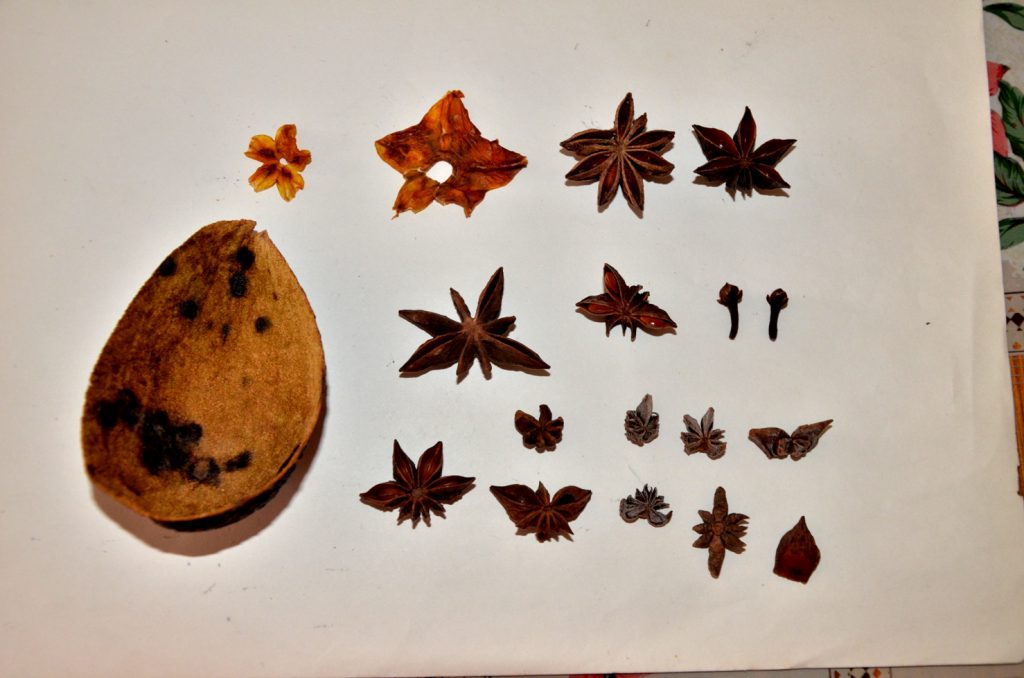
Flip side of the avocado skin.
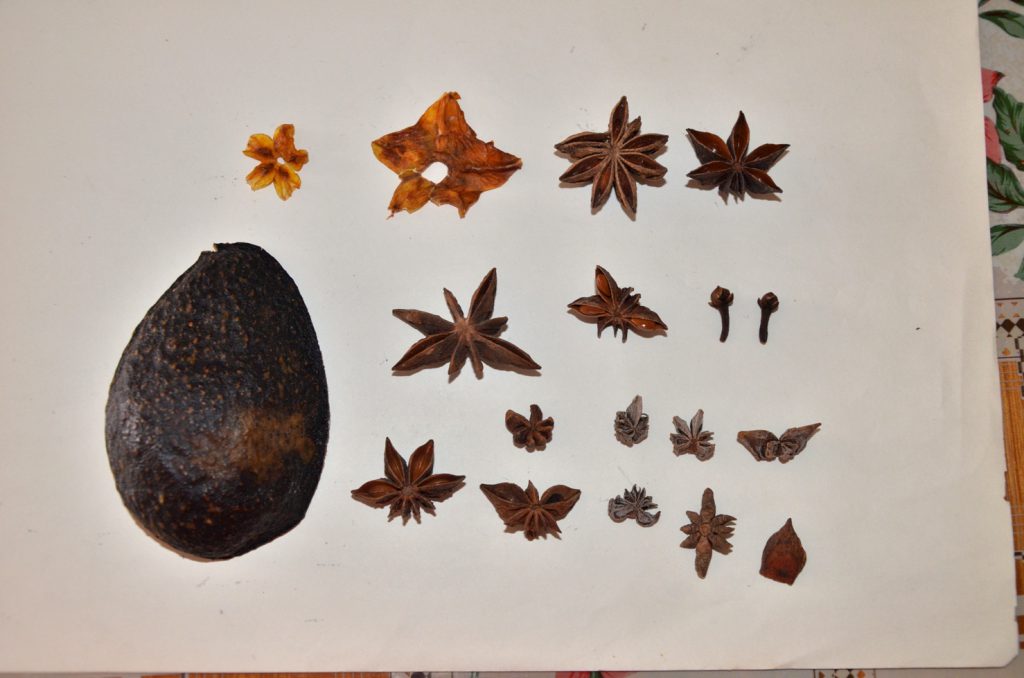
Fresh orange peels with the intention of making it into a bangle.
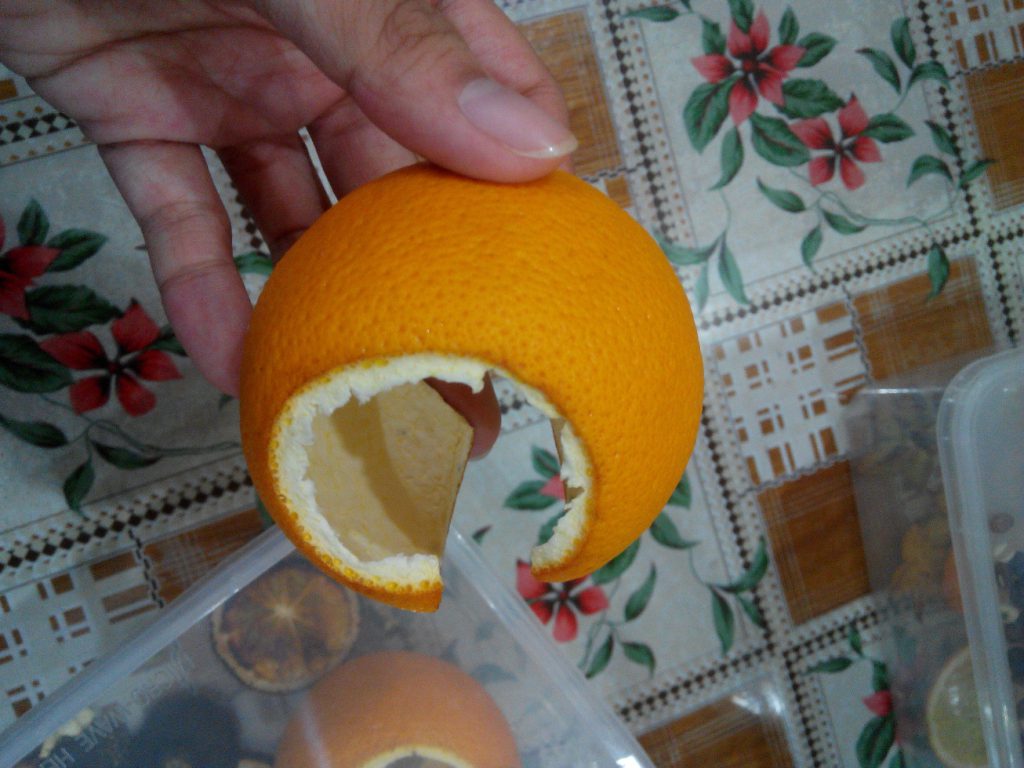
Dried orange peels.

Dried sugarcane sections.
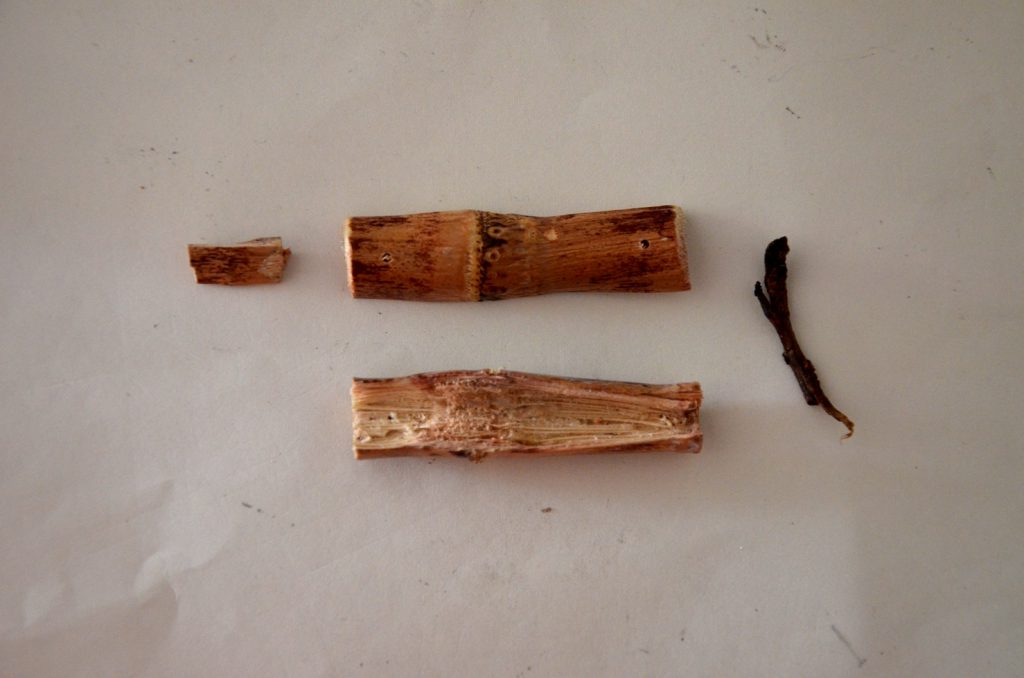
After trying out with so many materials, I felt that there should be 4 items in my jewellery set, namely : Necklace, Bracelet, Earrings and Brooch.
Looking at the range of materials, I have decided to use them to form some possible necklace patterns.
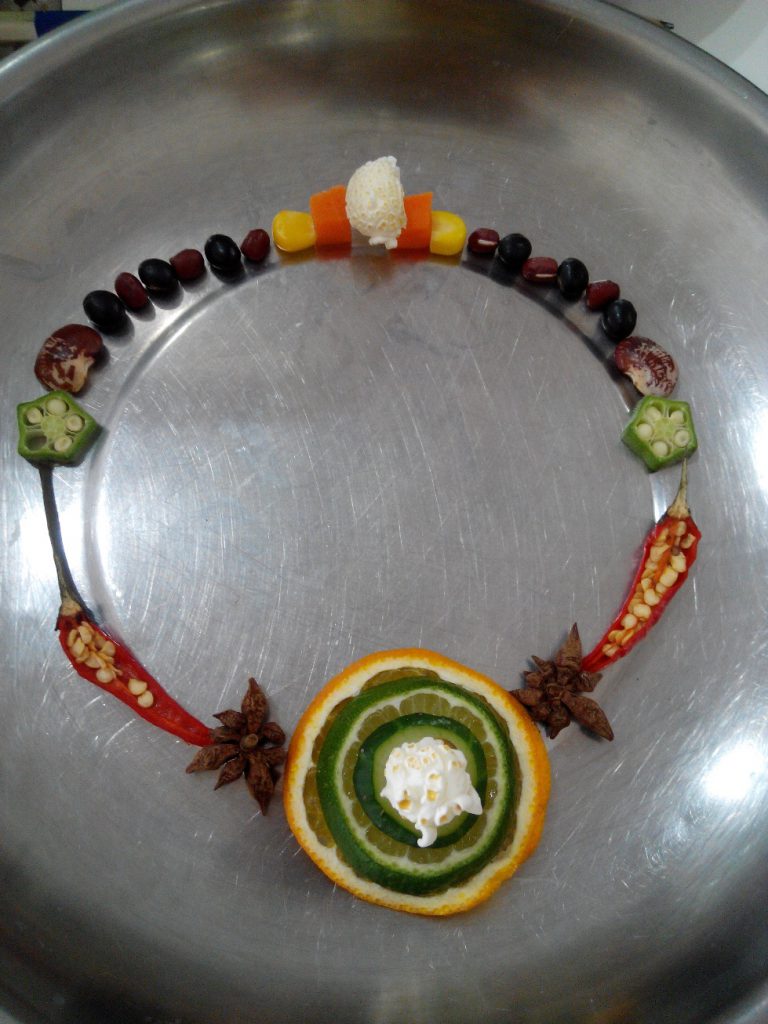
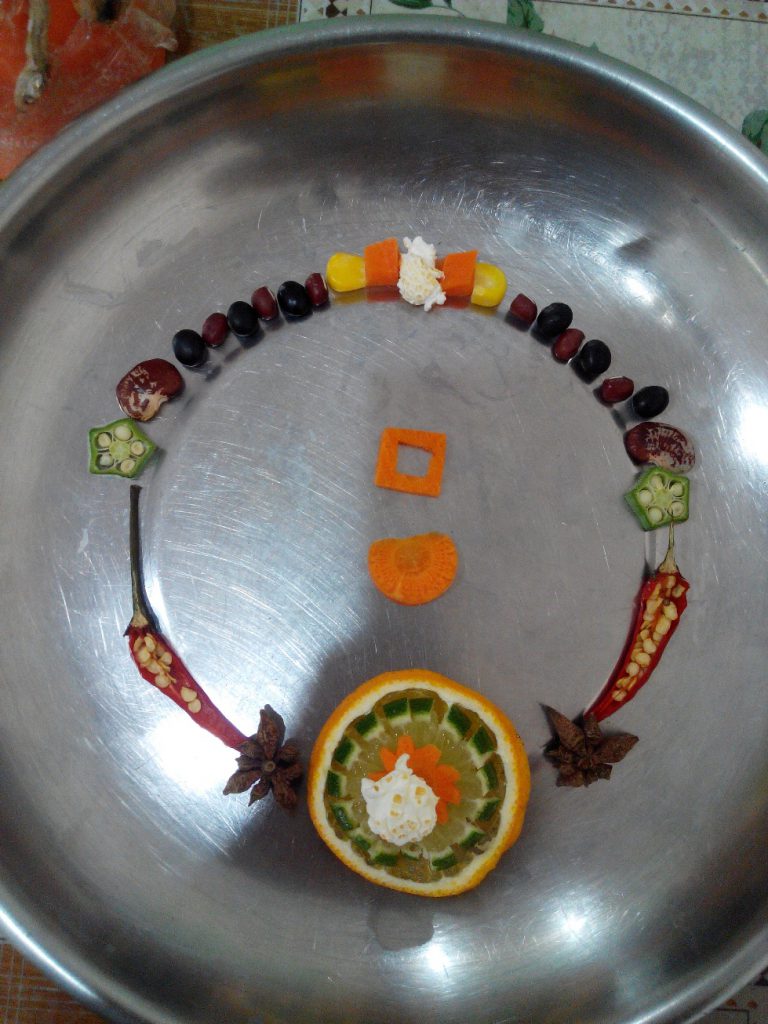
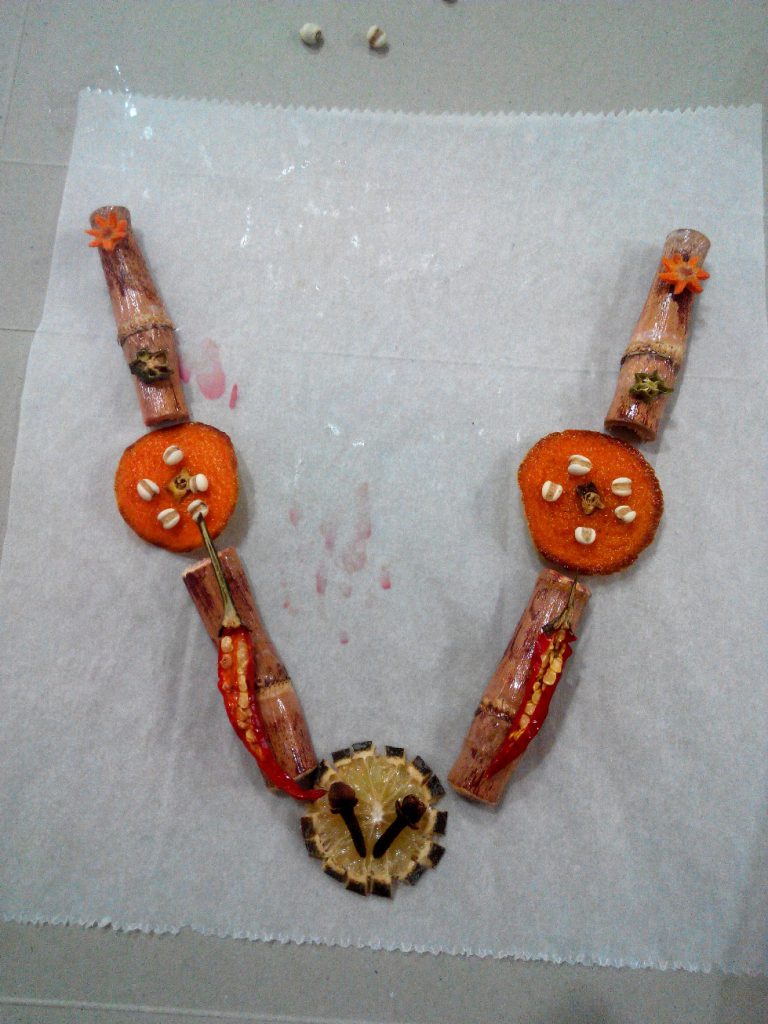
After a while of trying, I have decided to use ikan bilis to form part of the necklace to give people a sense of aversion when they see it.
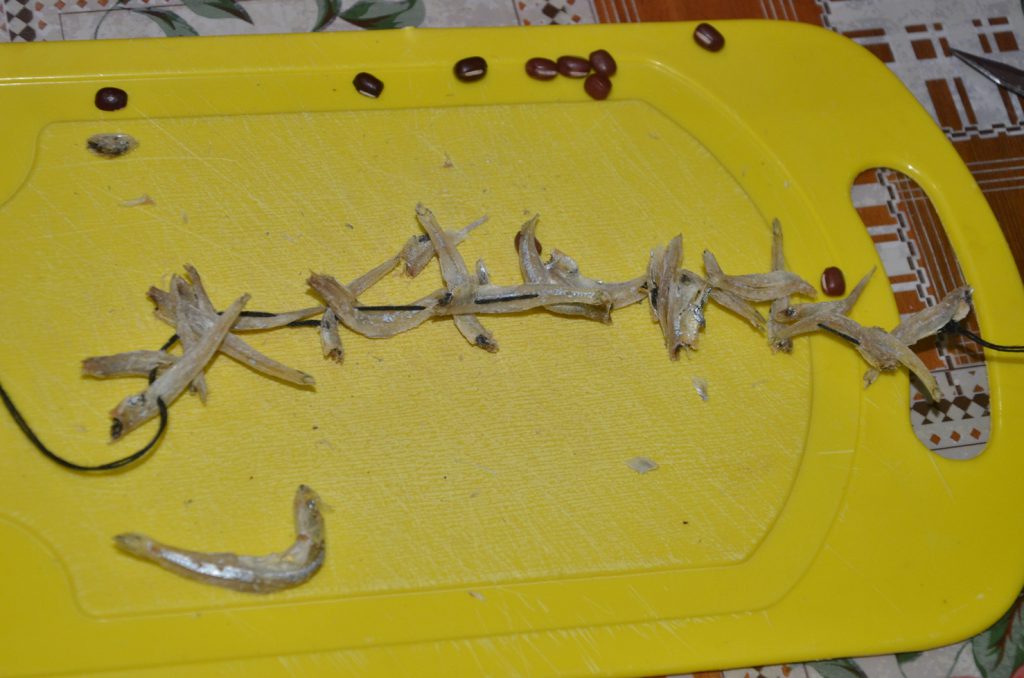
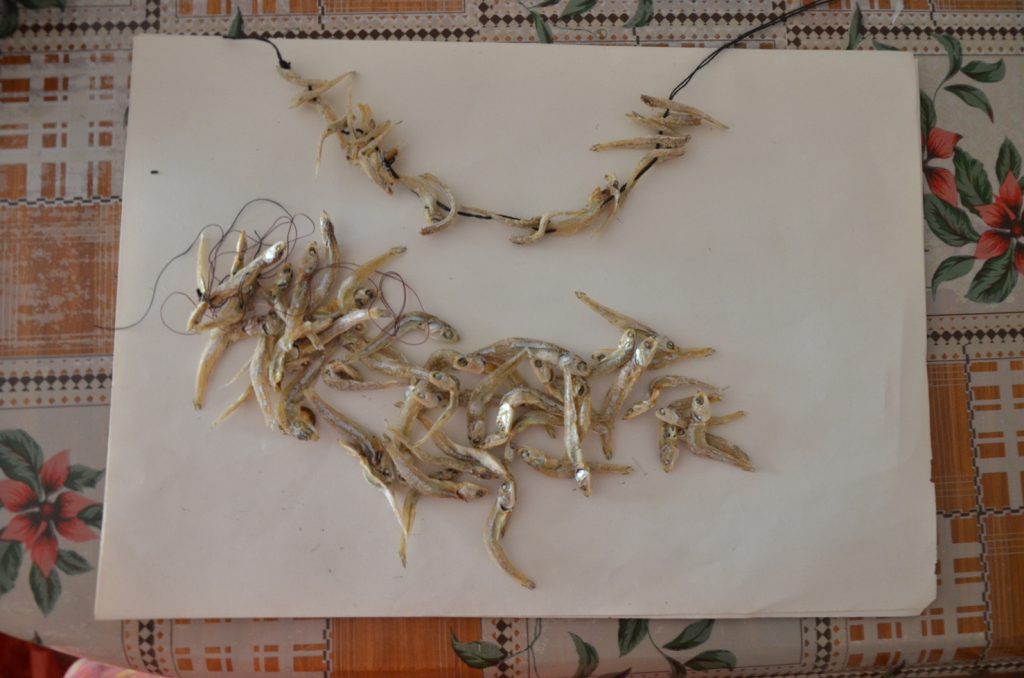


I also attempted to come up with different designs on the orange peel and lime section.



After that, I moved on to the design for my brooch.



After that, I moved on to the design for my earrings. Initially I wanted to use dried prawns but decided to change to orange peels later.
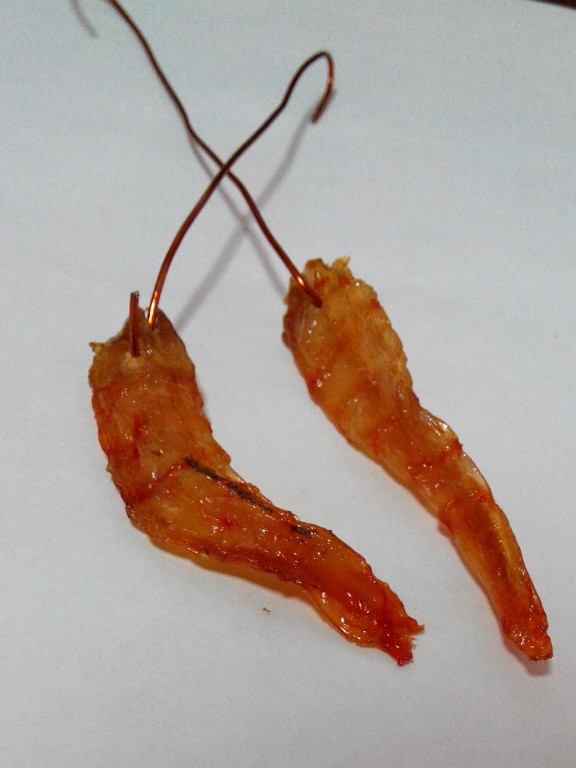




Using strings for the my items, I started to knot them proper with the shamballa knots.
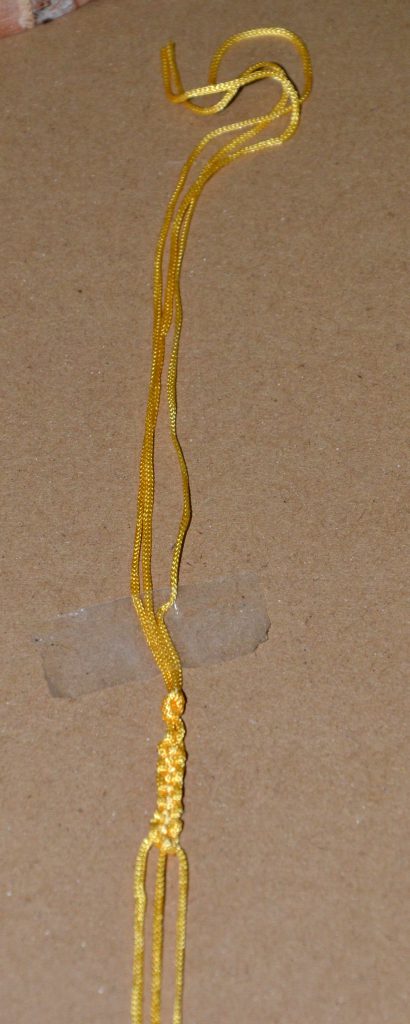
The bracelet for example should look something like this. The middle section with single strings coming out from the 2 sides are the adjustable lengths for the bracelets.
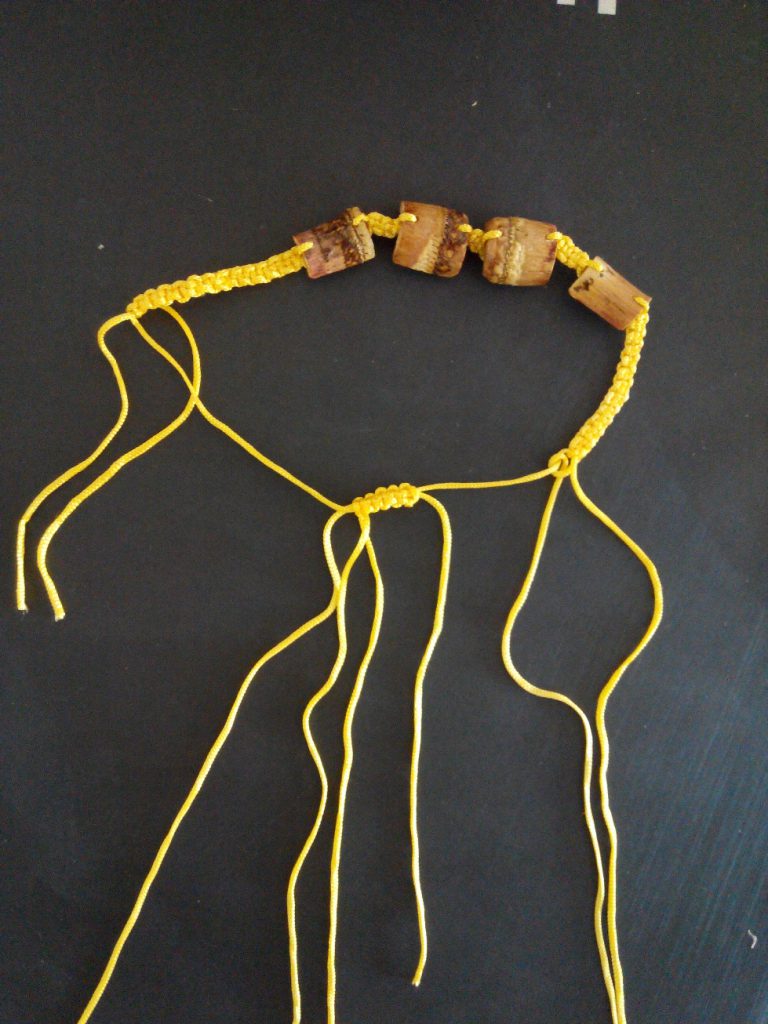
However, after consulting Prof Peter, he commented that the yellow / goldish strings are not very kitschy since the contrast was too high. So, I switched it to a dirty brown instead and redid the knots. Pull the 2 ends to adjust the length. I have also use a black bean with a tiny drilled hole to act as a “bead” at the end.
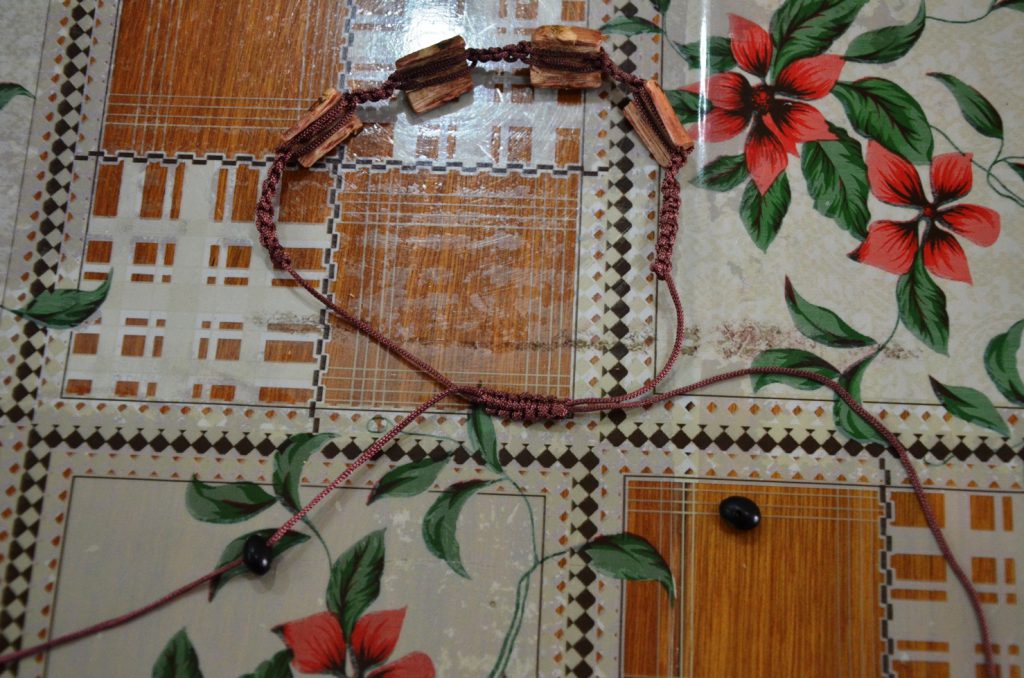
The sugarcane sections for the necklace should be longer.
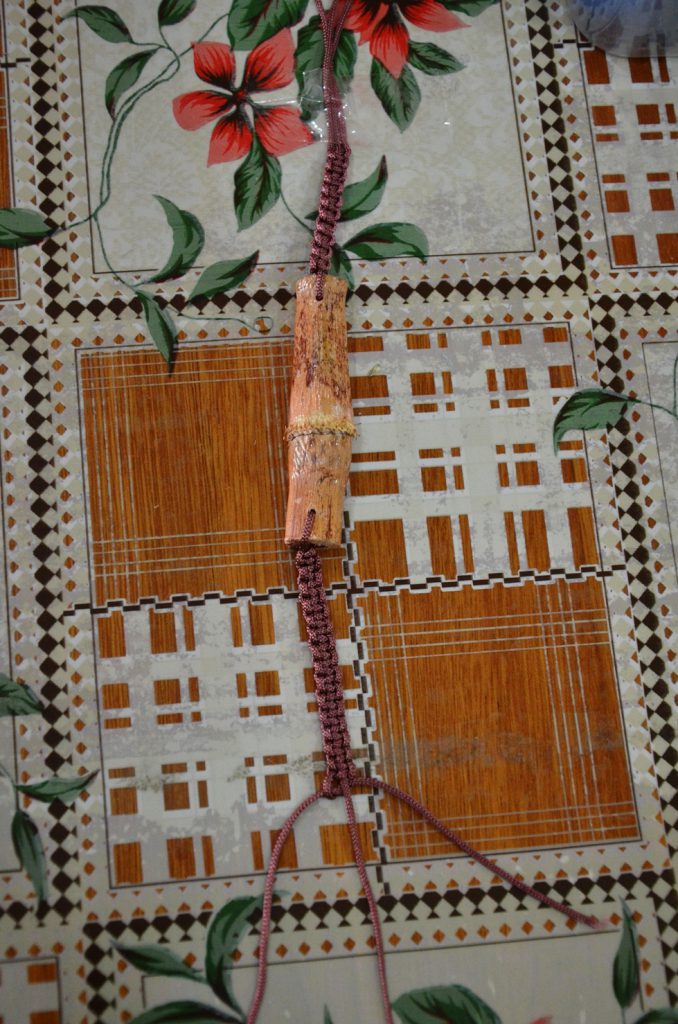
I started stringing things up.
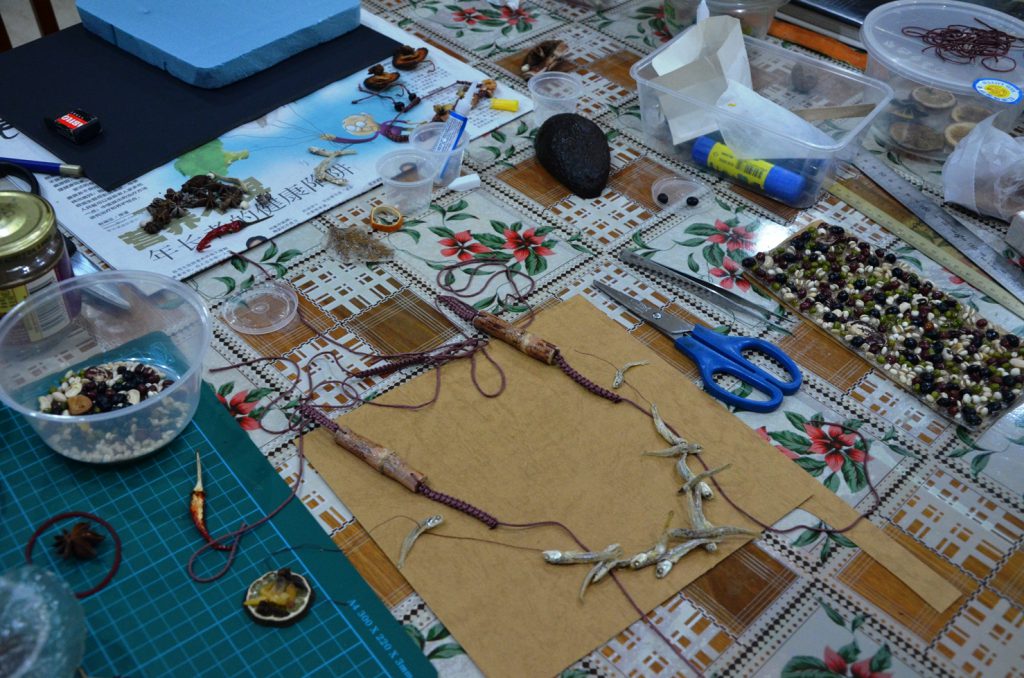
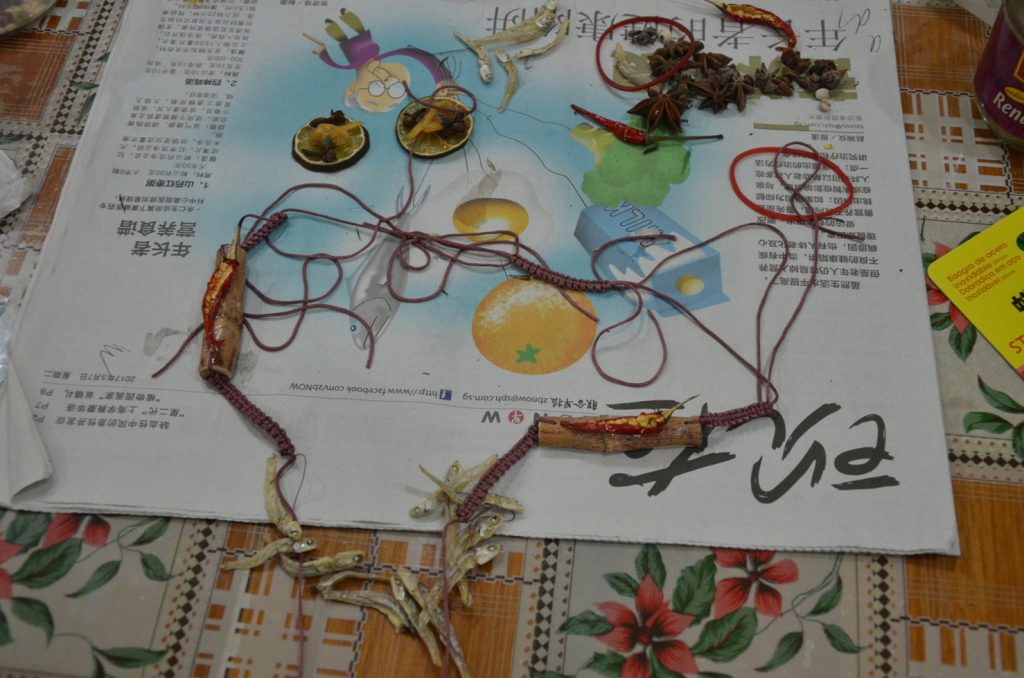
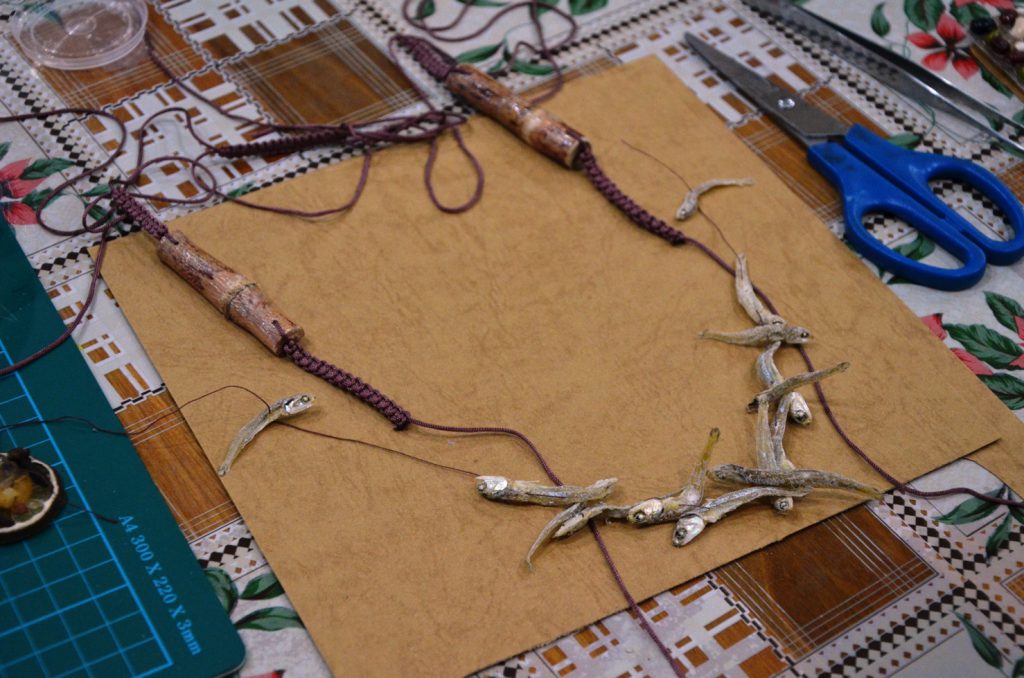
After that, I also thought that maybe adding a 5th item, perhaps a ring, will be good. However, the avocado seed proves to be too big and bulky on the strip of orange peel. Hence I called off the idea since it clashes with a space I have within the jewellery box shown below.

MAKING THE JEWELLERY BOX:
Cooking more pots of bioplastic before sticking on a plastic box for shape.
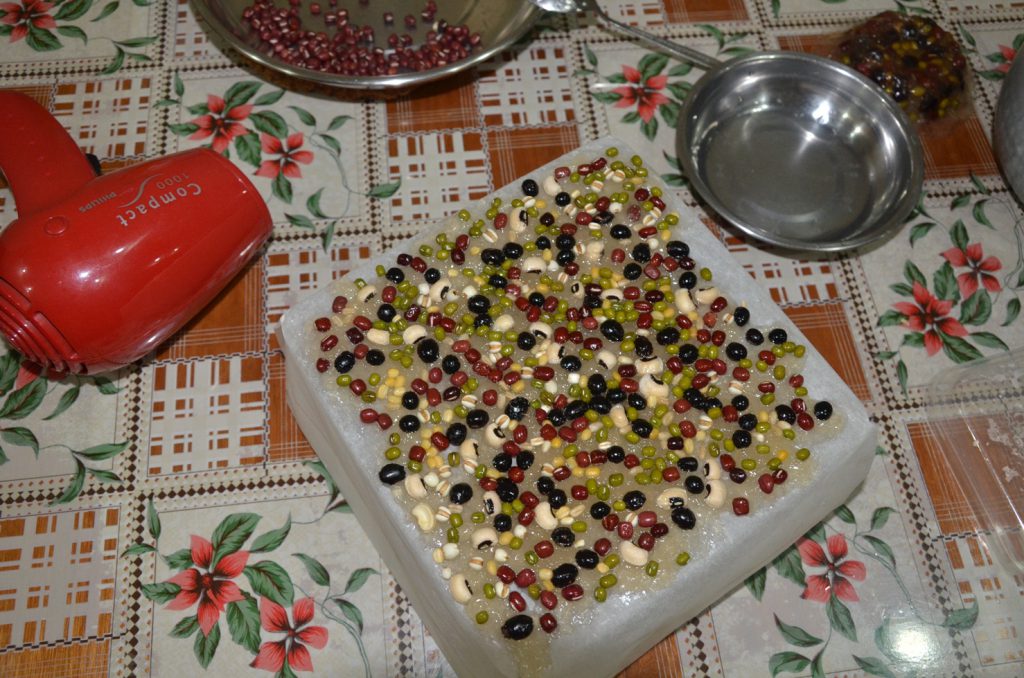
Stick the beans manually one by one on the paste.
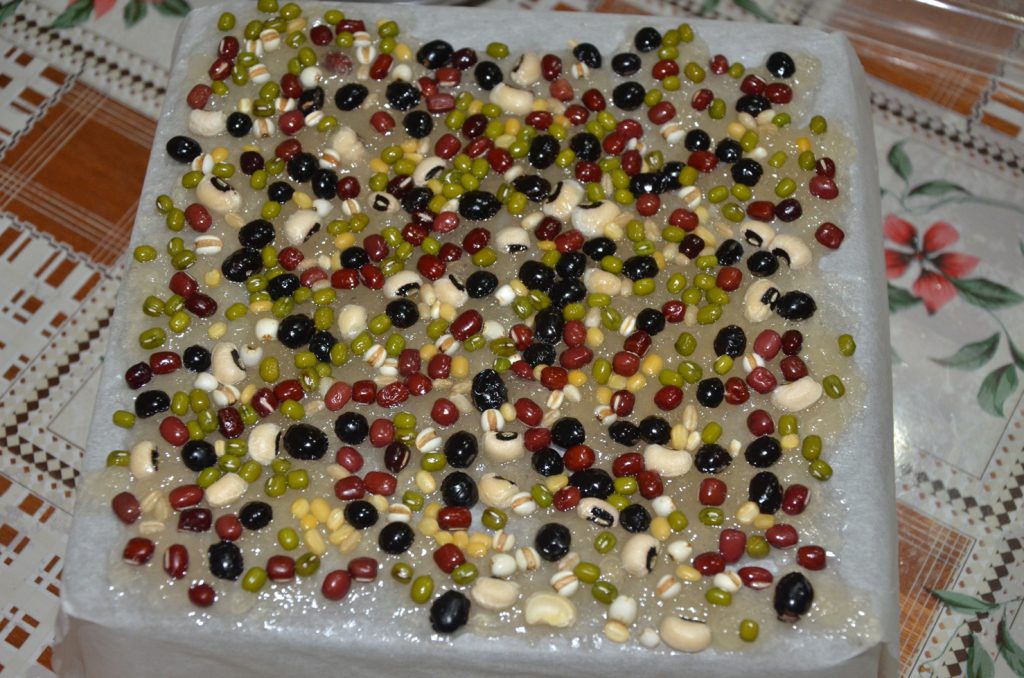
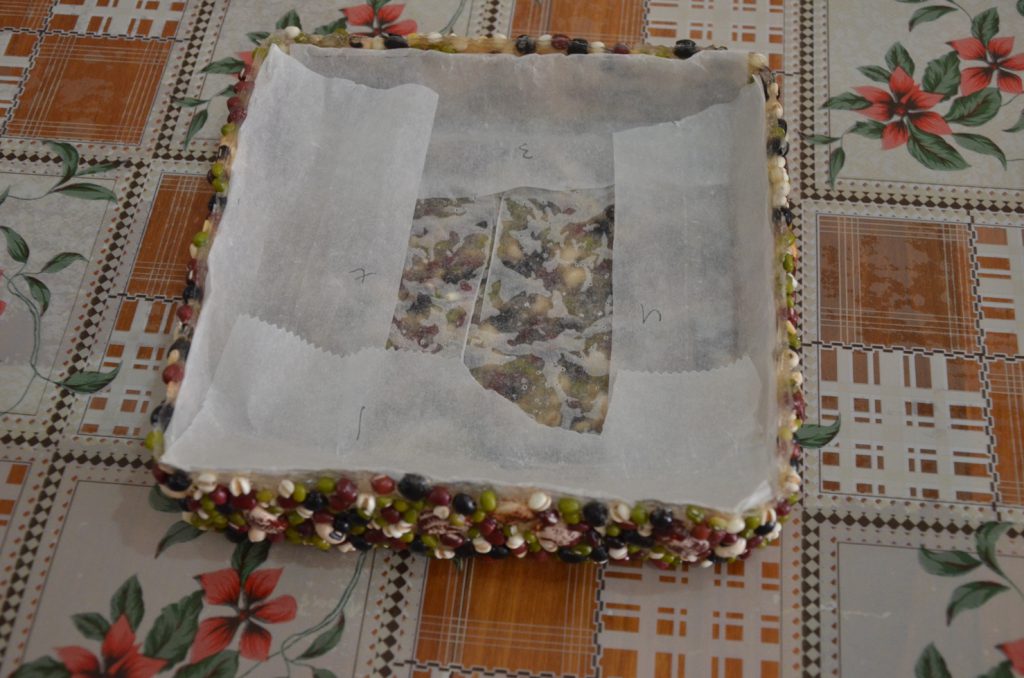
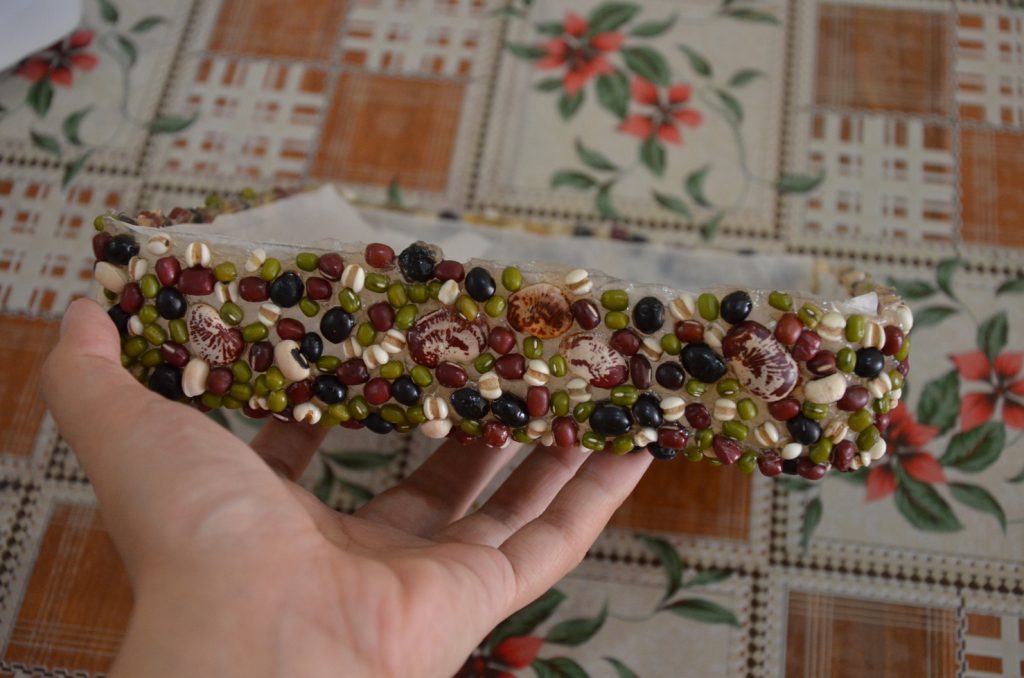
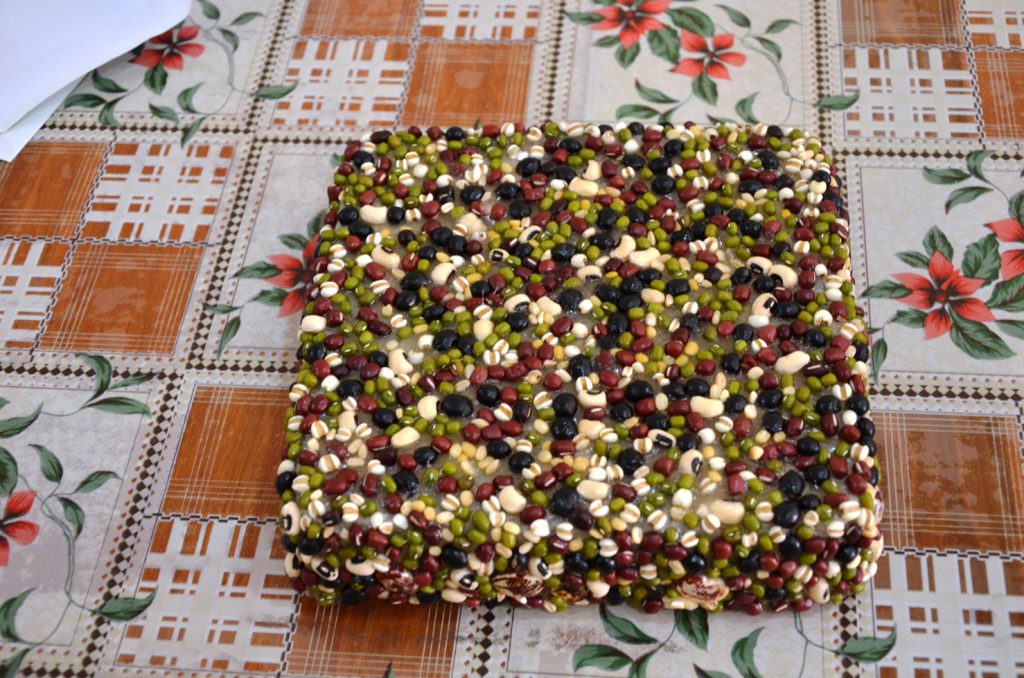
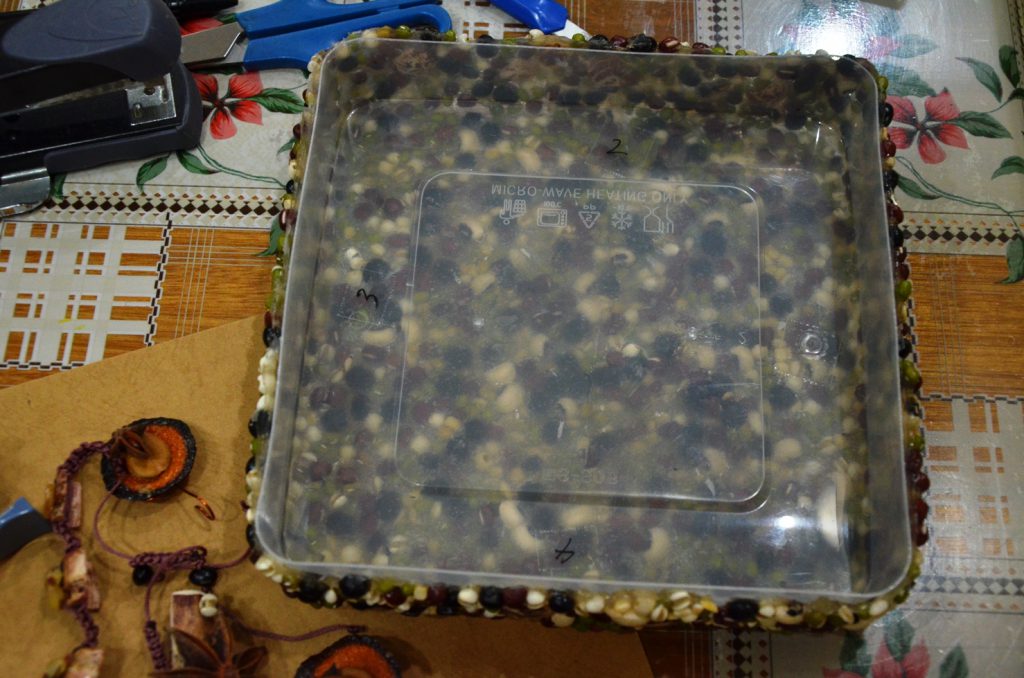
Creating the “doors” / lid for the jewellery box.
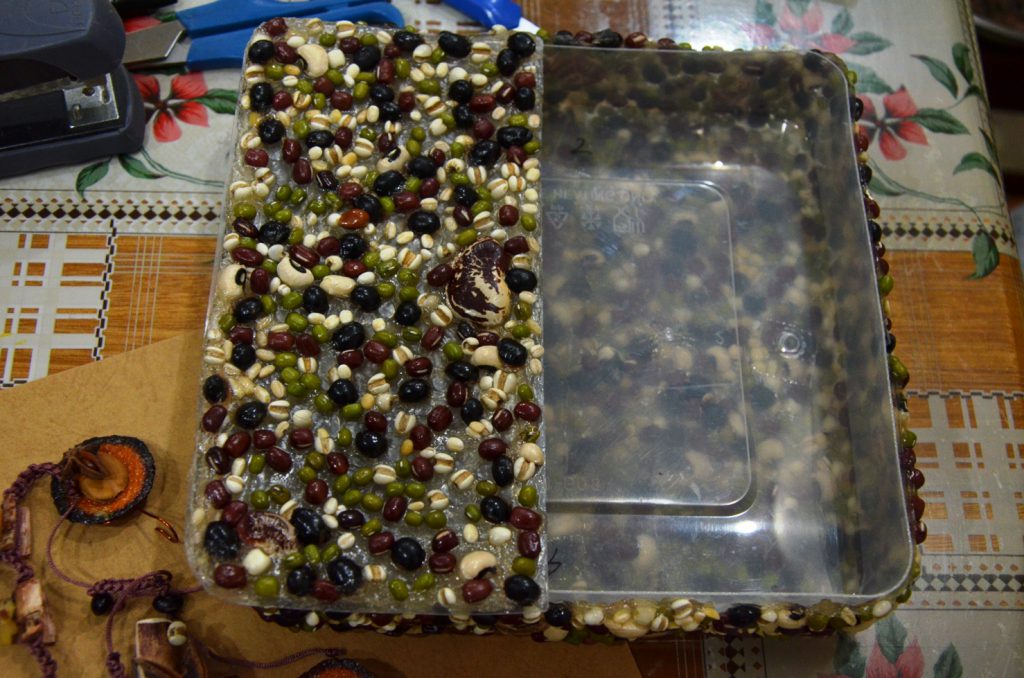
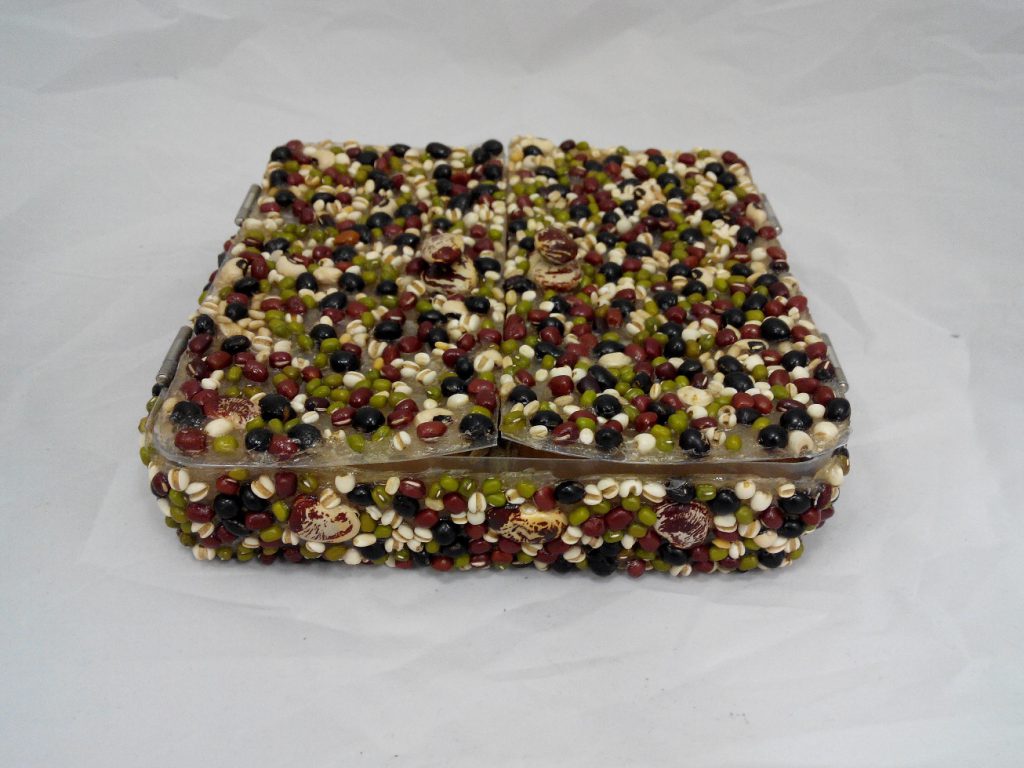
Final content of the box. I used sewing pins to hold the jewellery into place with a foam board behind.
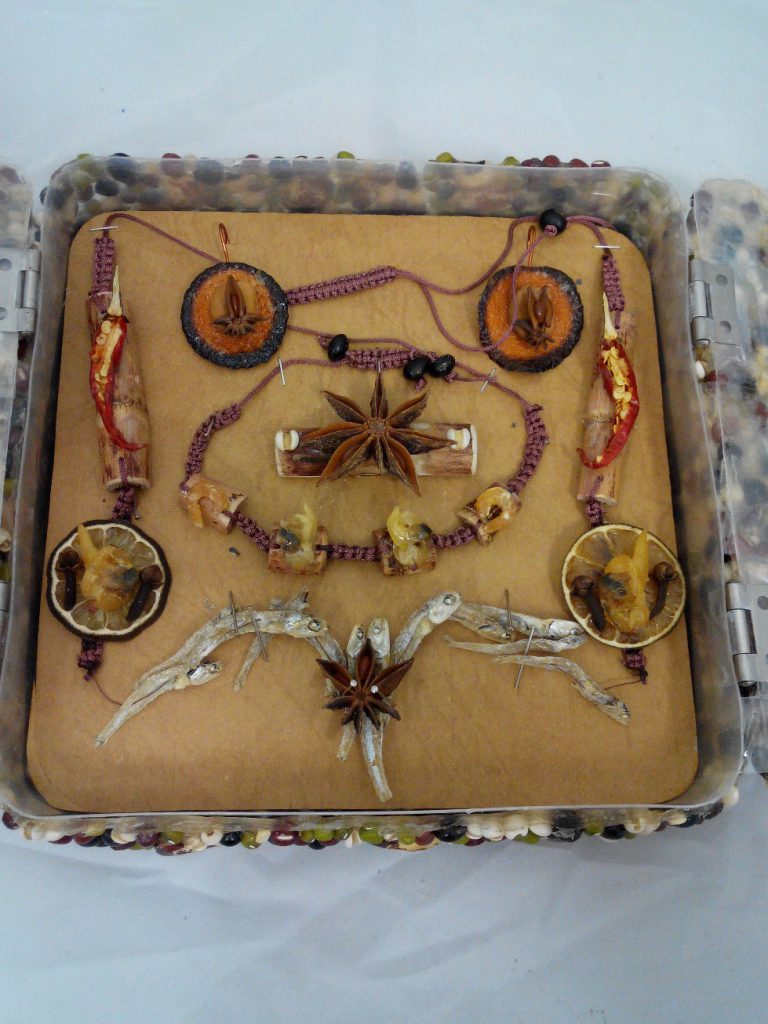
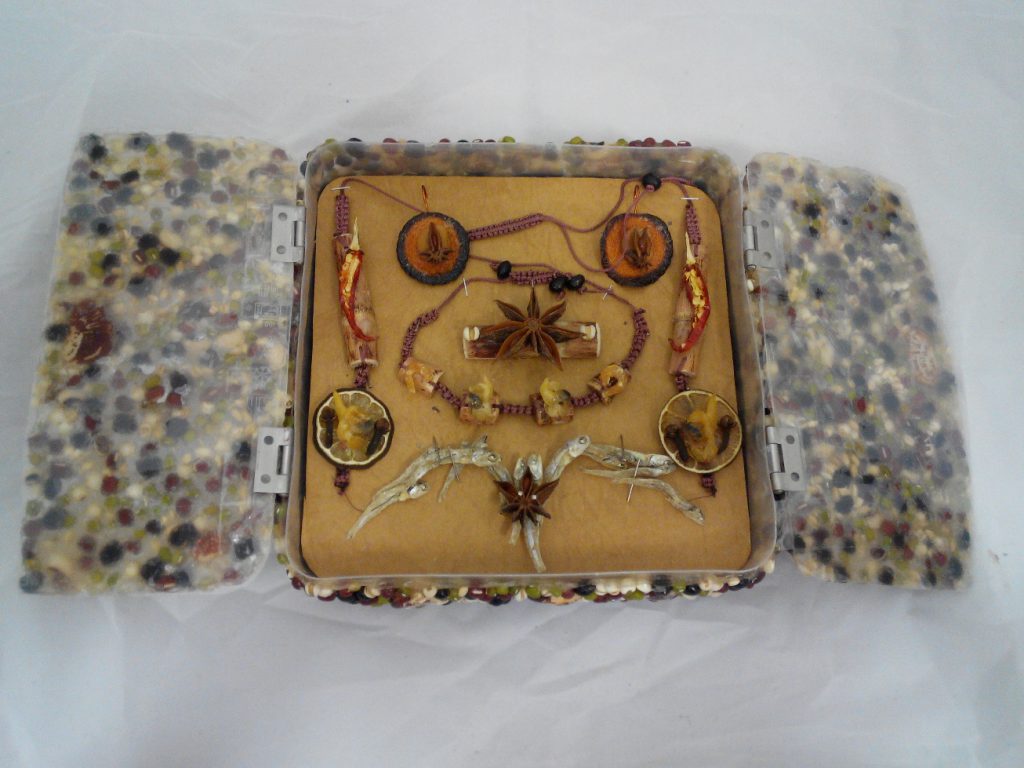
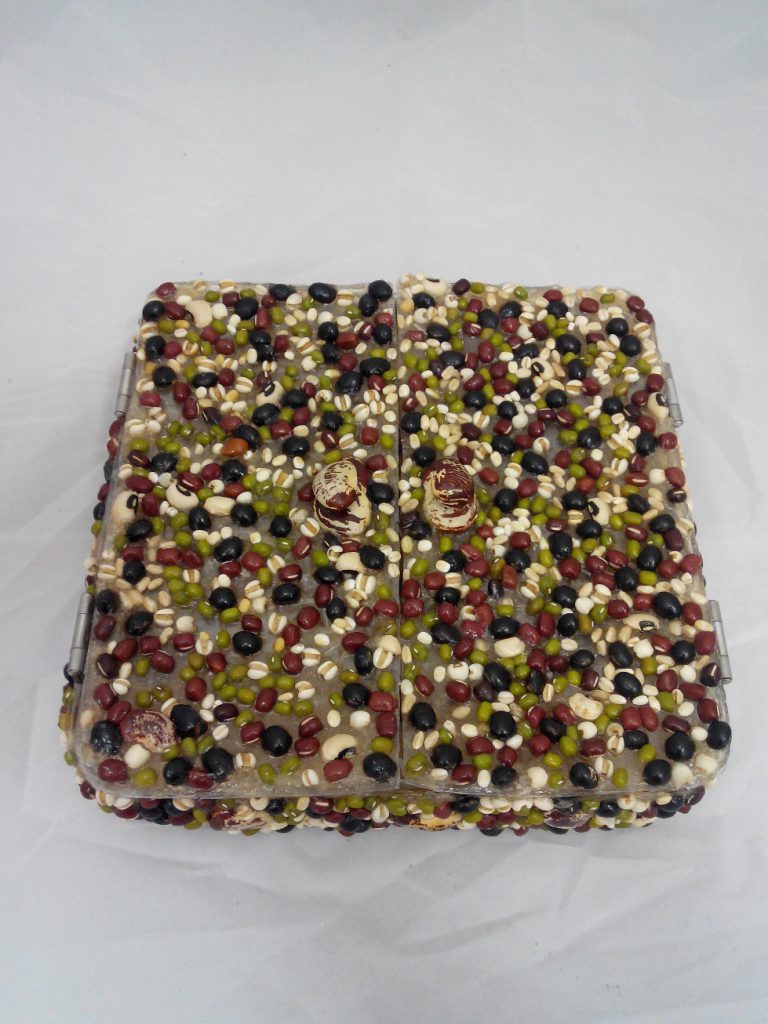
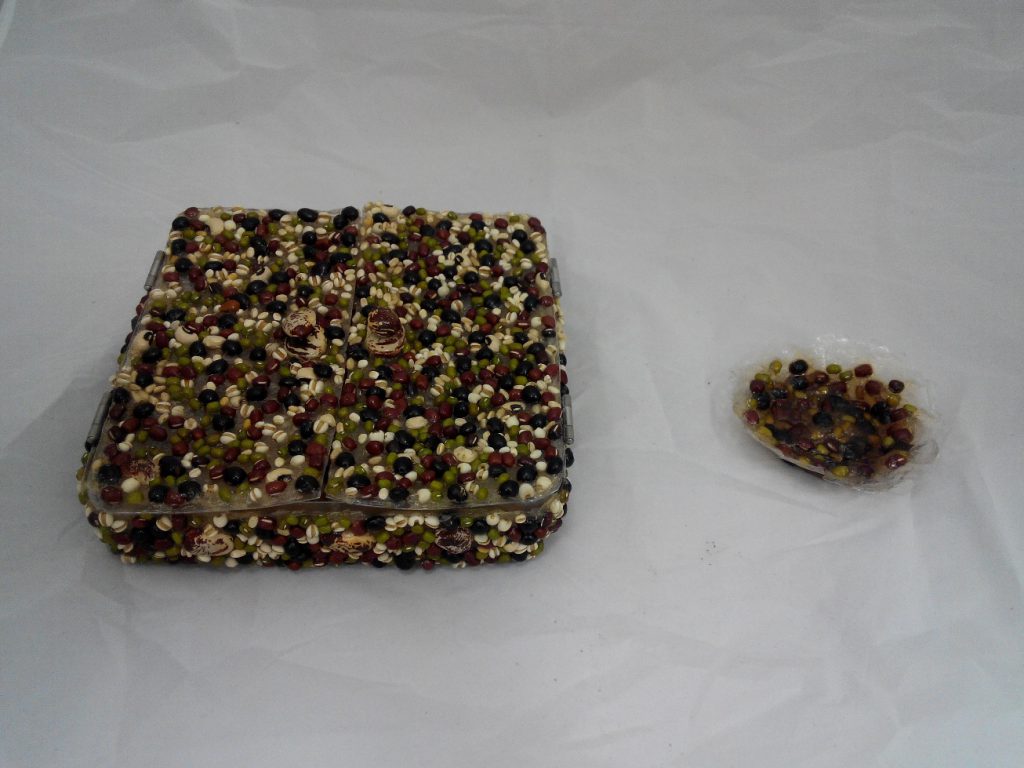
For the final product, the plastic box should not be intact. They were intact for the submission was because the layer of bioplastic takes an awfully long time to be fully dried, approximately 1.5 weeks of sun drying with strong sunlight. It should look something like the bean bowl at the side without any form of artificial plastic.
Reflections:
Initially, when I first received my word “Kitsch”, I felt puzzled because it was my first time hearing this word.
Researching on “Kitsch”:
Meaning of Kitsch: Art, objects, or design considered to be in poor taste because of excessive garishness or sentimentality, but sometimes appreciated in an ironic or knowing way. Kitsch in the verb form as “to render worthless,” classifying kitsch objects by worthless pretentiousness.” Despite its status as a source of pleasure for a mass audience, kitsch is typically considered a negative product and used as a pejorative statement.
Origin of Kitsch: The word “kitsch” entered the German language in the mid-nineteenth century. Kitsch may be derived from the German word kitschen, meaning den Strassenschlamm ausammenscharren (to collect rubbish from the street). “kitsch” first gained common usage in the jargon of Munich art dealers to designate “cheap artistic stuff” in the 1860s and 70s. By the first decades of the twentieth century, the term had caught on internationally. It was utilised to describe both objects and a way of life brought on by the urbanisation and mass-production of the industrial revolution. Kitsch possessed aesthetic as well as political implications, informing debates about mass culture and the growing commercialization of society.
Kitsch Movement: The Kitsch Movement began 15 years ago when Odd Nerdrum declared himself a Kitsch Painter. The movement incorporates the techniques of the Old Masters with narrative, romanticism and emotionally charged imagery. Kitsch painters assert that Kitsch is not an art movement, but a philosophical movement separate from art. According to the Kitsch Movement , Kitsch painters embrace it as a positive term: not in opposition to art, but as its own independent superstructure of values and philosophy which are separate from art.
Examples of Kitsch Paintings:
1) Dawn (1990) by Odd Nerdrum
2) The Singers by Odd Nerdrum
3) “Chinese Girl,” by Vladimir Tretchikoff
4) Zarathustra – the obese cat with Mona Lisa by Svetlana Petrova
Kitsch Movement Philosophy: Kitsch is about humanism, the universal human experience. E.G: Kitsch causes two tears to flow in quick succession. The first tear says: how nice to see children running on the grass! The second tear says: How nice to be moved, together with all mankind, by children running on the grass! The second tear makes kitsch kitsch. -Milan Kundera
Bitter Kitsch or Sweet Kitsch? :
Bitter Kitsch: The depiction of the forbidden, the blasphemous, the vulgar expression of the inexpressible, the provocation of the improper and cruelty.
Sweet Kitsch: It is art that appeals unsubtly and unapologetically to the softer, “sweeter” sentiment.
Kitsch tends to mimic the effects produced by real sensory experiences [compare simulation/simulacra , presenting highly charged imagery, language, or music that triggers an automatic, and therefore unreflective, emotional reaction.
E.G. A bar stool whose legs are actual, stuffed DEER legs.) These are deemed as morally unacceptable subject matter, evoking the wrong emotions and provoking the wrong reactions (e.g disgust and nausea)
Hence, ‘kitsch art’ is closely associated with ‘sentimental art’ and melodrama.
What is common for kitsch? :
The fact that to brand visual art as “kitsch” is generally pejorative.
According to this famous the cultural critic and philosopher, Walter Benjamin : kitsch is, unlike art, a utilitarian object lacking all critical distance between object and observer; it offers instantaneous emotional gratification without intellectual effort, without the requirement of distance, without sublimation.
Modern Day Context: In Reality, although kitsch has several meanings and it may be ambiguous at times, it is still commonly used to label anything seen being in poor taste.
Initial ideas:
After consulting Prof Peter, I feel that perhaps I can focus on sweet kitsch. I thought of making soft toys made from old clothes with reference to cartoons that had already faced out. (E.G. popular cartoons in the 1950- 1970s).
Here is a printscreen from my word document:
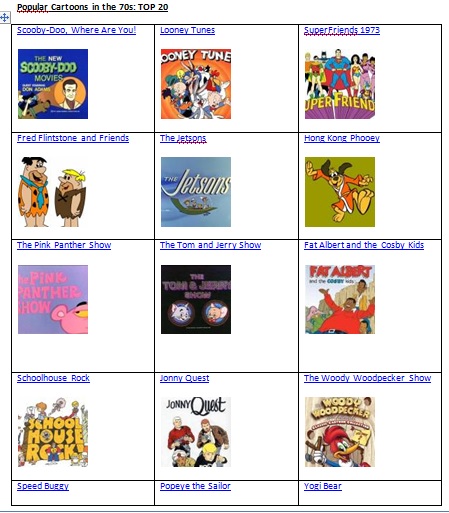
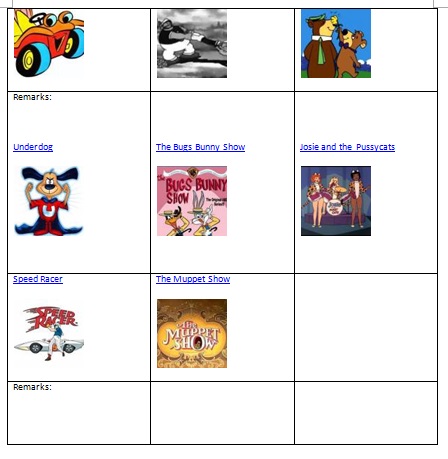
Top Ten TV Cartoon Characters from the 1950s and 1960s
Top Cat Snagglepuss Deputy Dawg Huckleberry Hound Fred Flintstone
Tom & Jerry Yogi Bear The Jetsons Mr. Magoo Bullwinkle
However, I still feel that it may be a common approach to the project. Hence, I went to research further and come up with the idea of making jewellery using food. The critique of kitsch in this sense is that kitsch is a mimicry and a representation of something common using common items to make it uncommon.
The overall experience with this project was very good as I got to experiment was a lot of materials and things I have not previously thought about!
References for the kitsch information above:
http://artbabel.blogspot.sg/2010/04/philosophy-of-kitsch-kant-kunst-and.htmlhttp://www.jstor.org.ezlibproxy1.ntu.edu.sg/stable/pdf/431644.pdfhttp://petasvintageboutique.weebly.com/where-the-heart-is/kitsch-arthttp://wilburwhateley.tumblr.com/post/118823047423/dustlickers-2000-and-dawn-1990-by-odd-nerdrumhttps://www.demilked.com/fat-cat-zarathustra-classical-paintings-svetlana-petrova/https://www.theguardian.com/artanddesign/jonathanjonesblog/2013/jan/28/kitsch-art-love-loathe-jonathan-joneshttp://www.thefreedictionary.com/kitschyhttps://en.oxforddictionaries.com/definition/kitschhttp://csmt.uchicago.edu/glossary2004/kitsch.htmhttp://www.huffingtonpost.com/brandon-kralik/the-dawn-of-the-kitsch-mo_b_4013483.htmlhttp://www.widewalls.ch/kitsch-art/http://edition.cnn.com/2013/03/19/world/europe/kitsch-mona-lisa-auction-tretchikoff/
